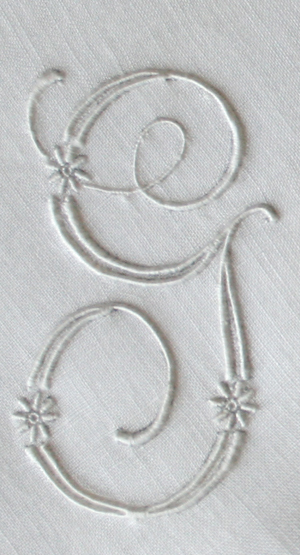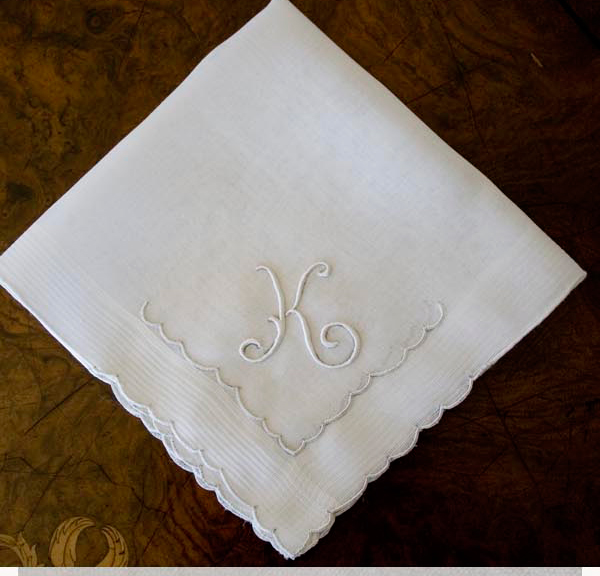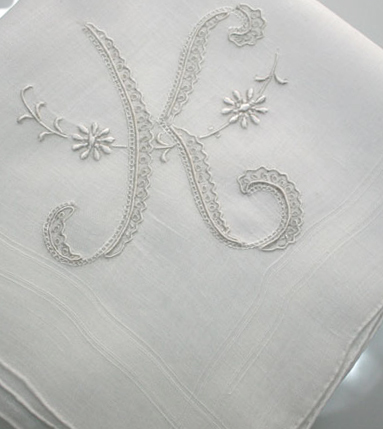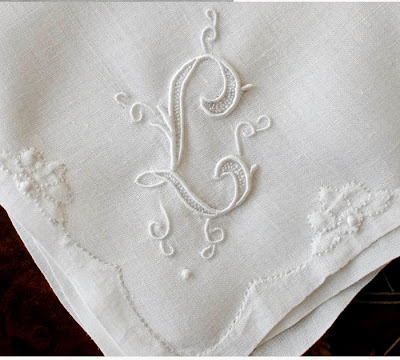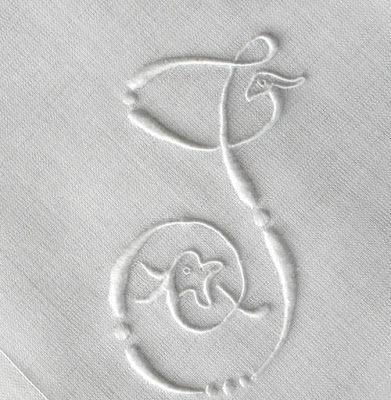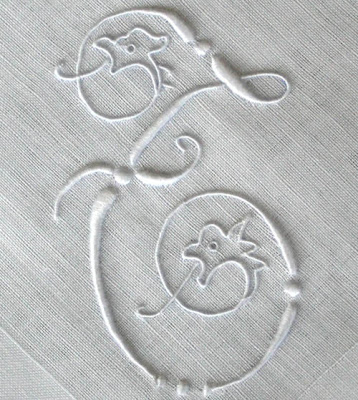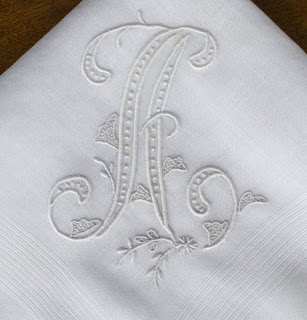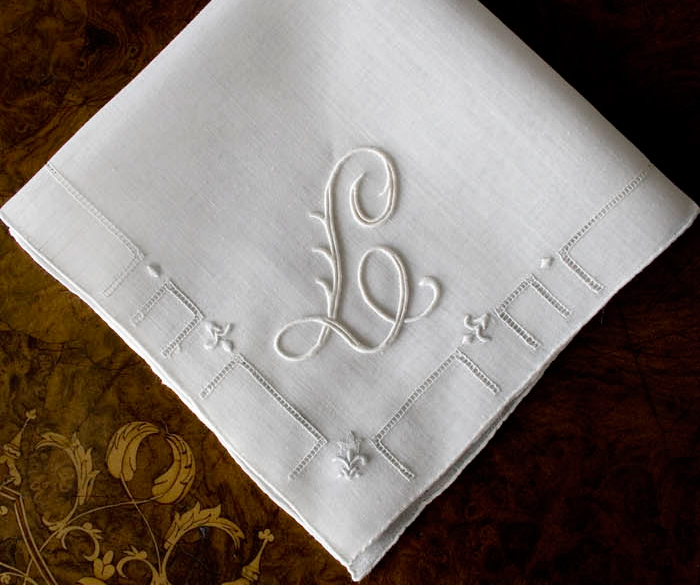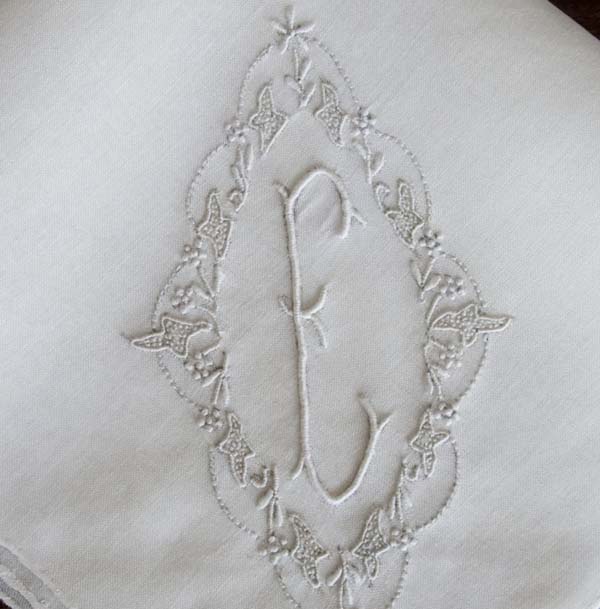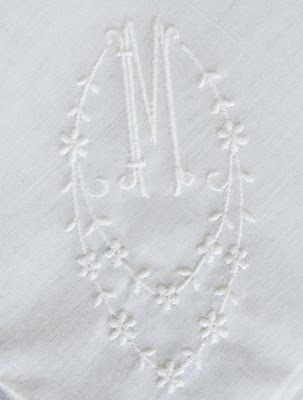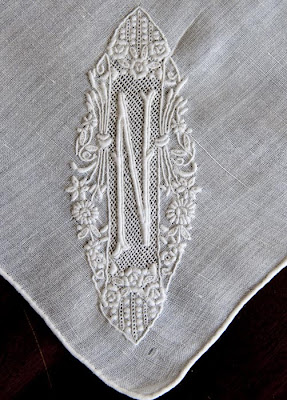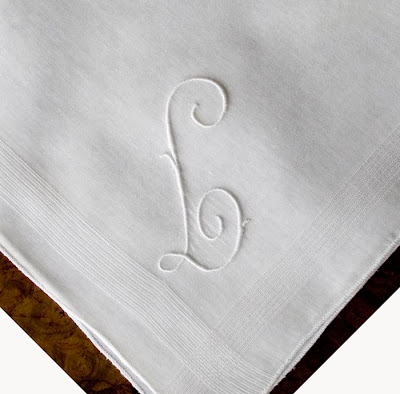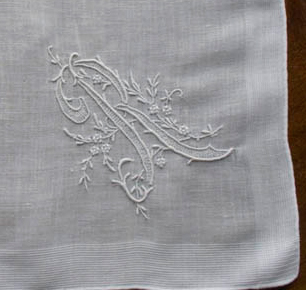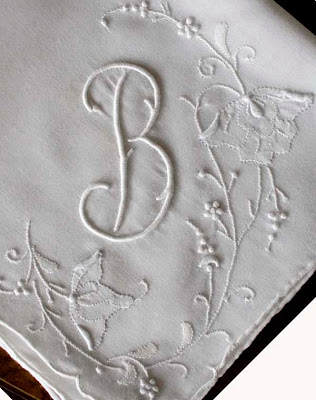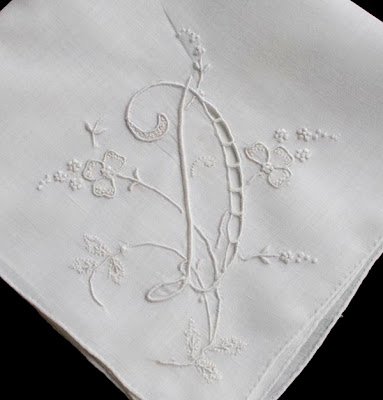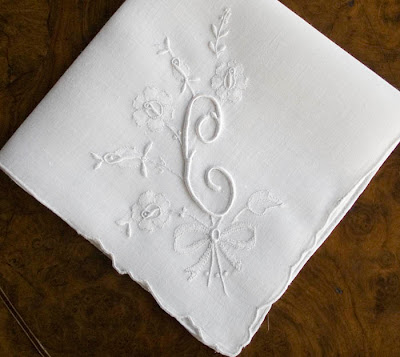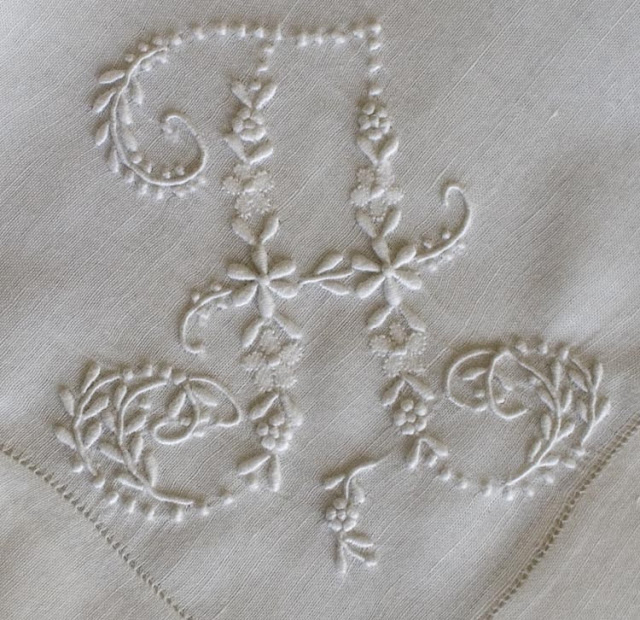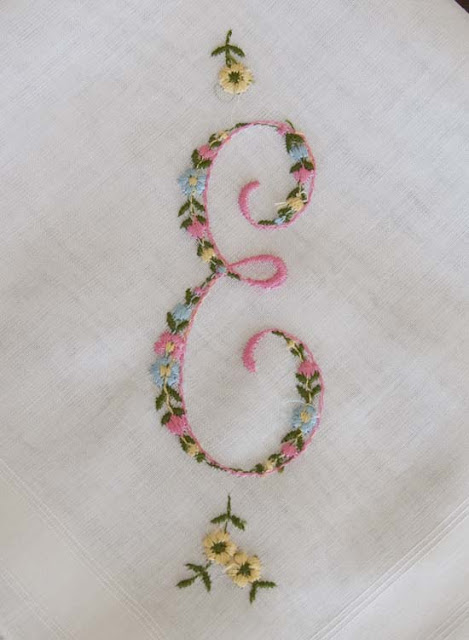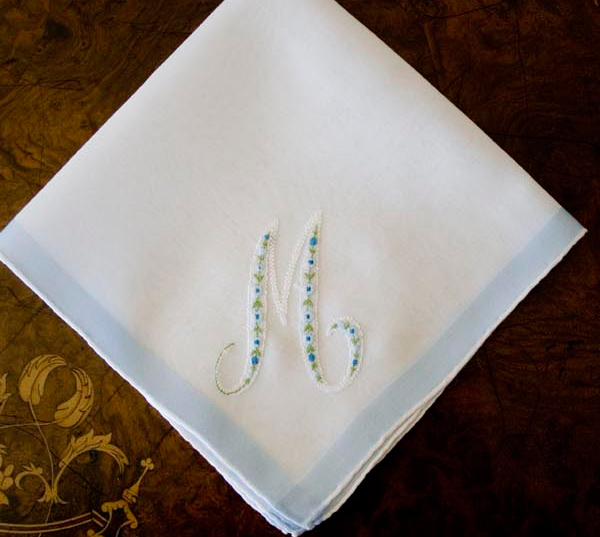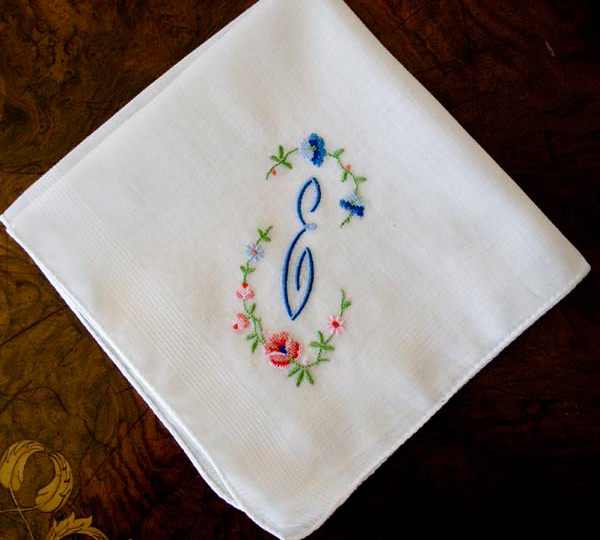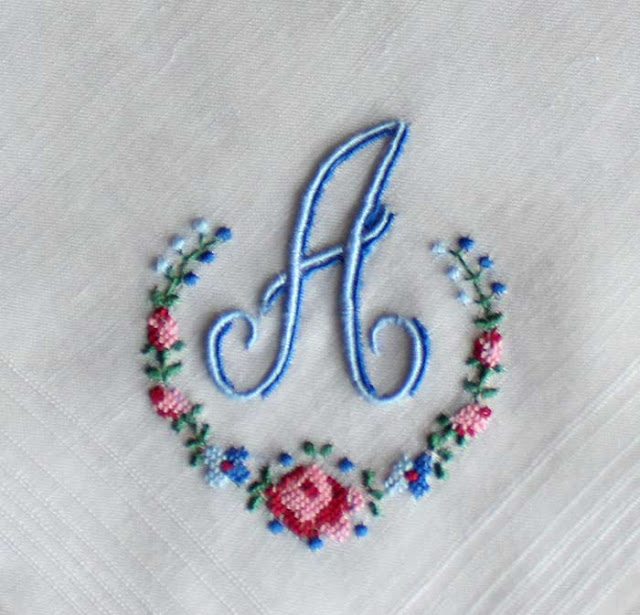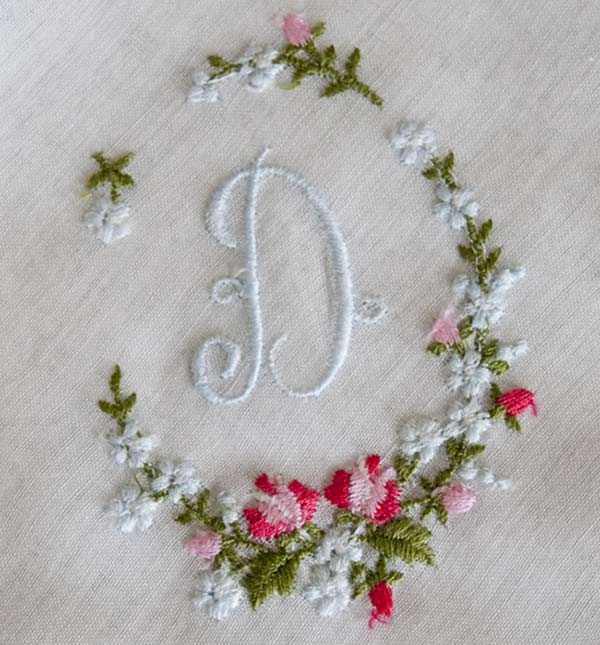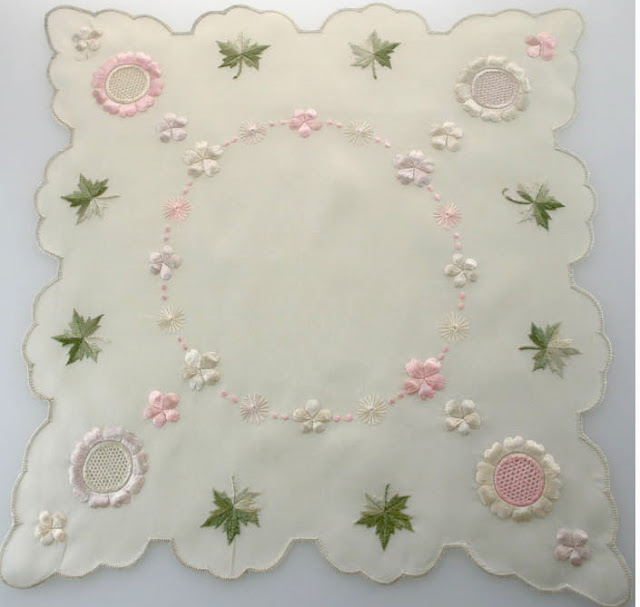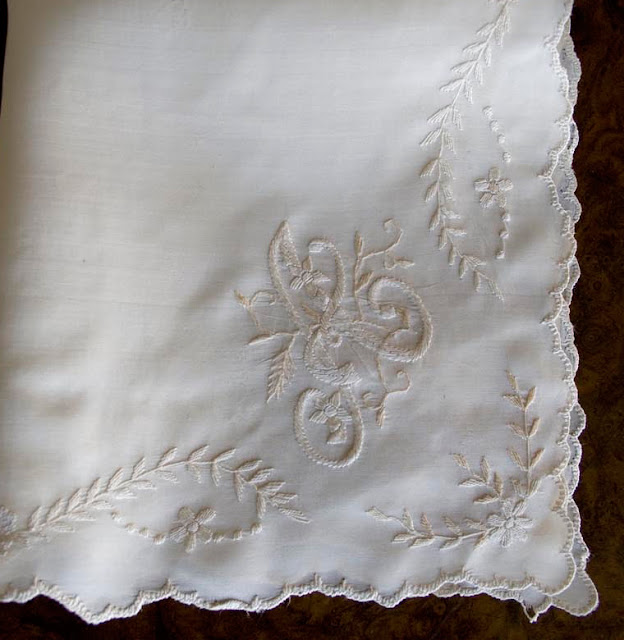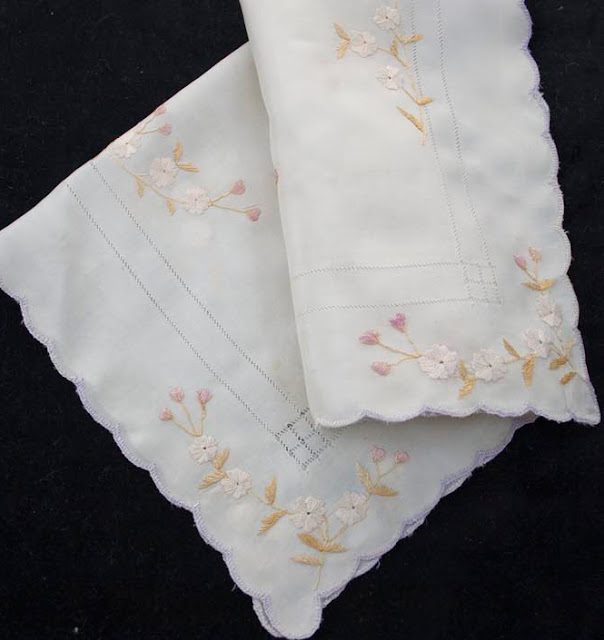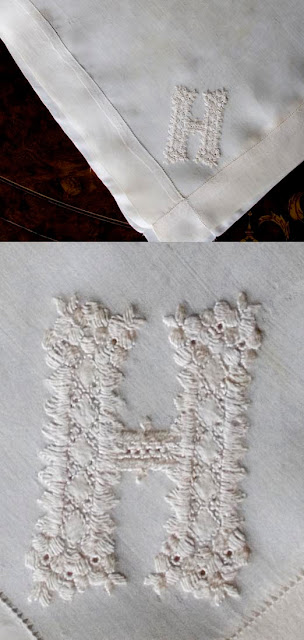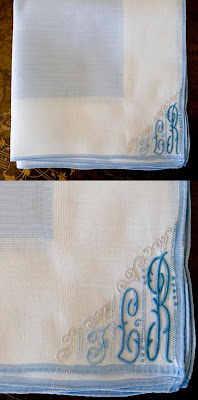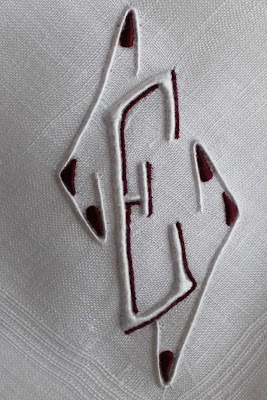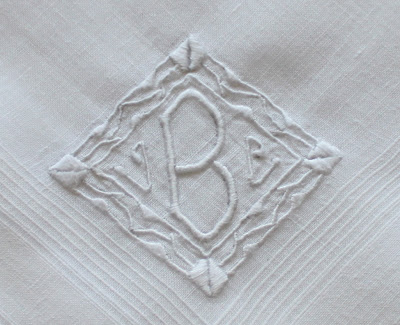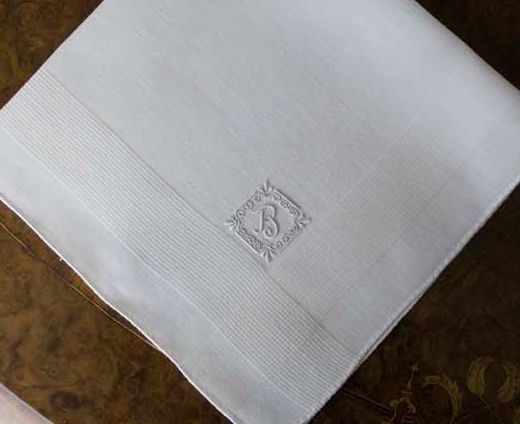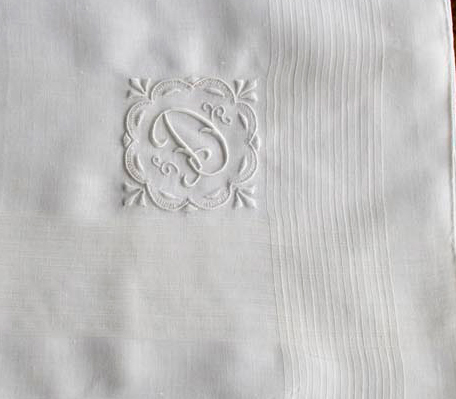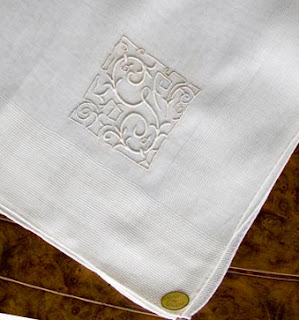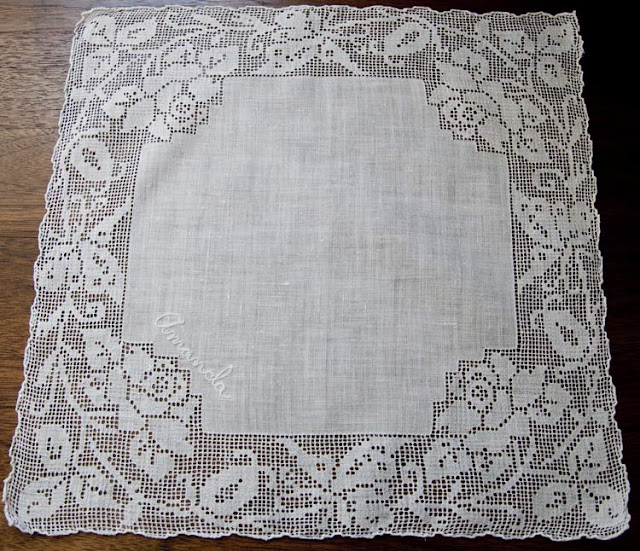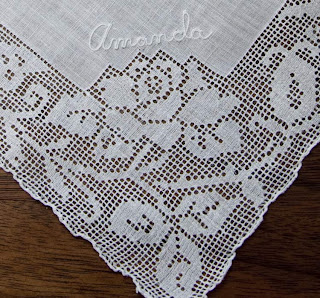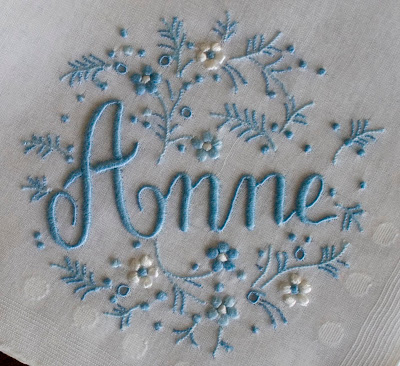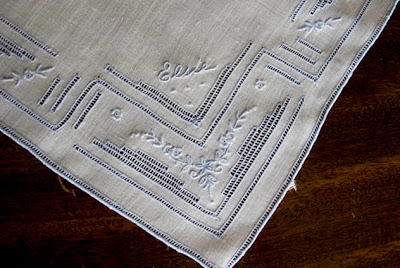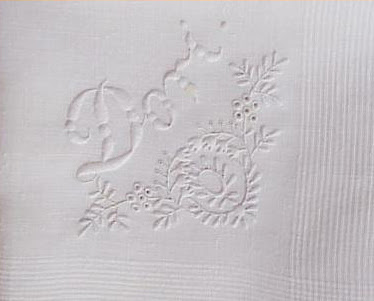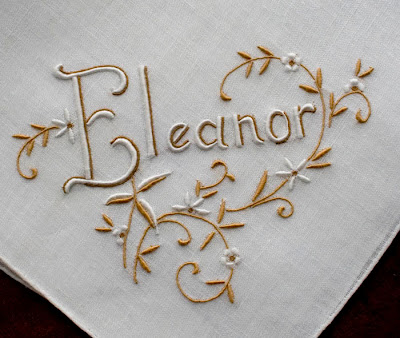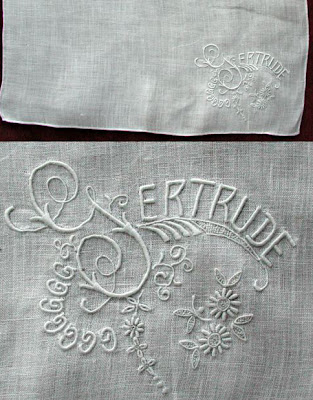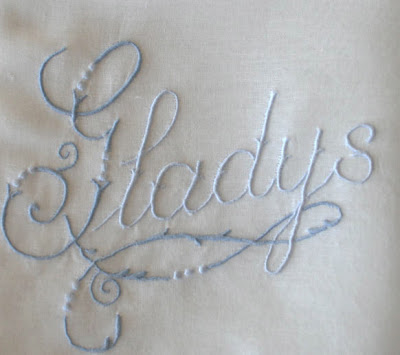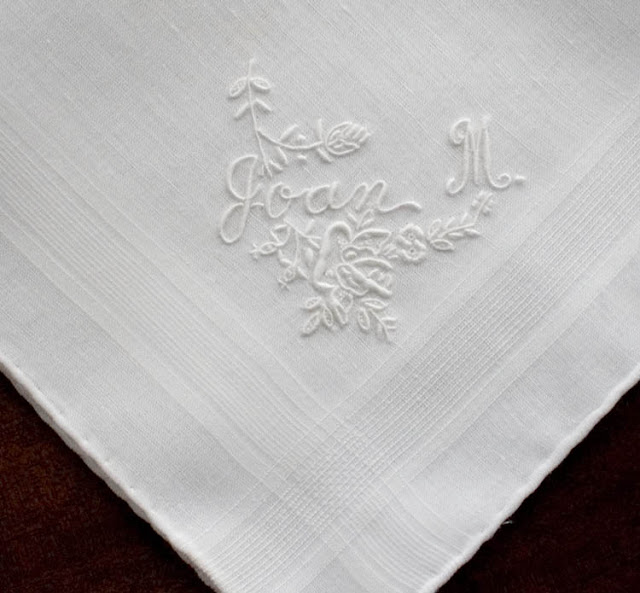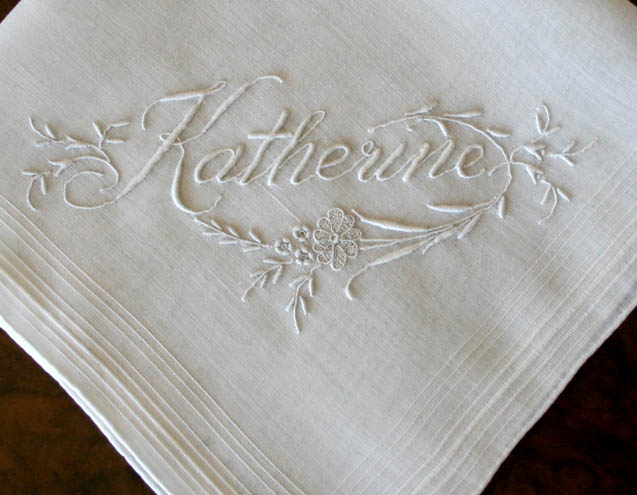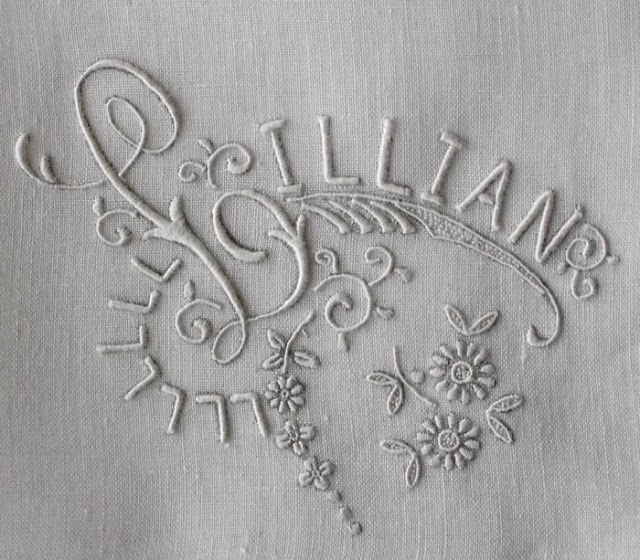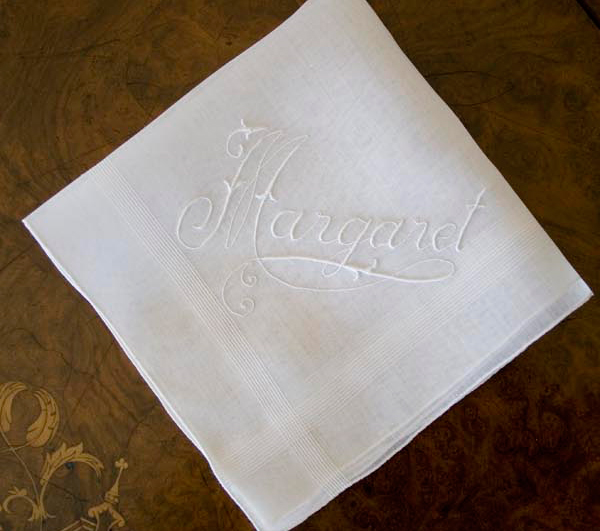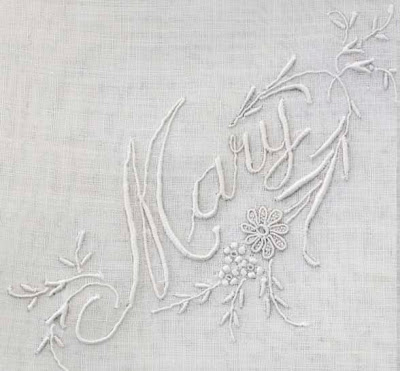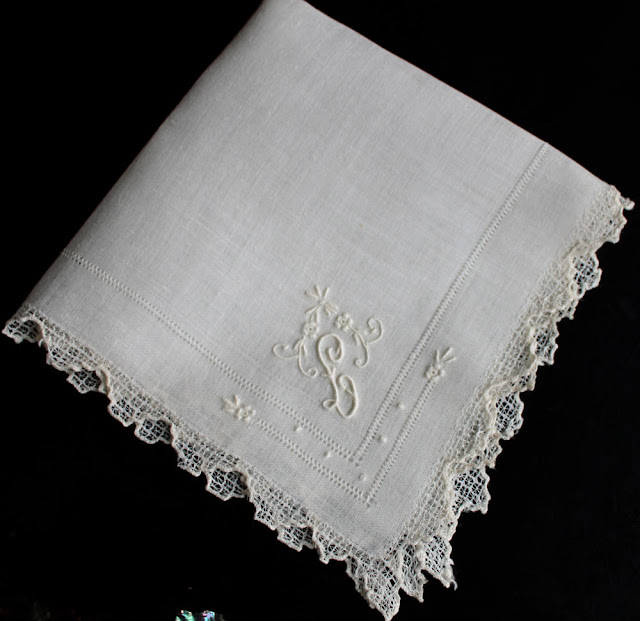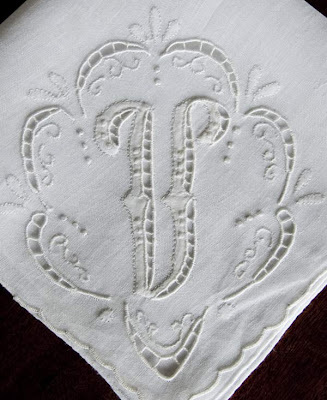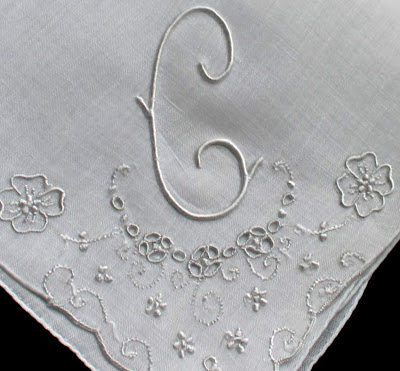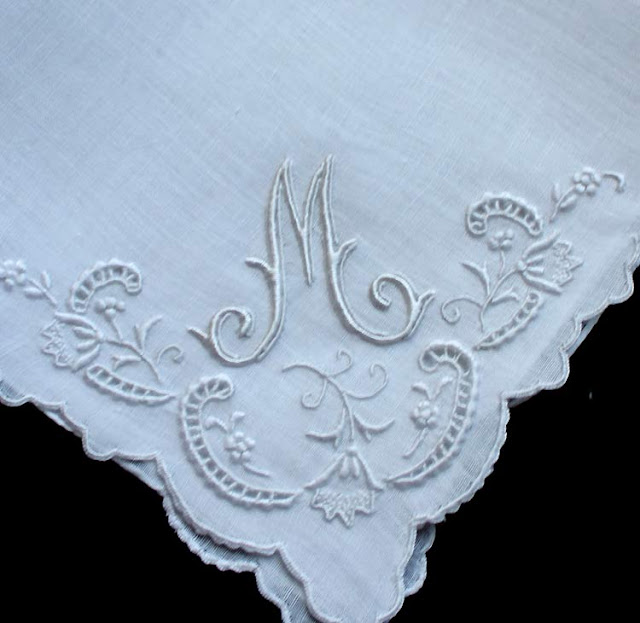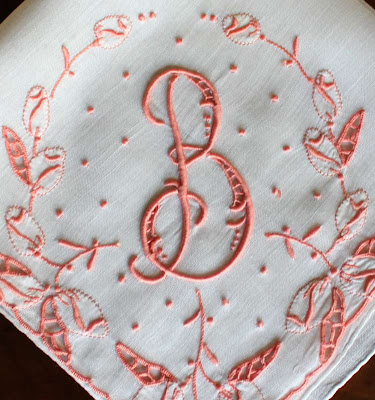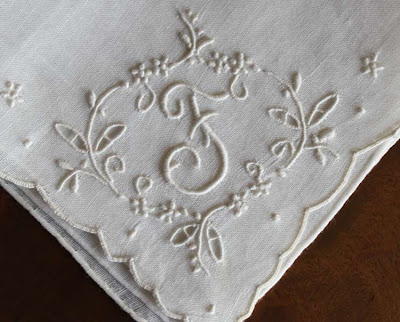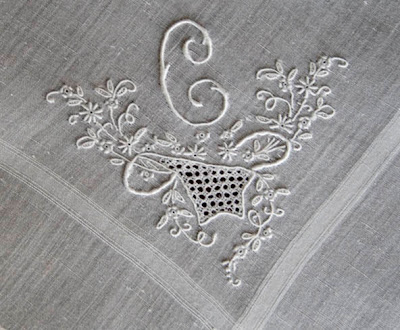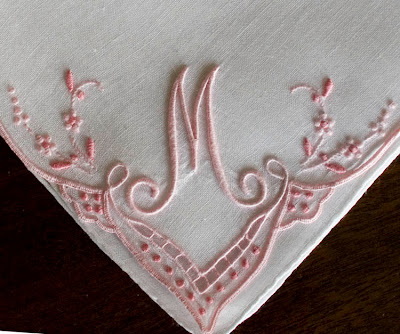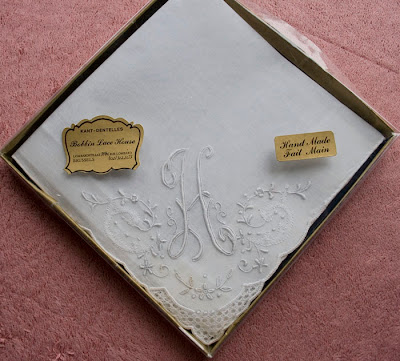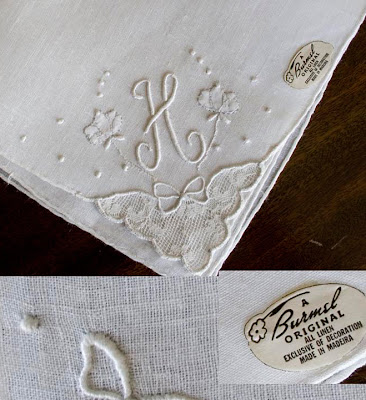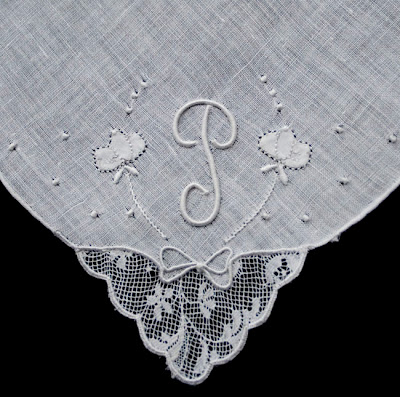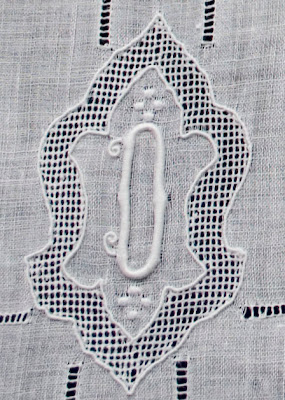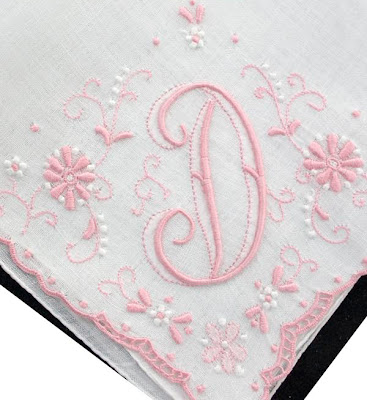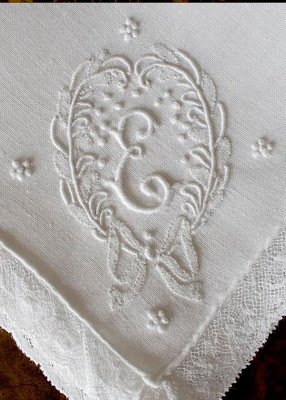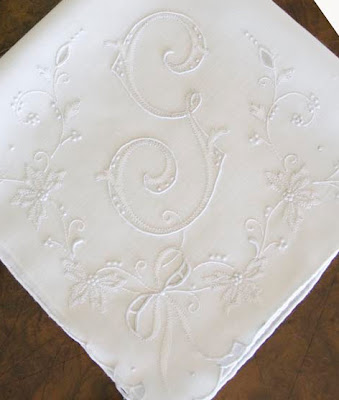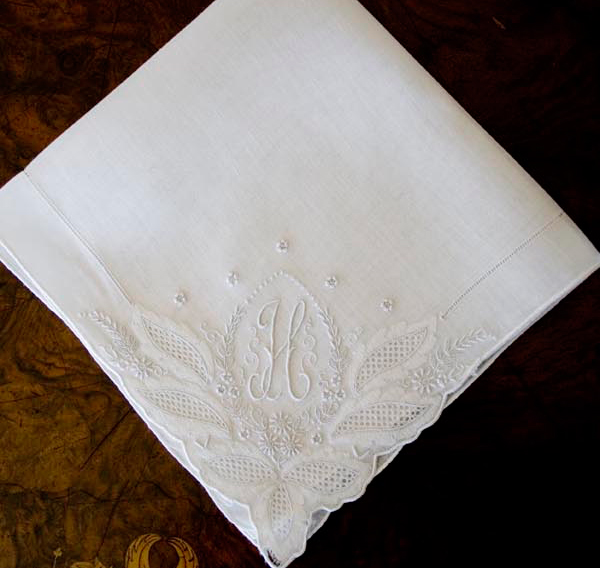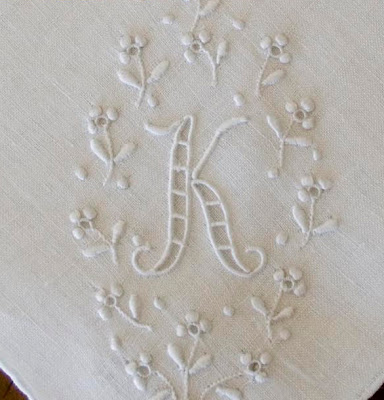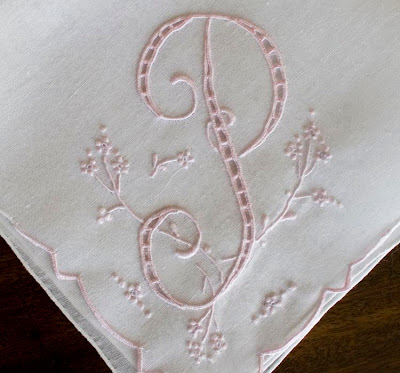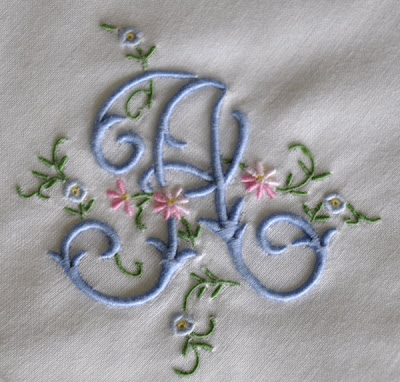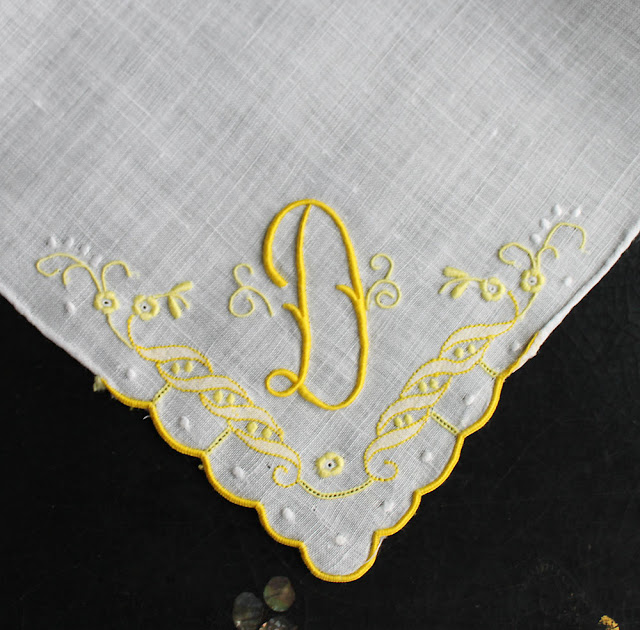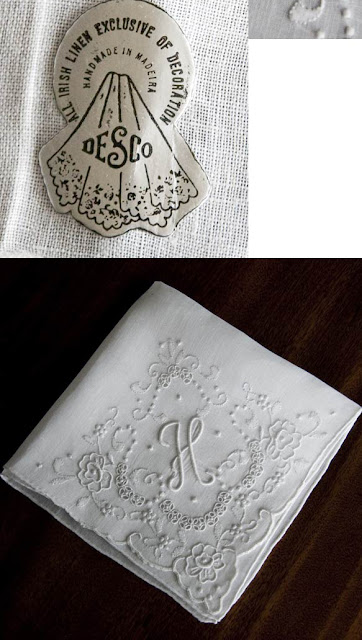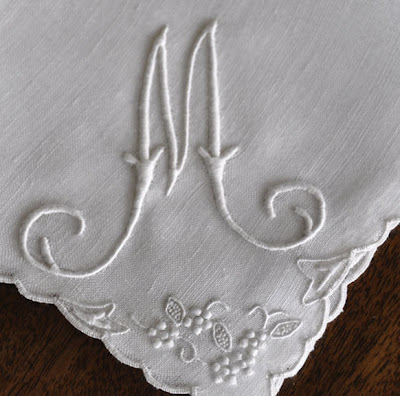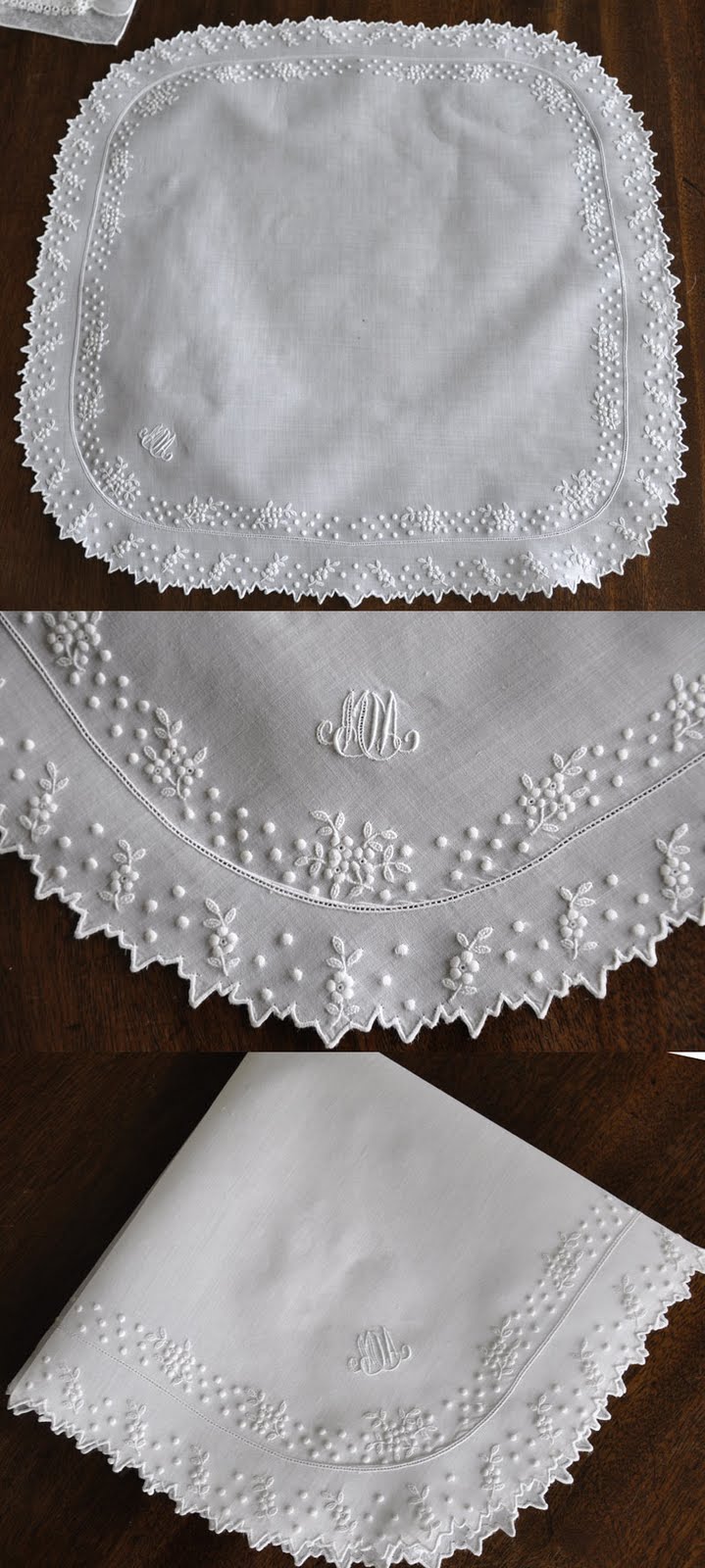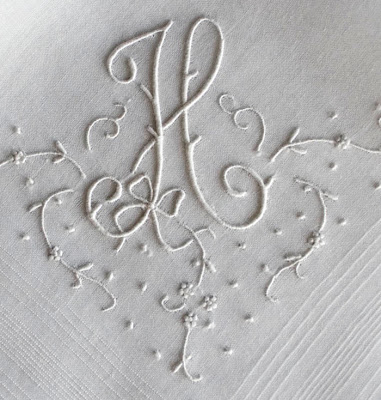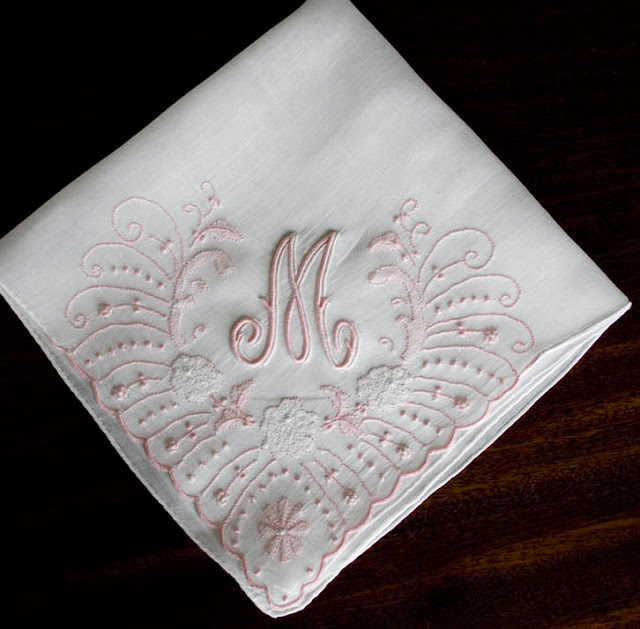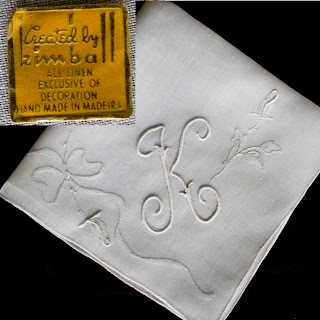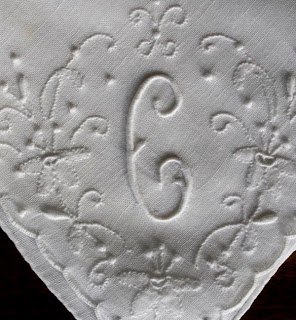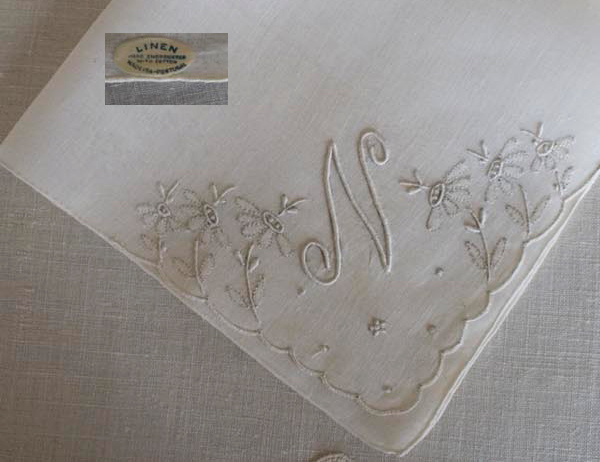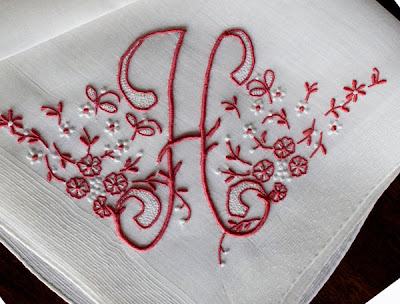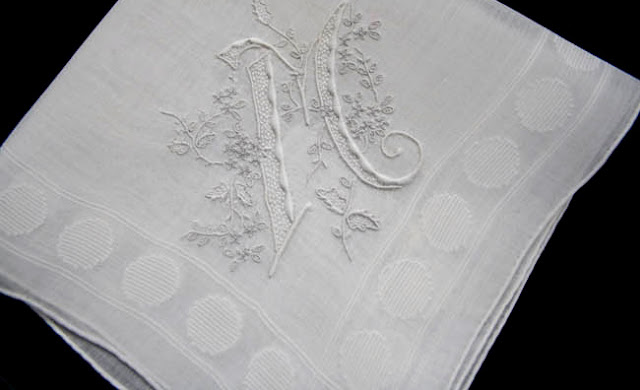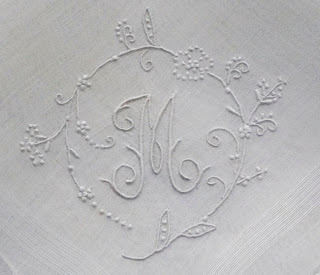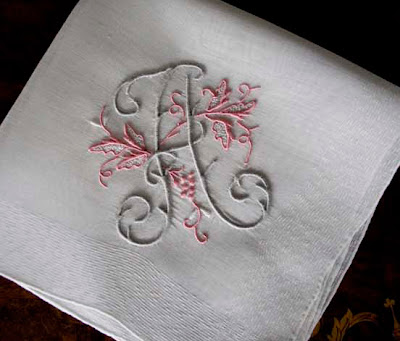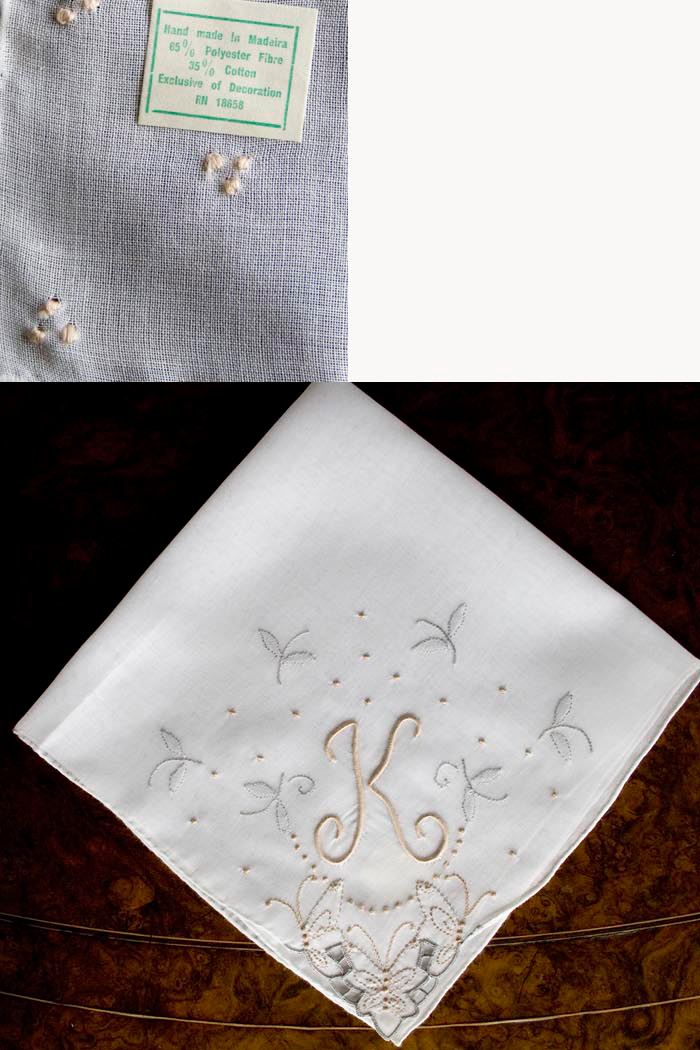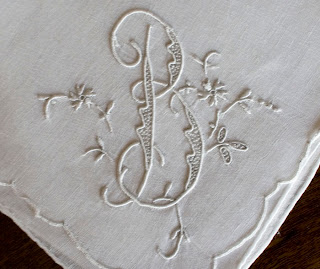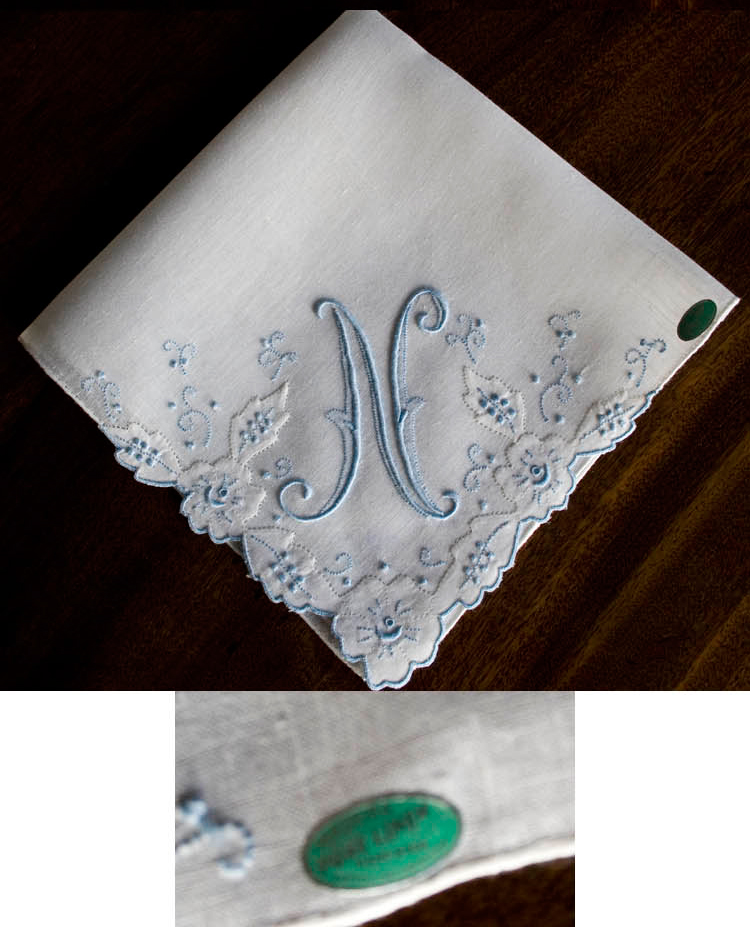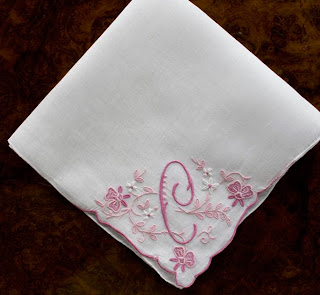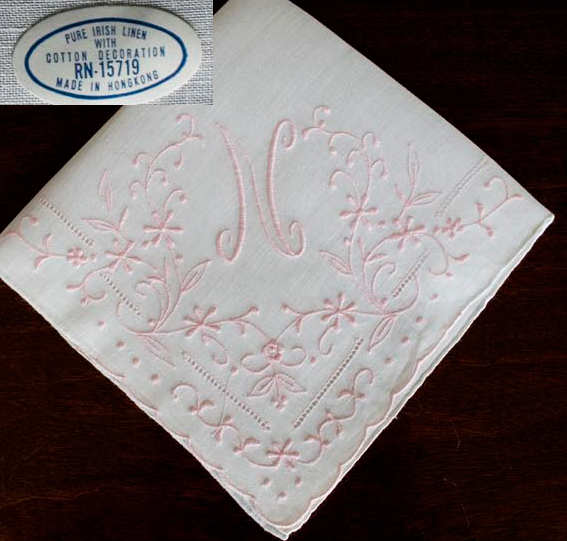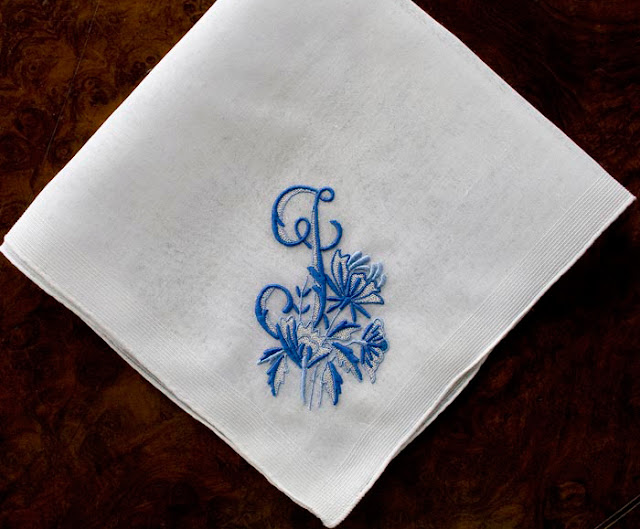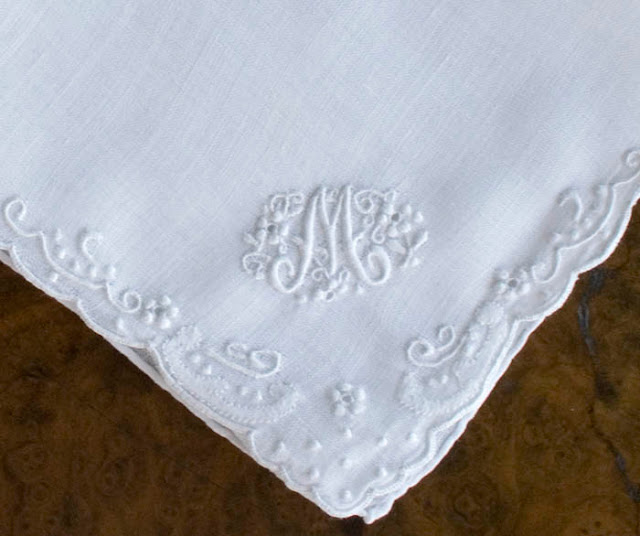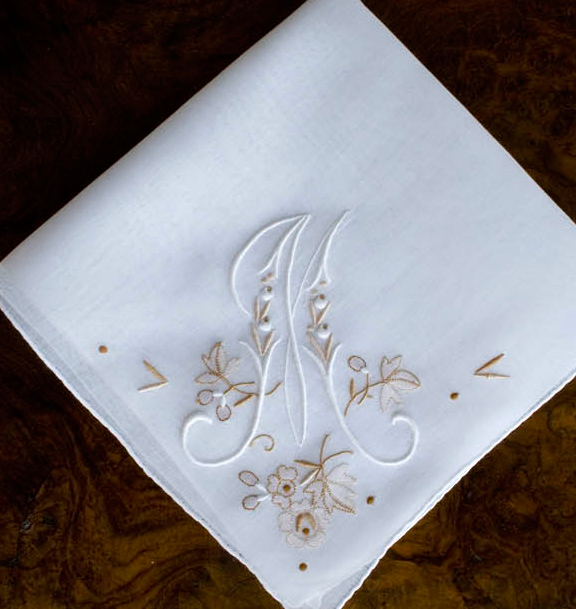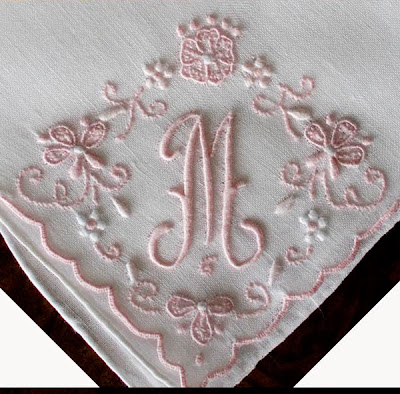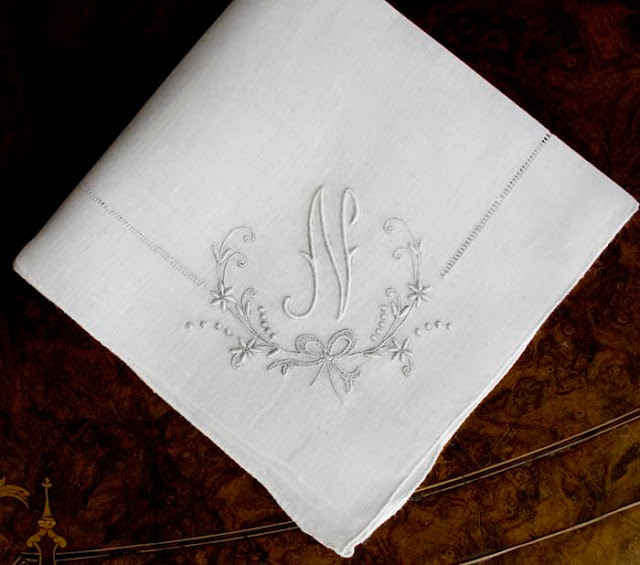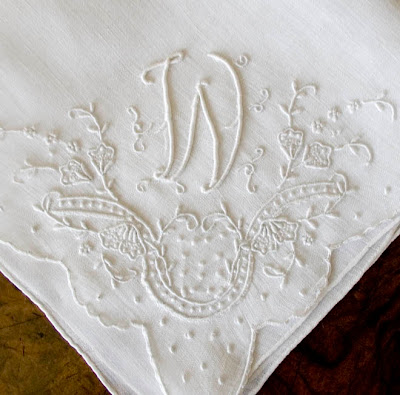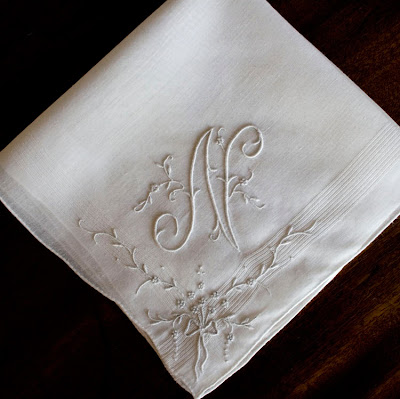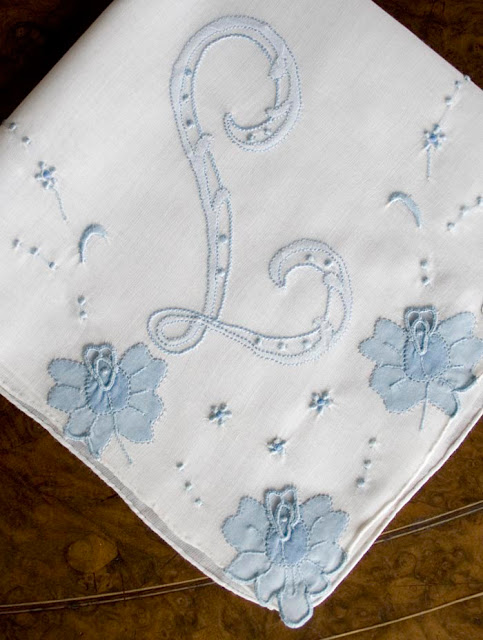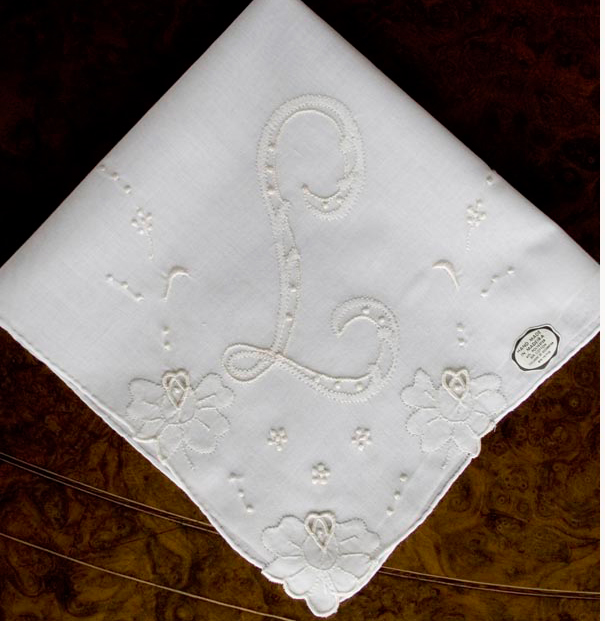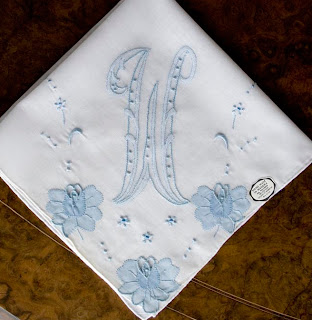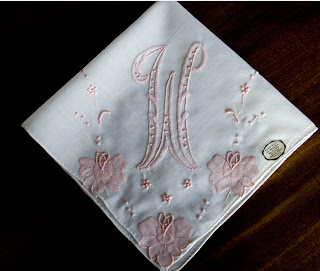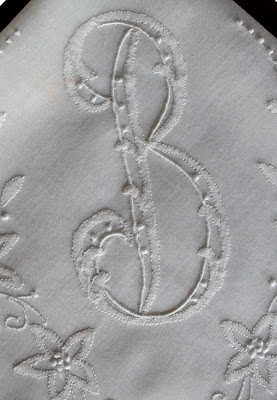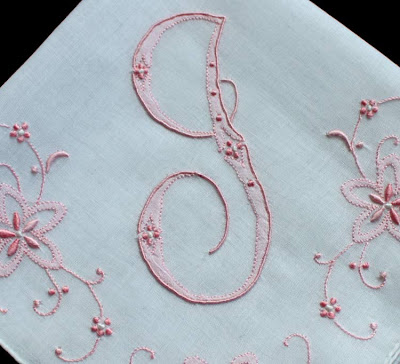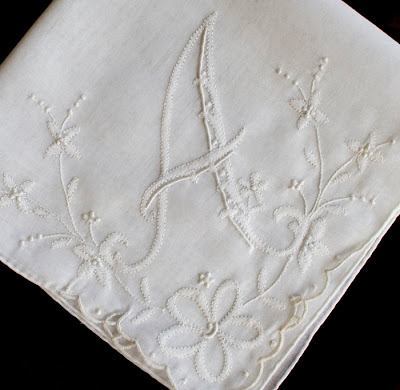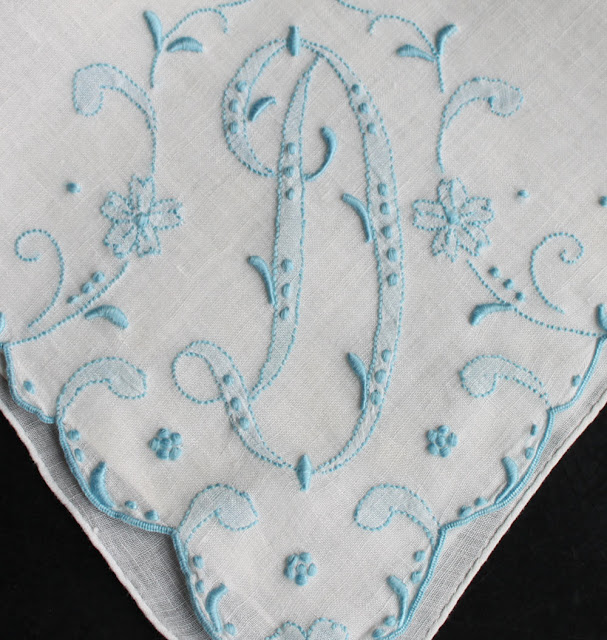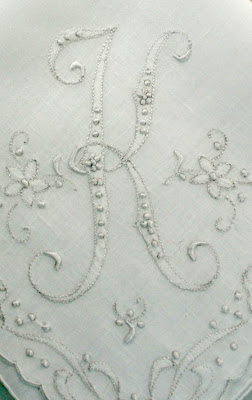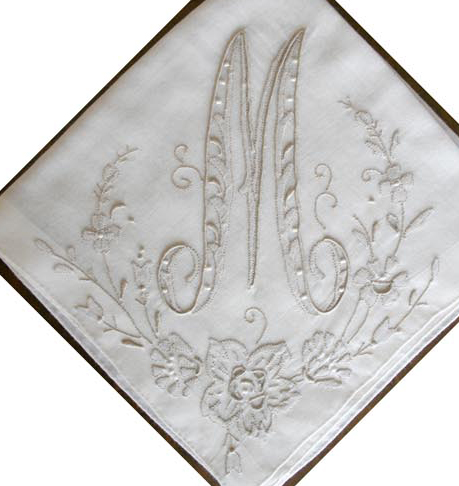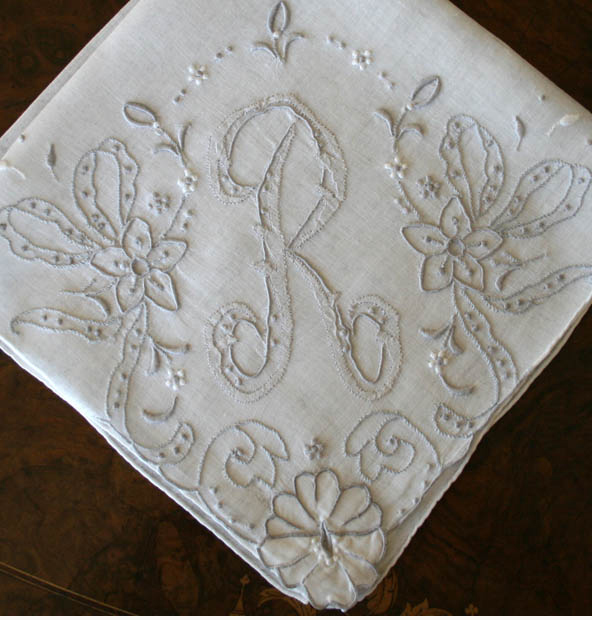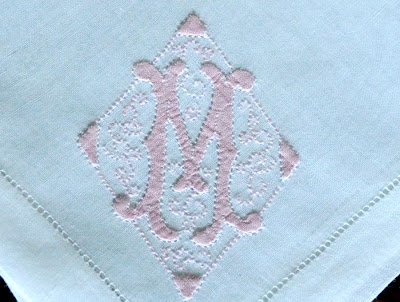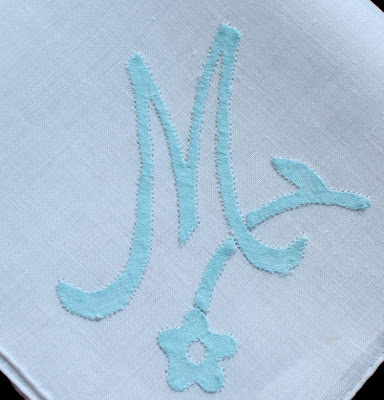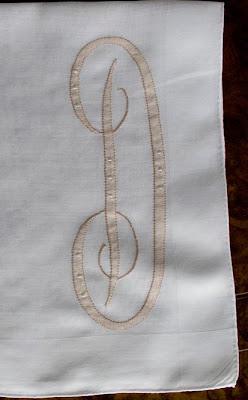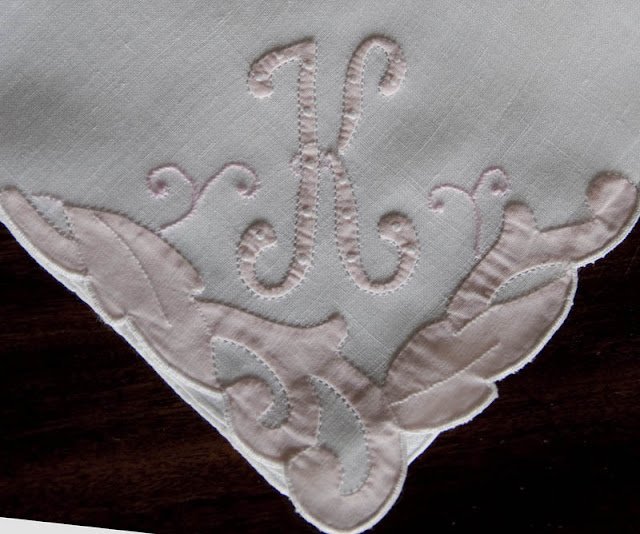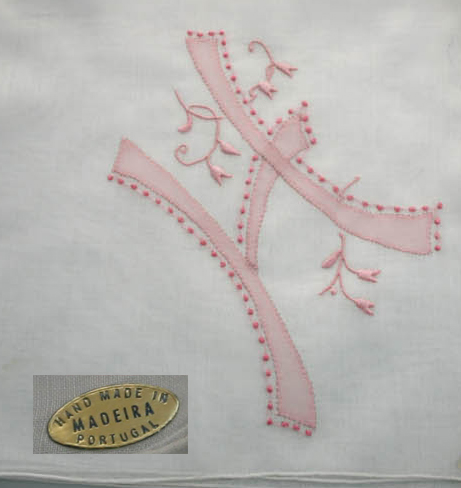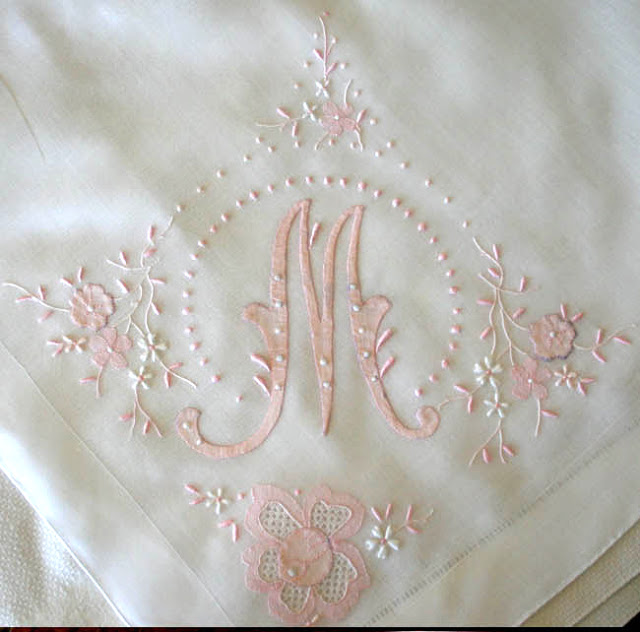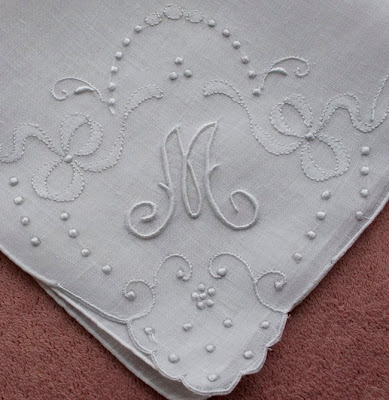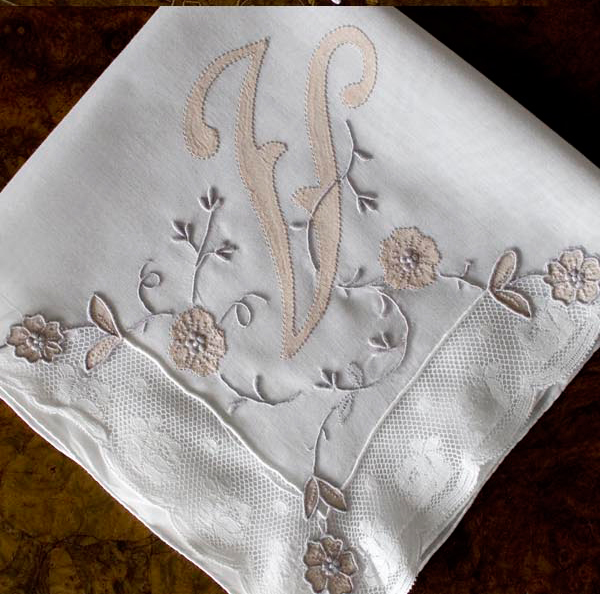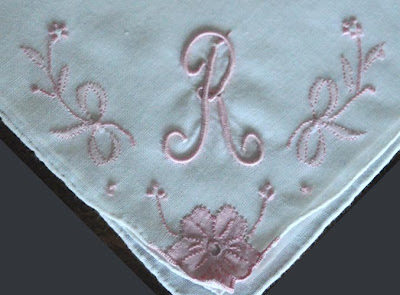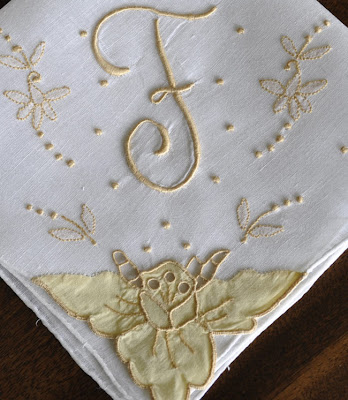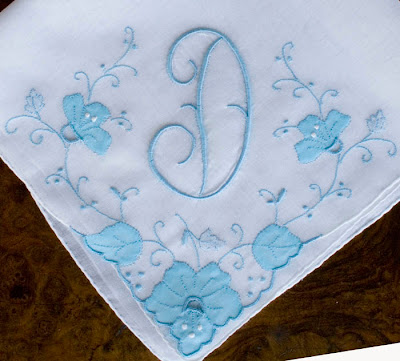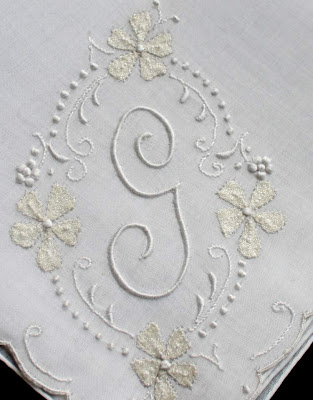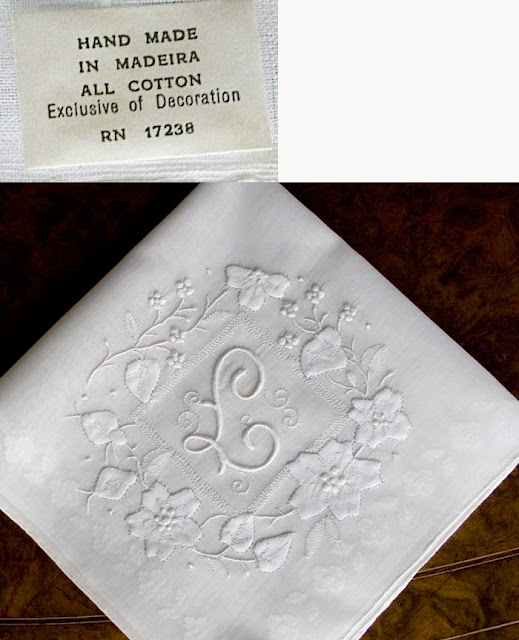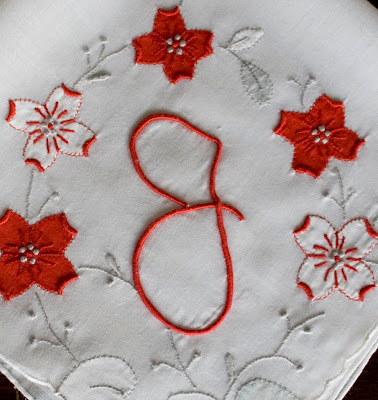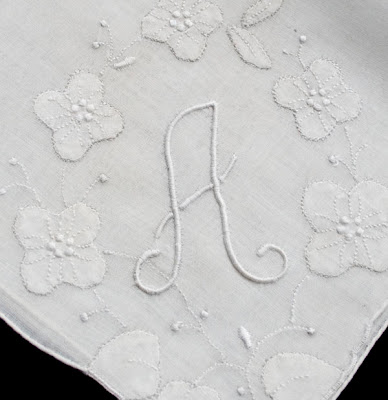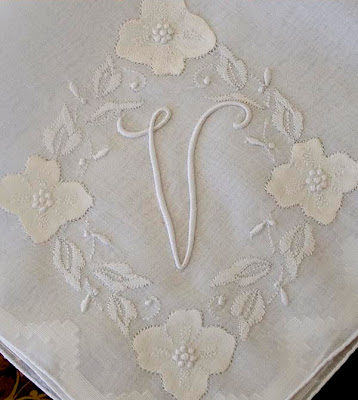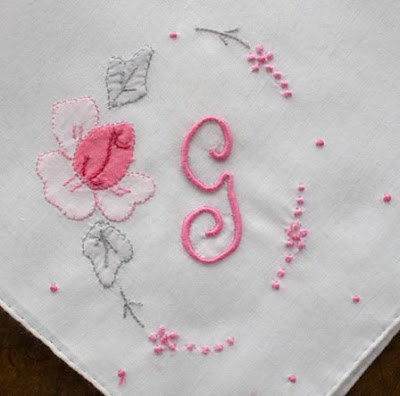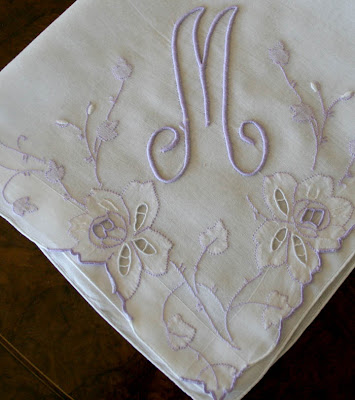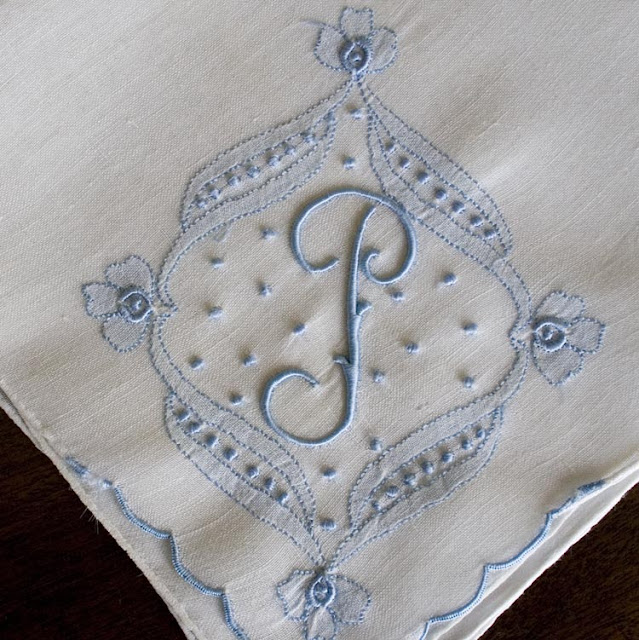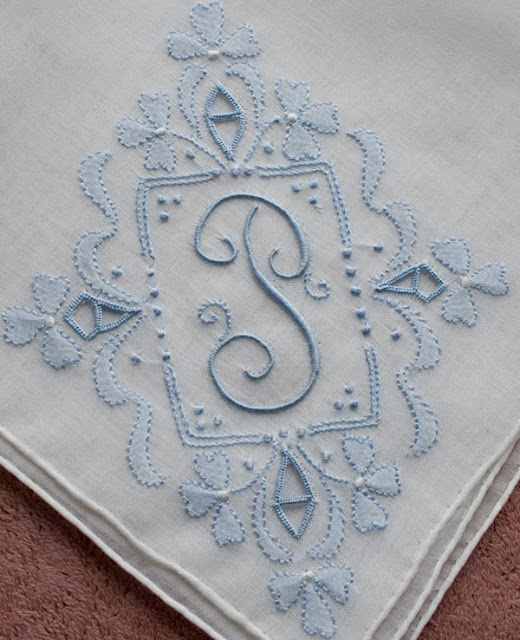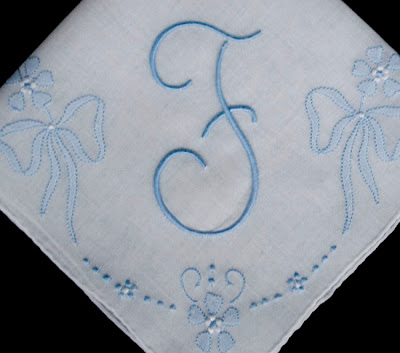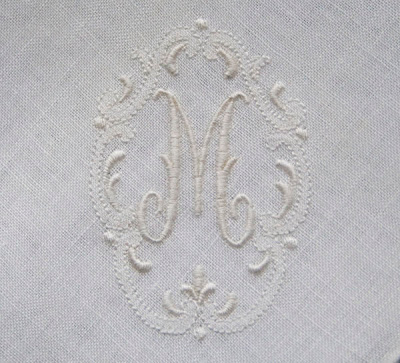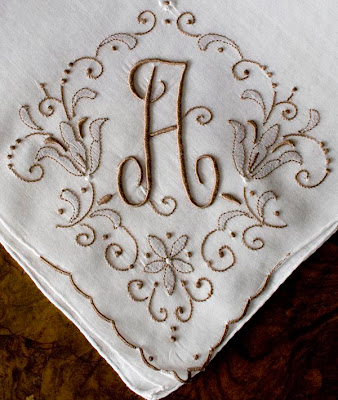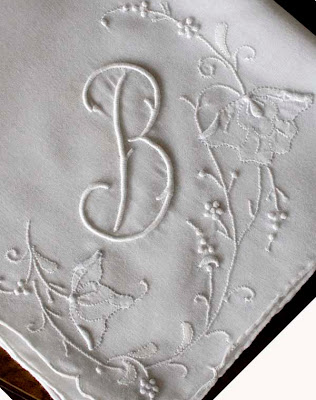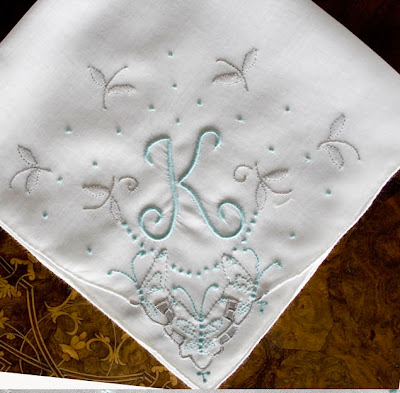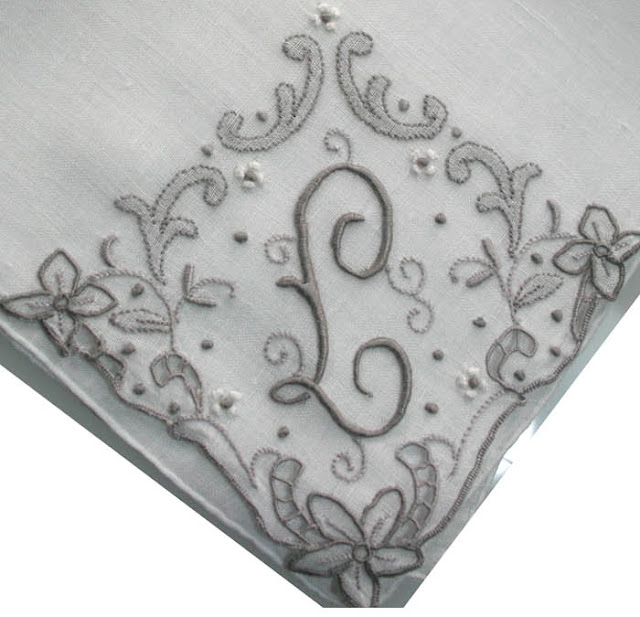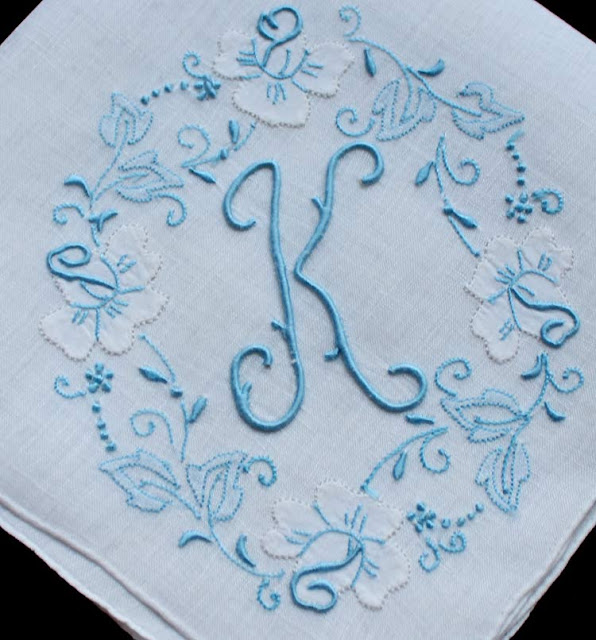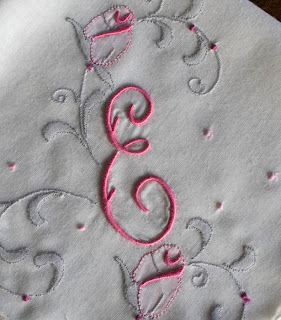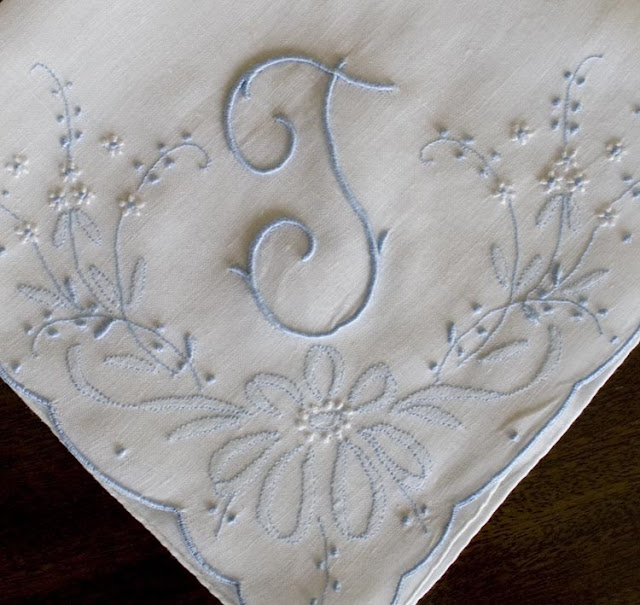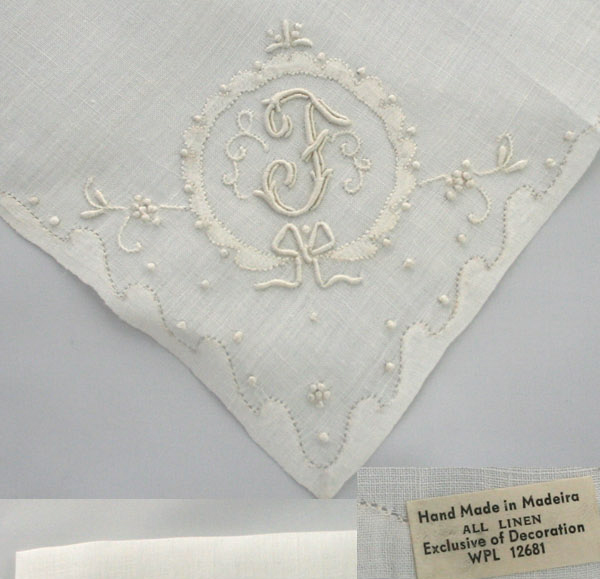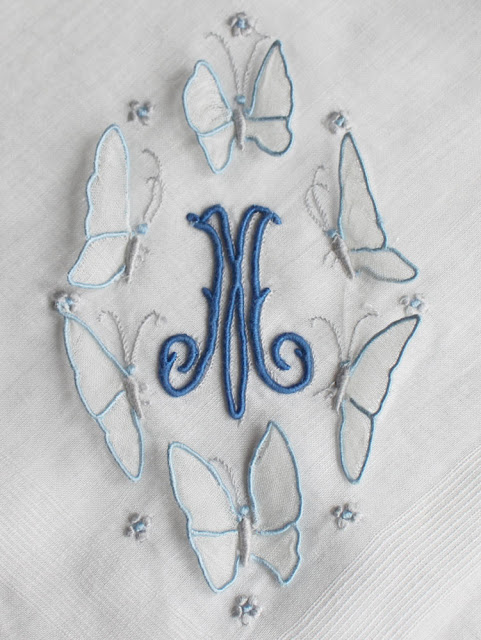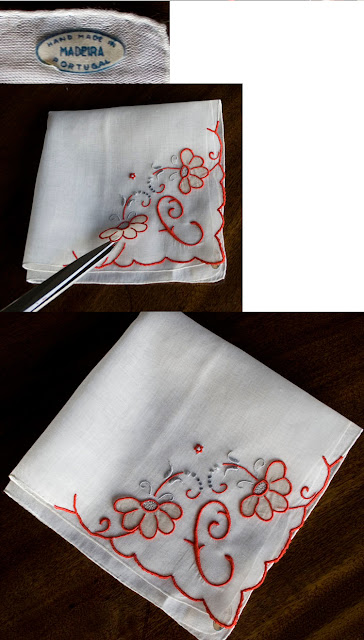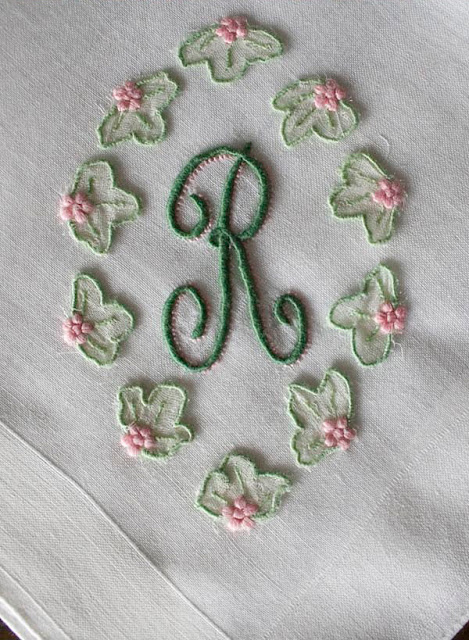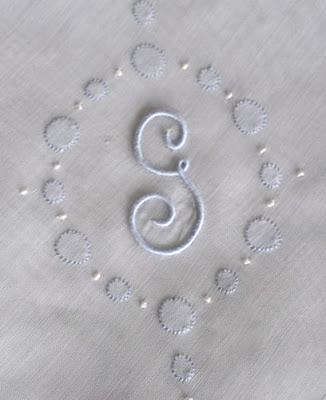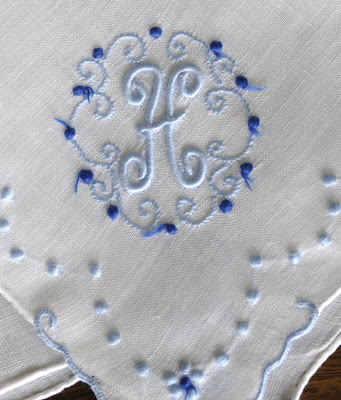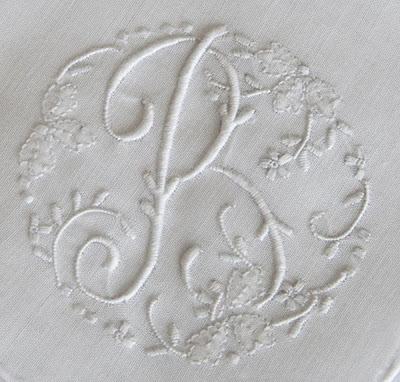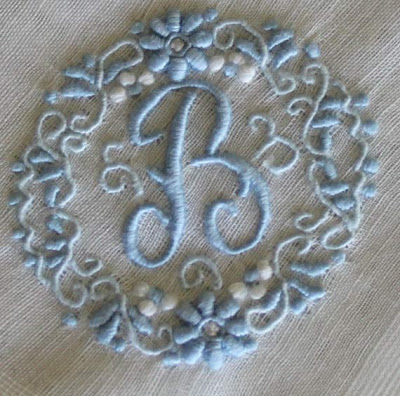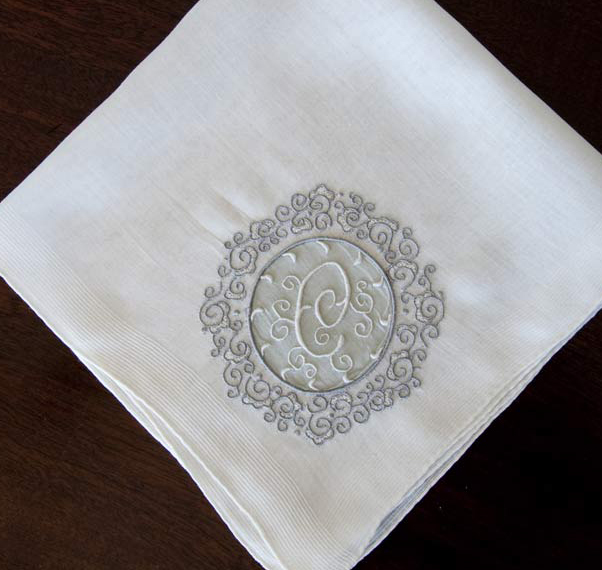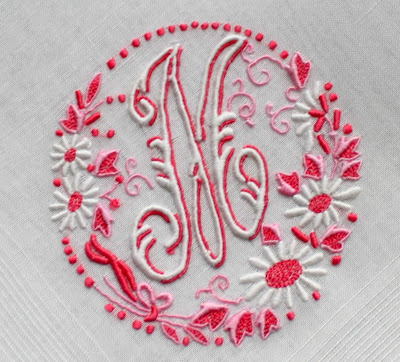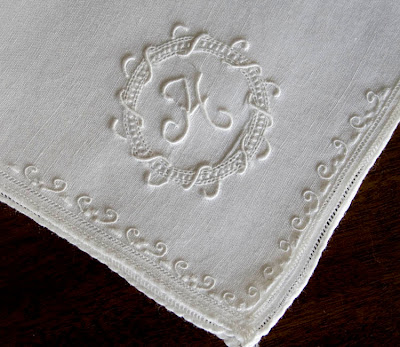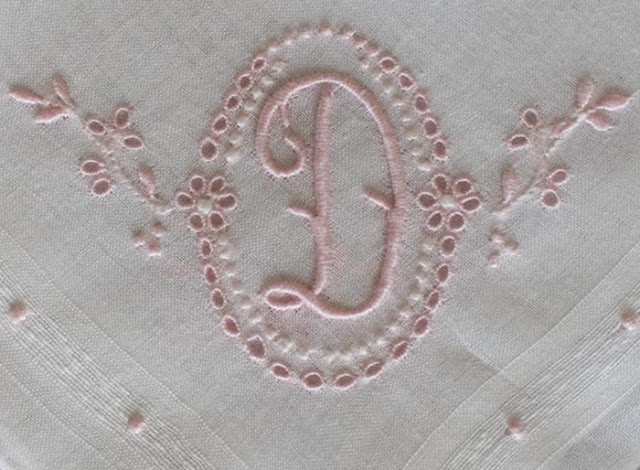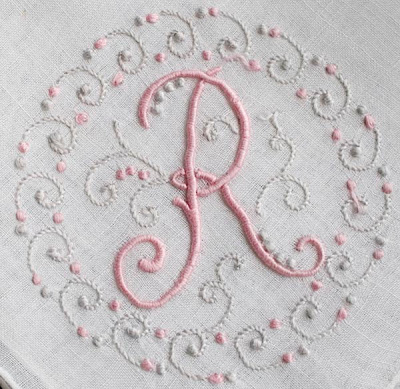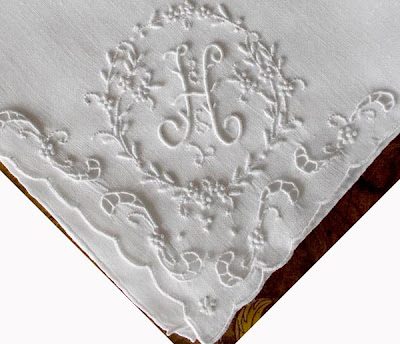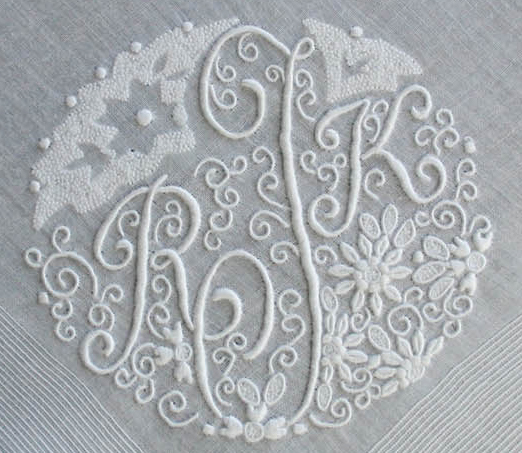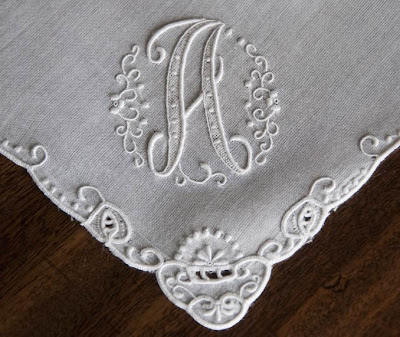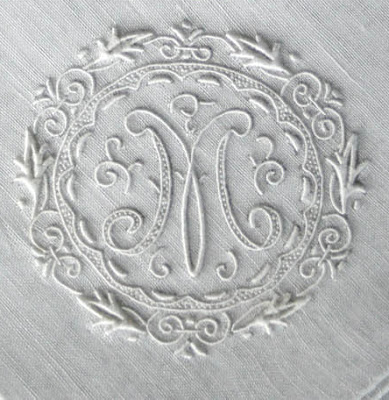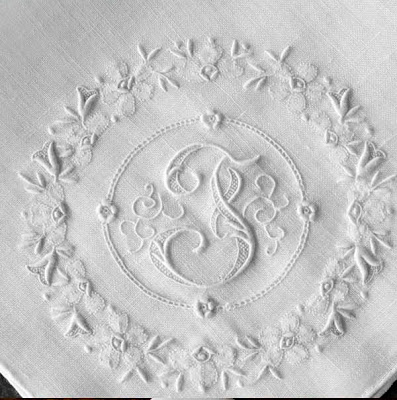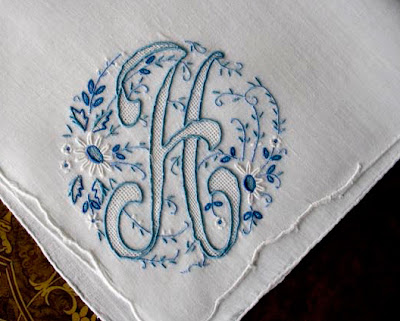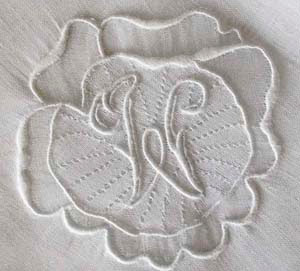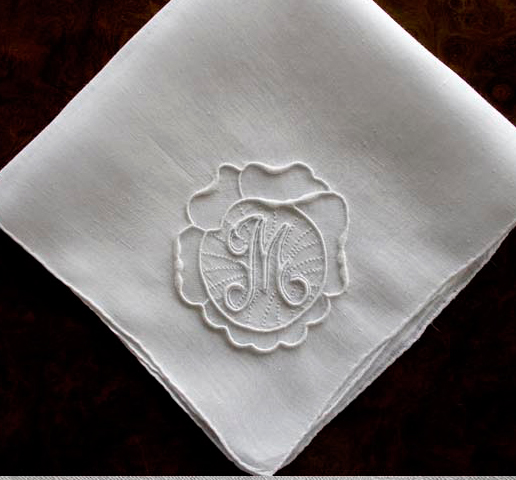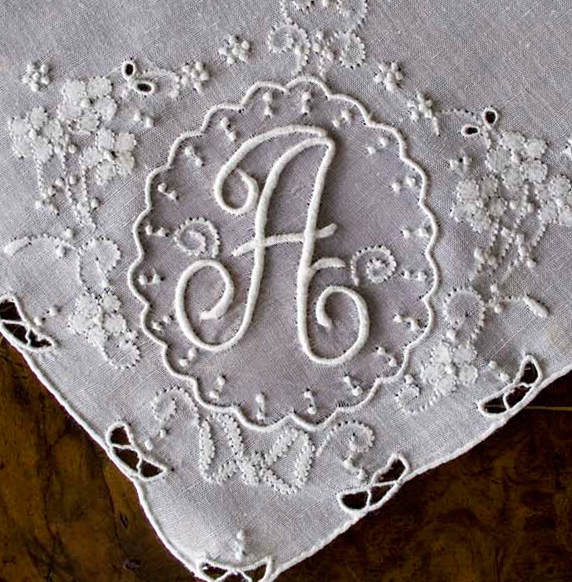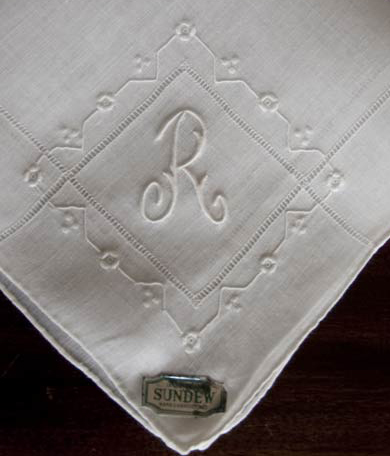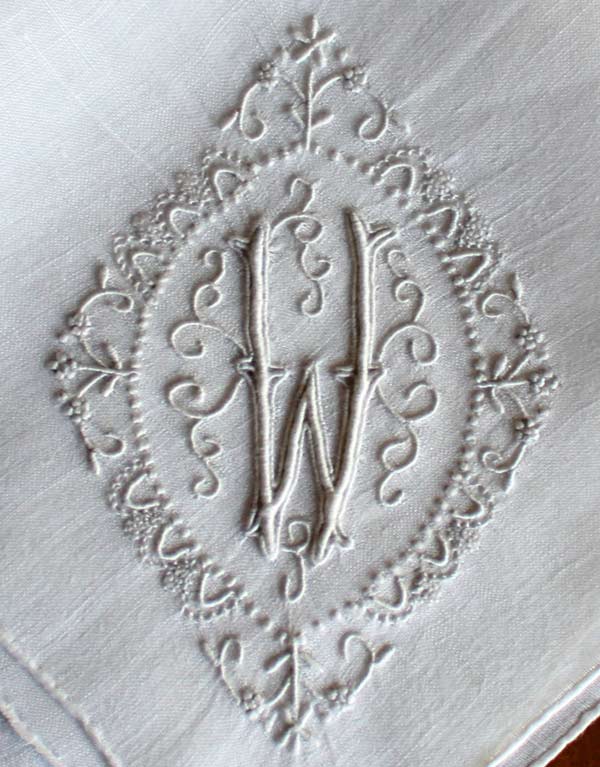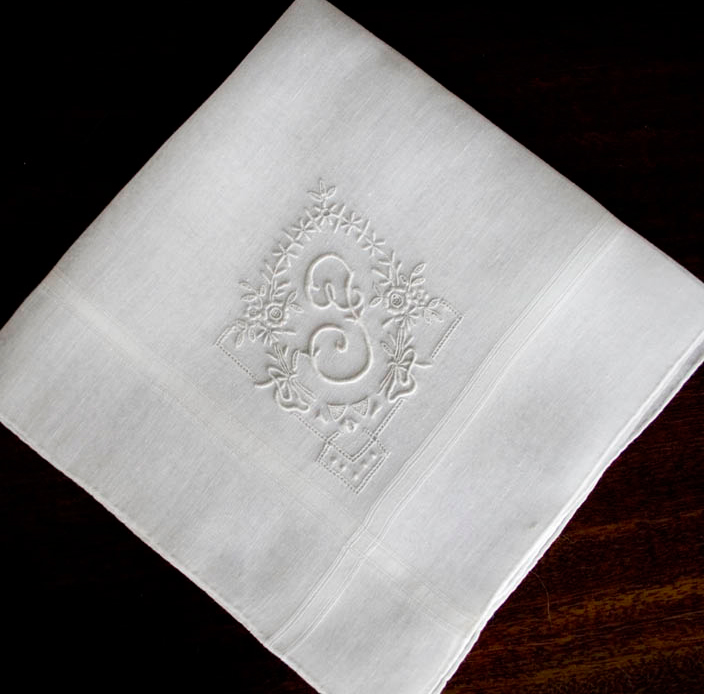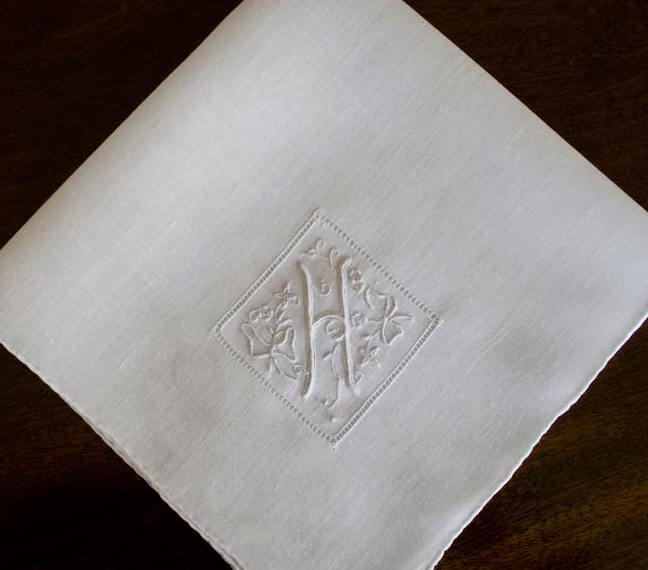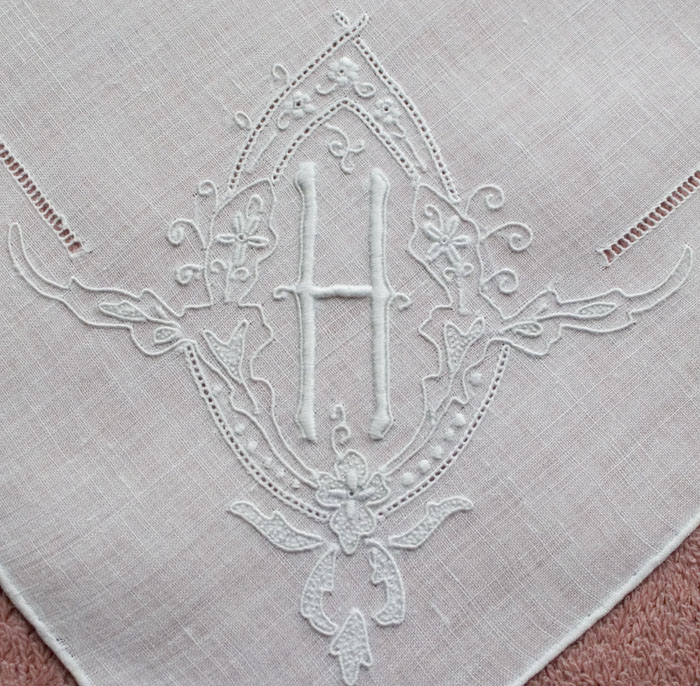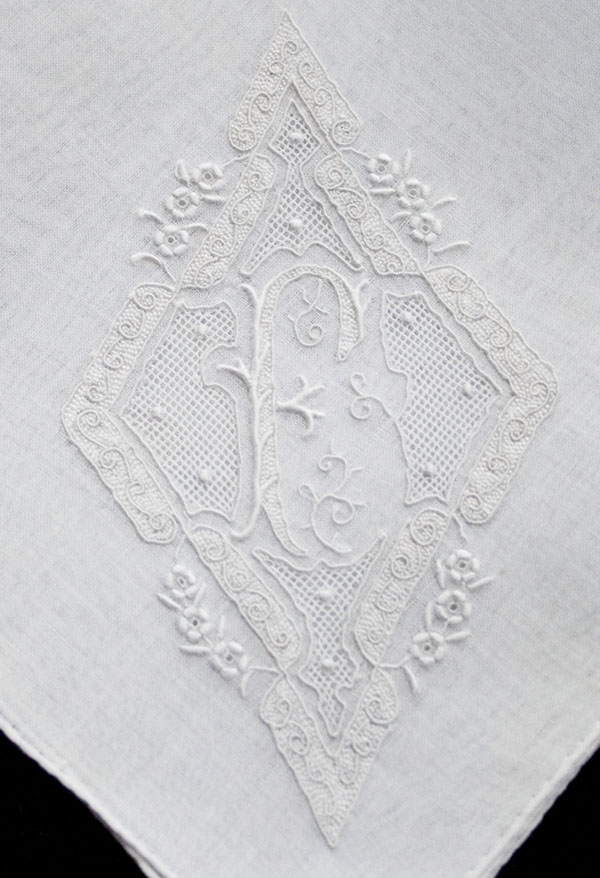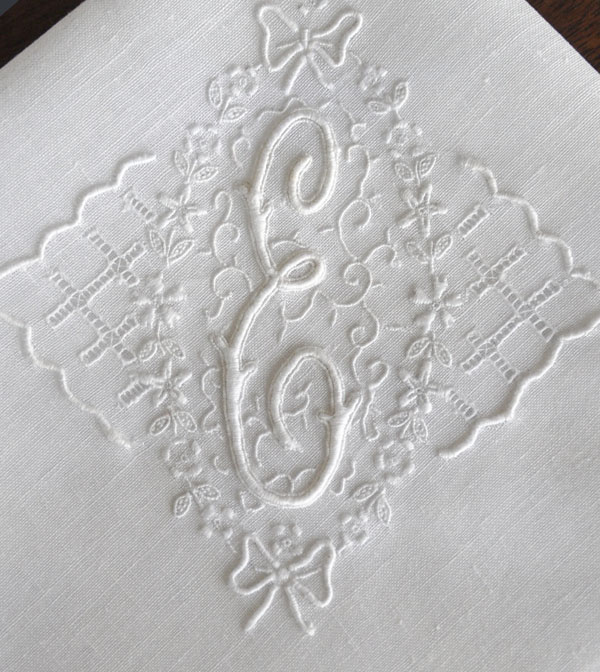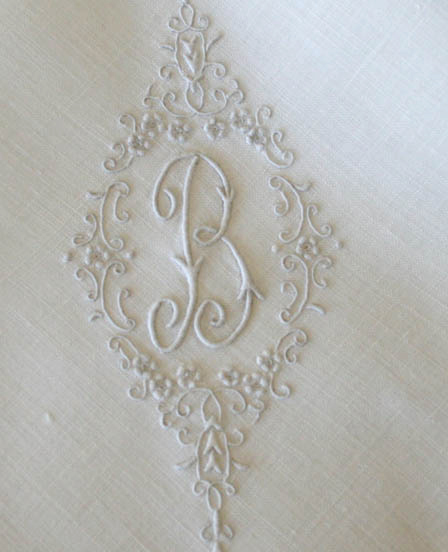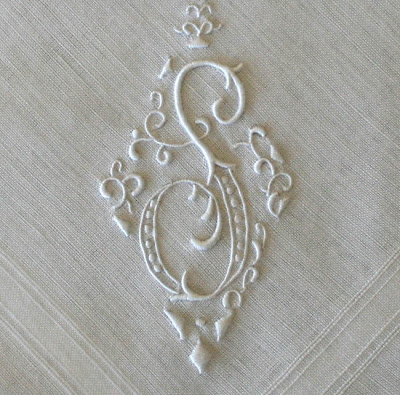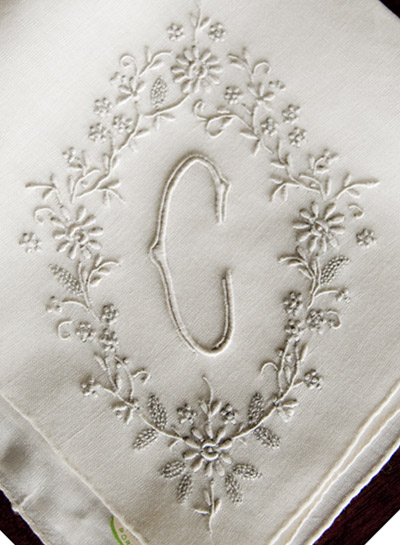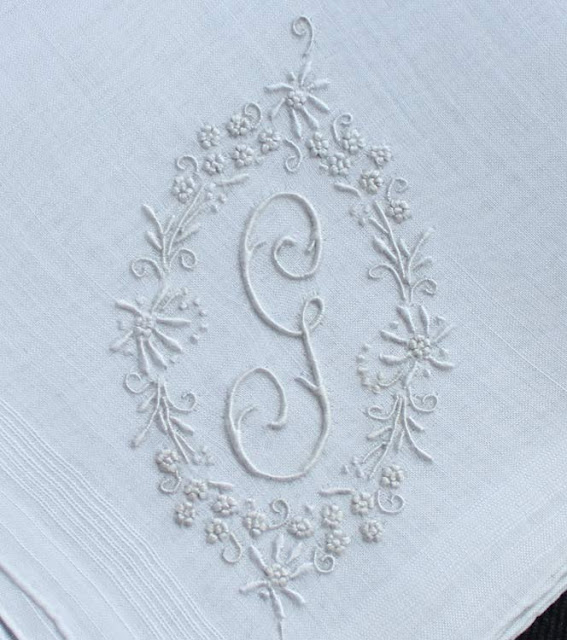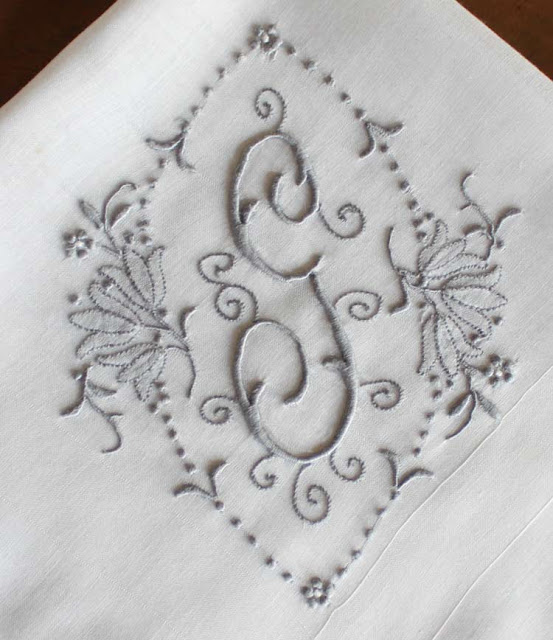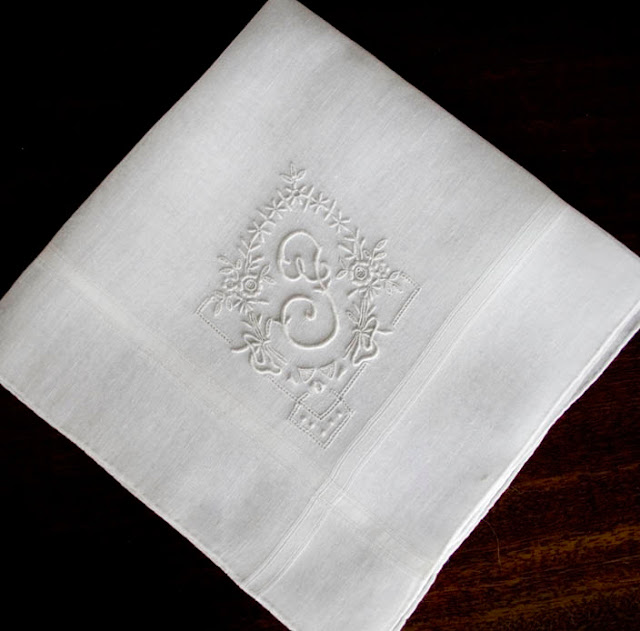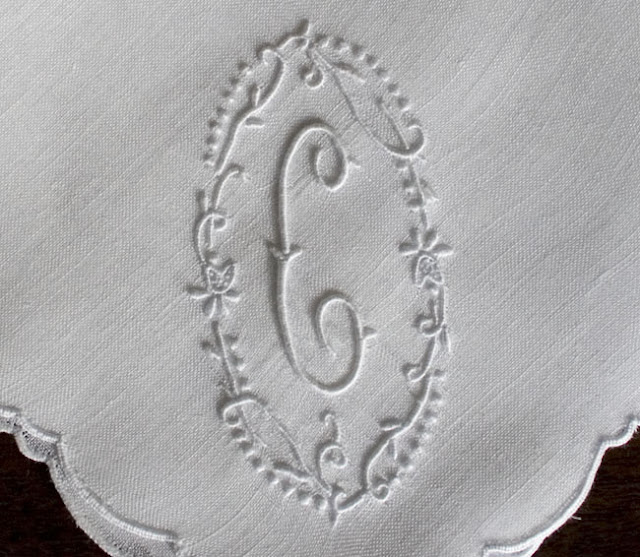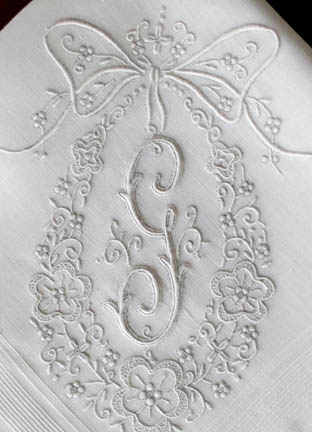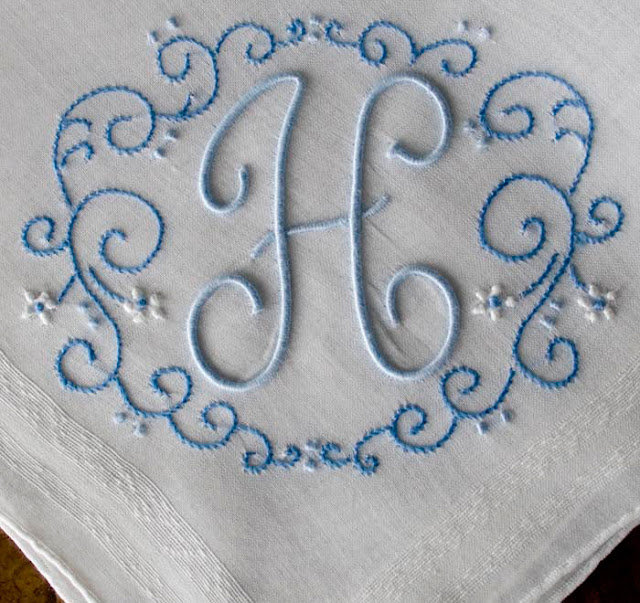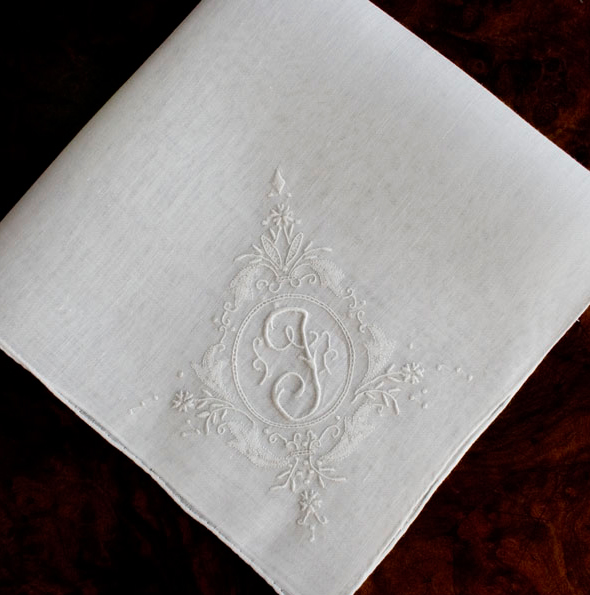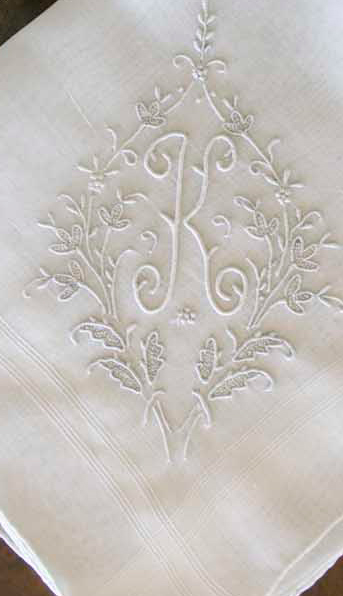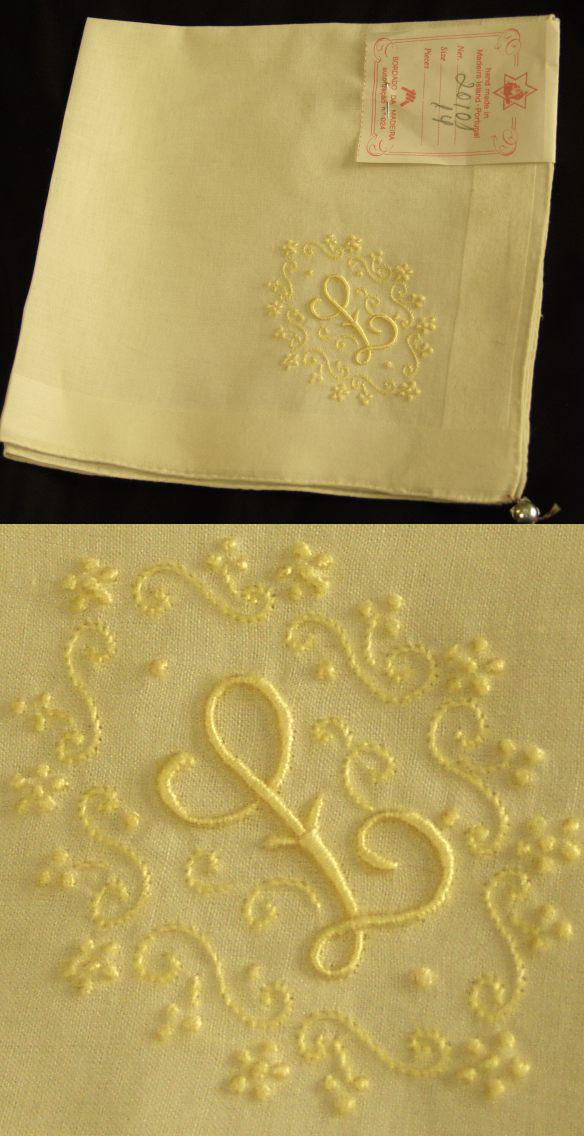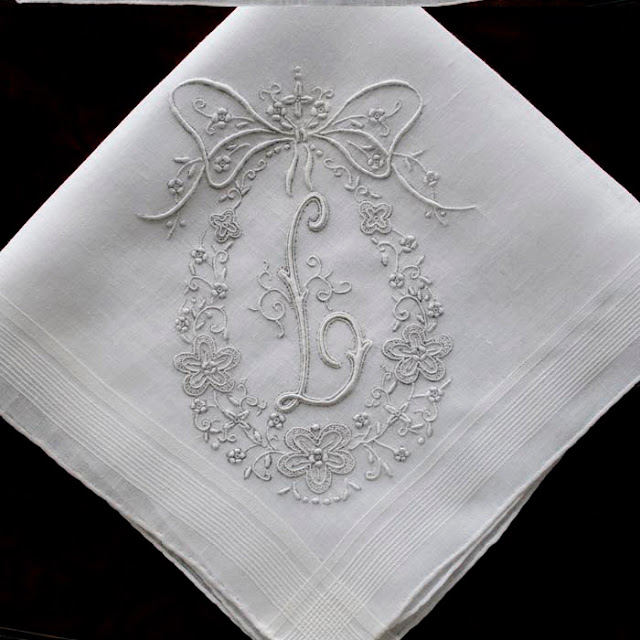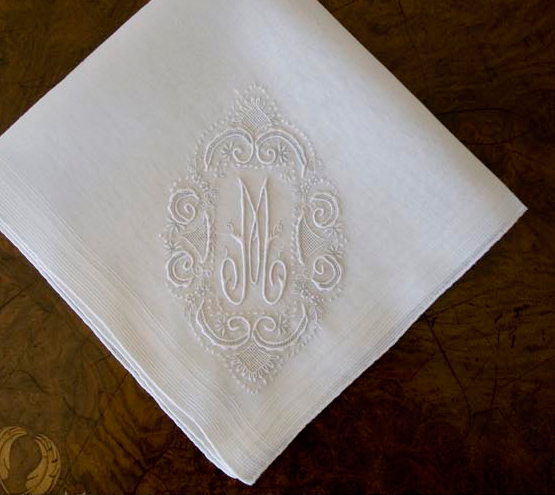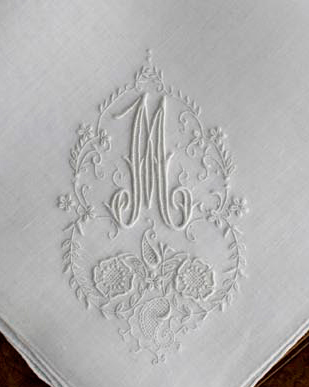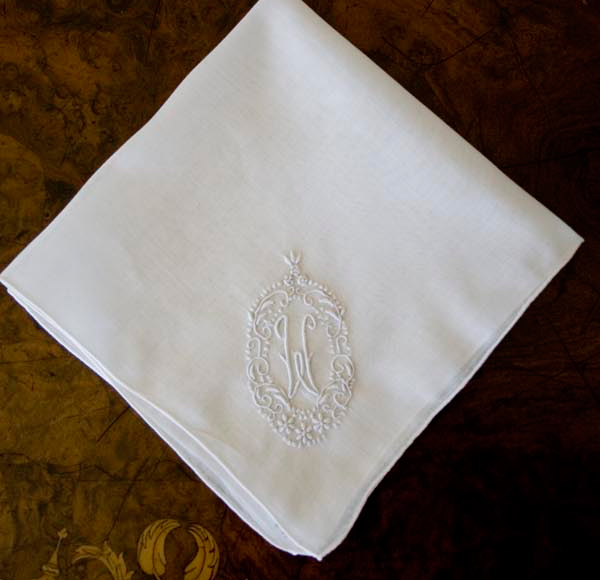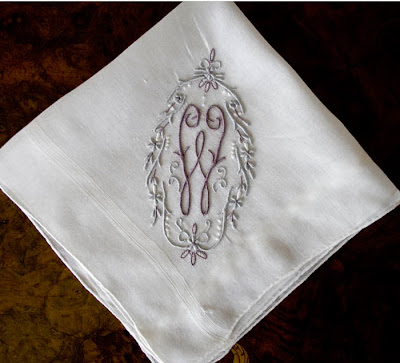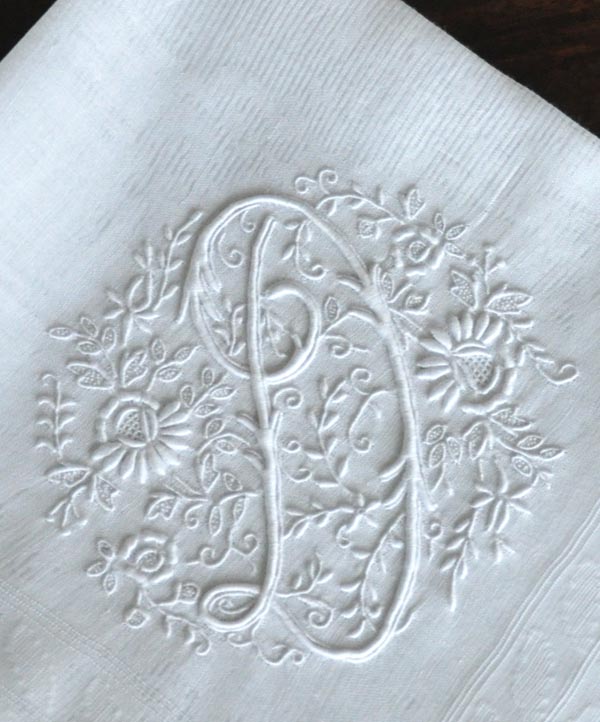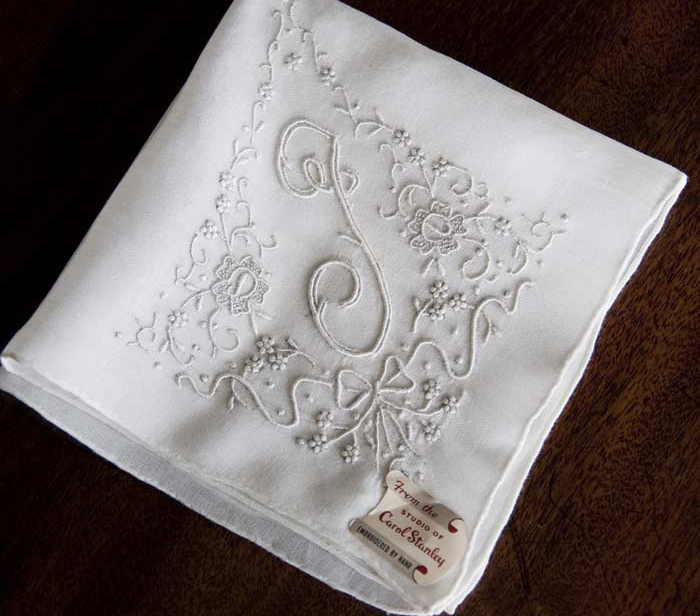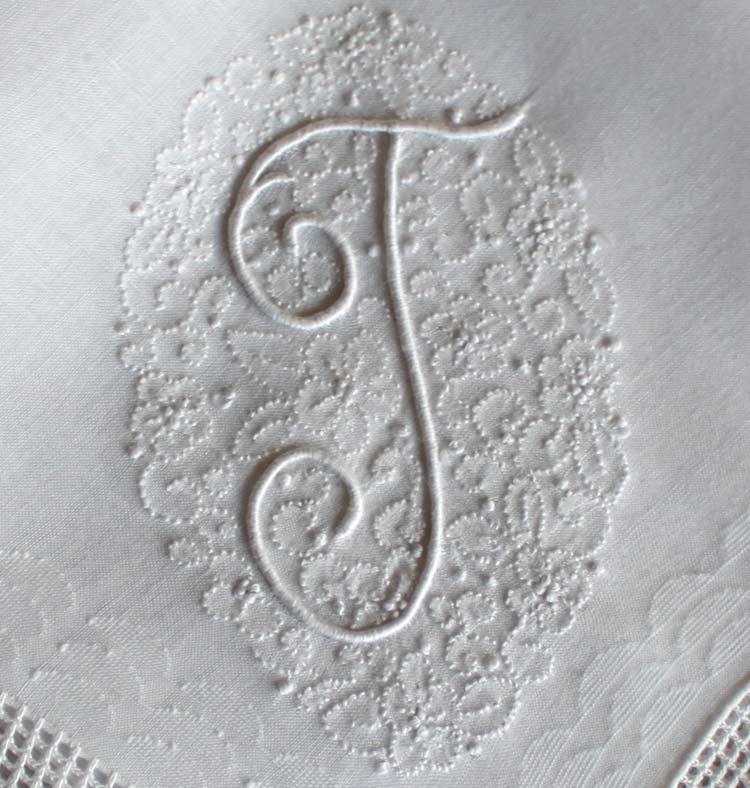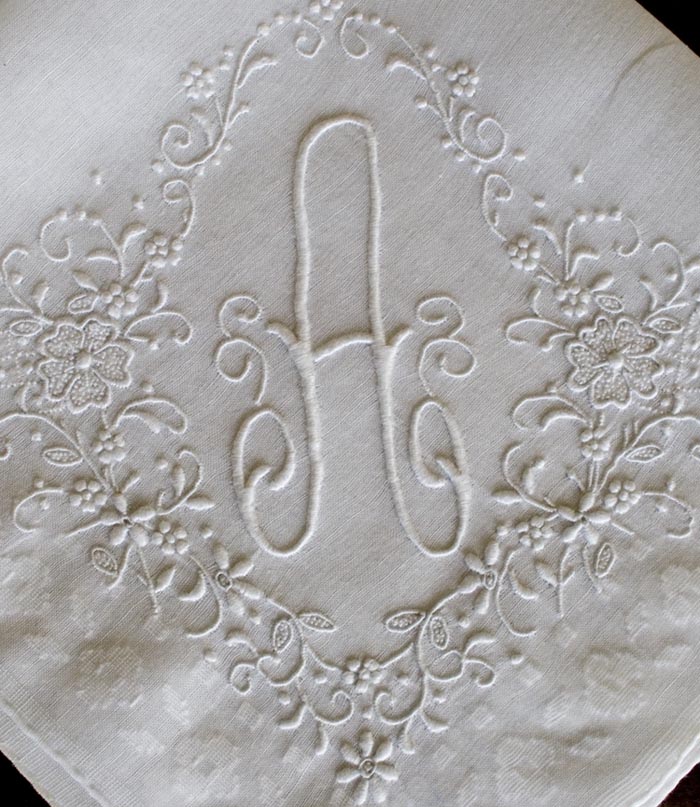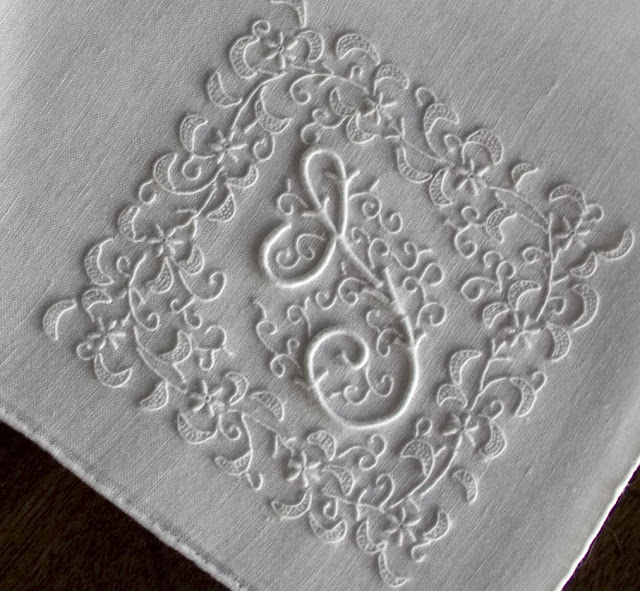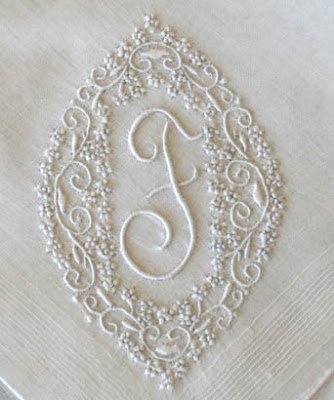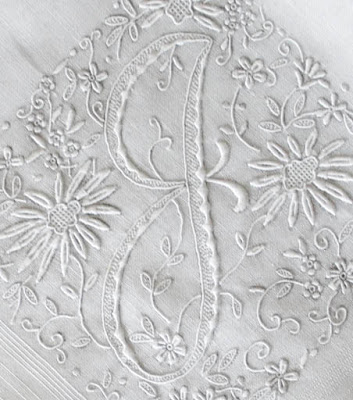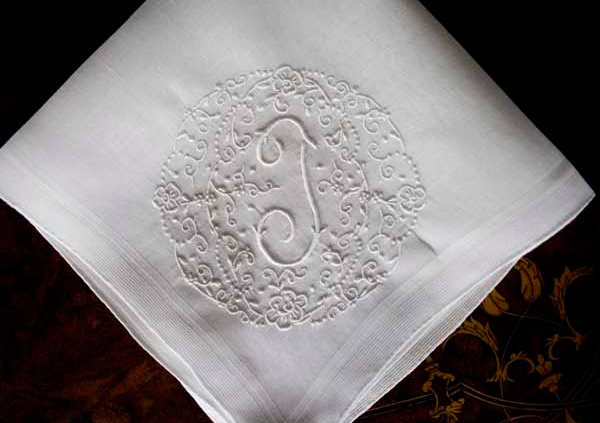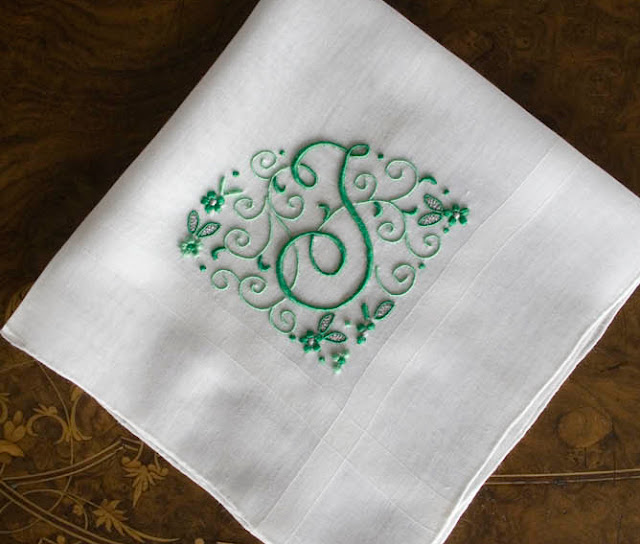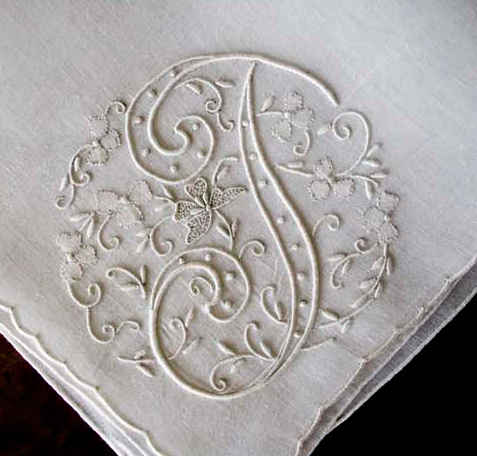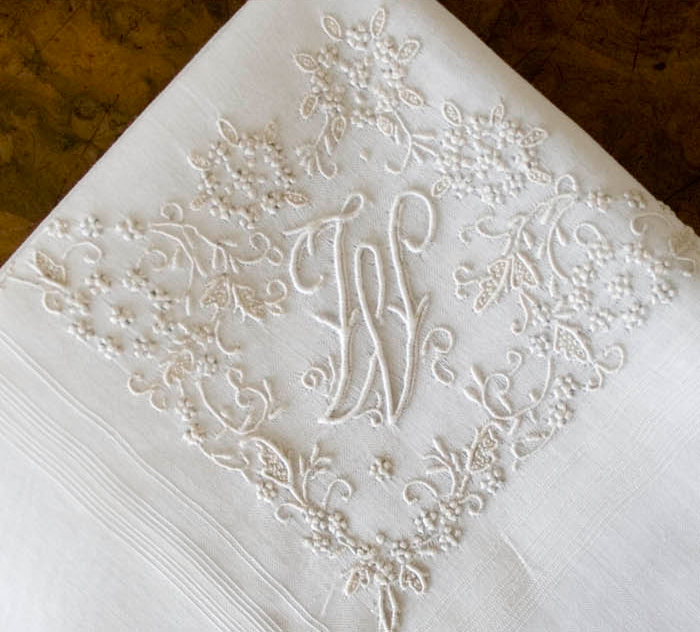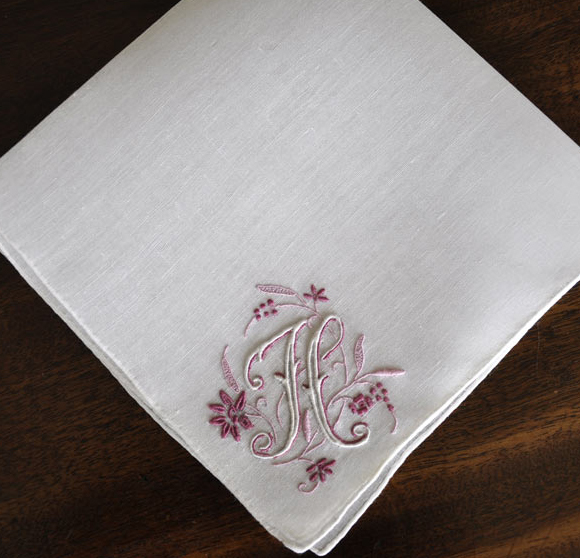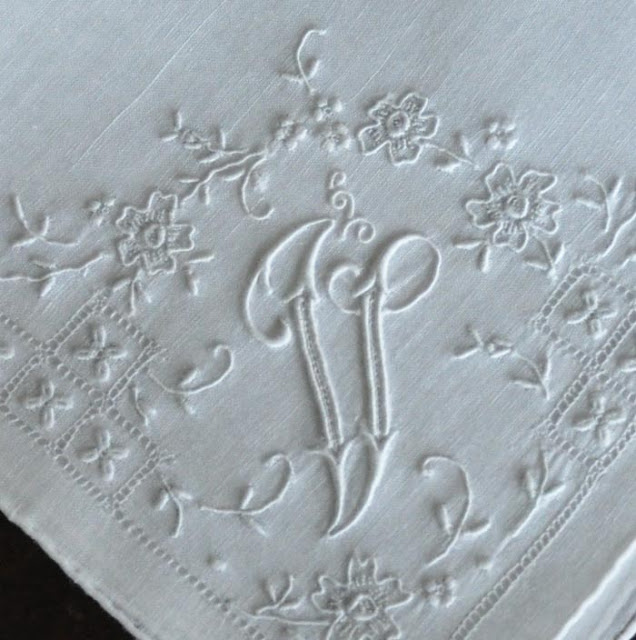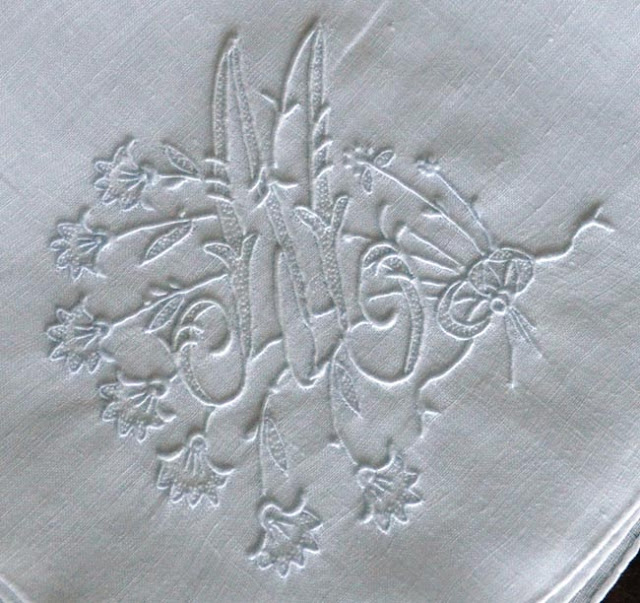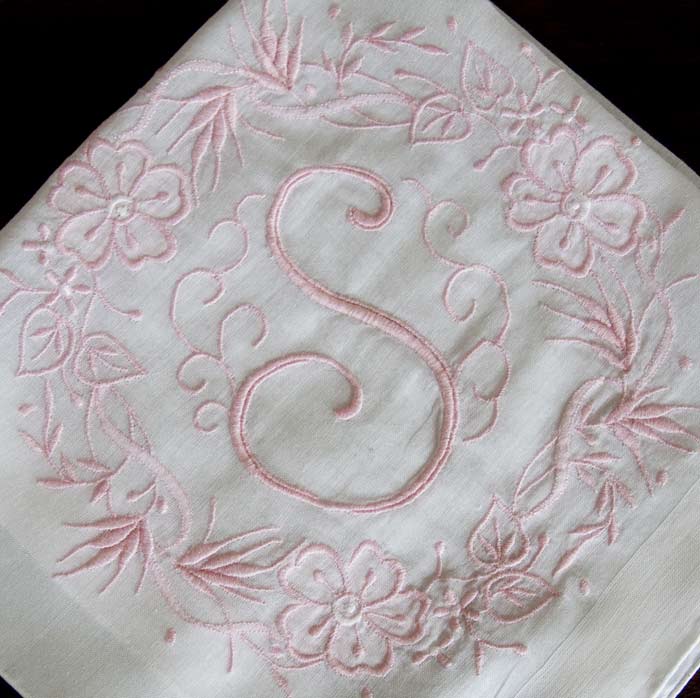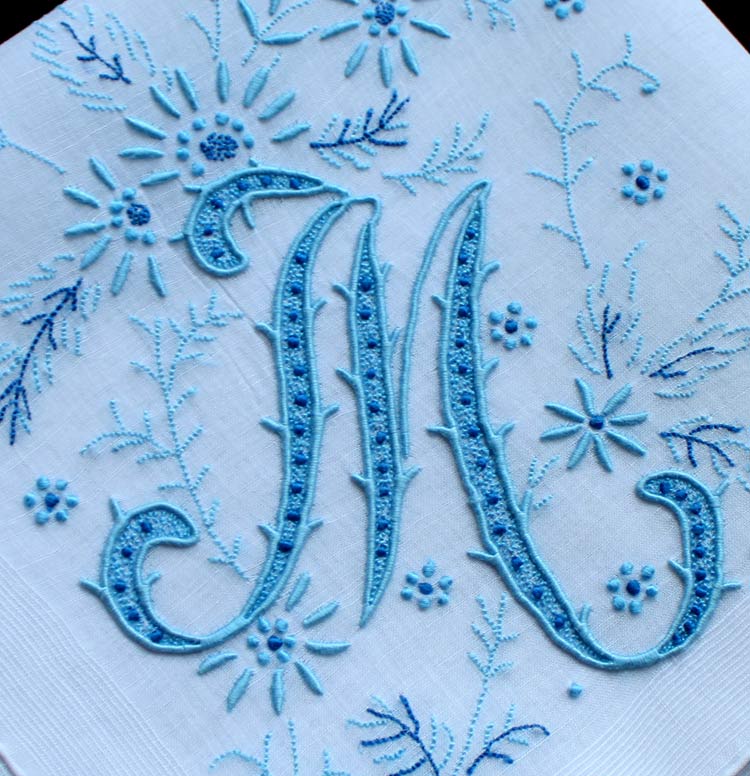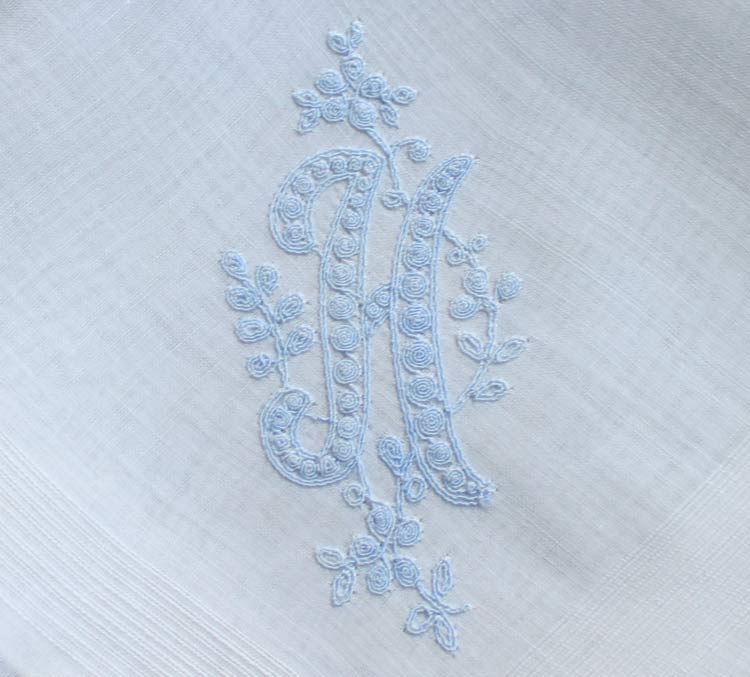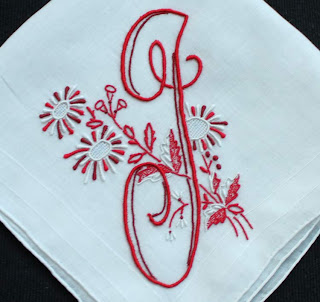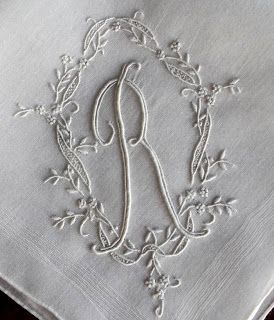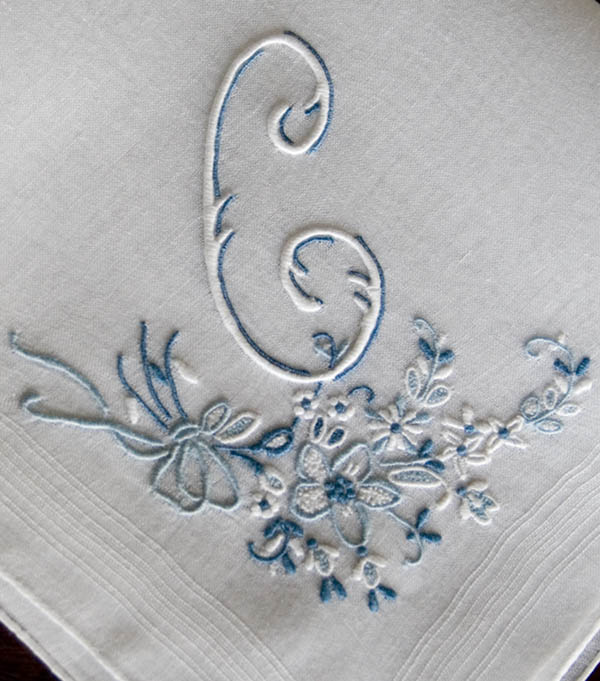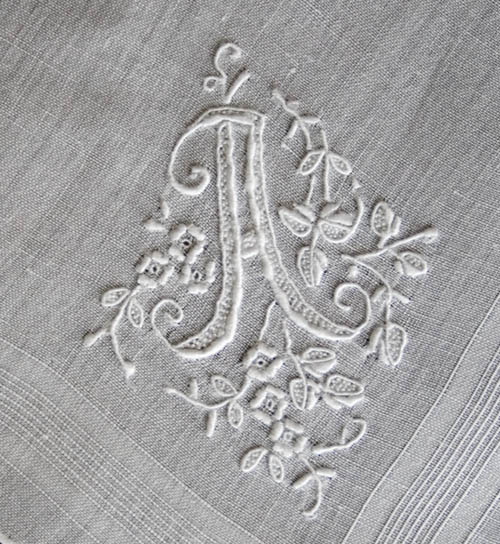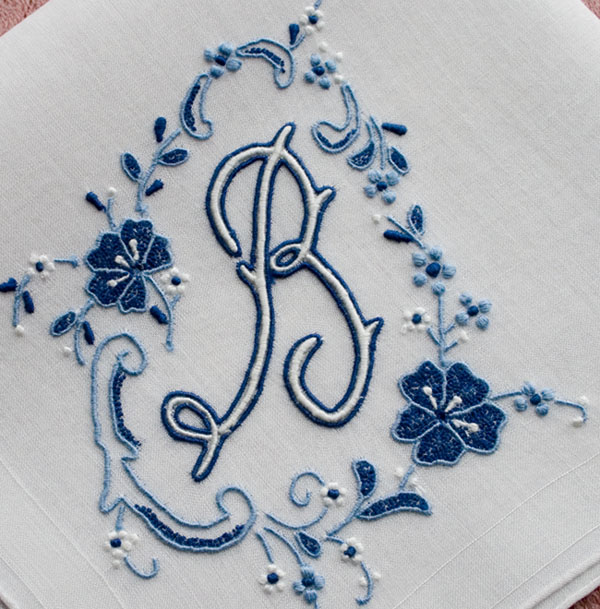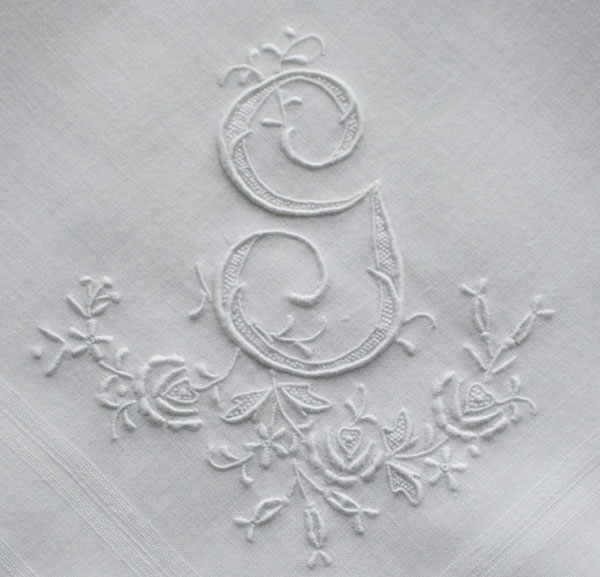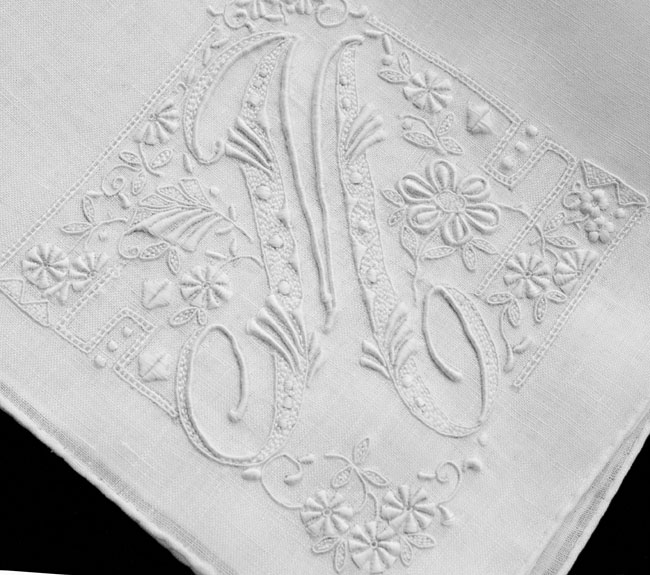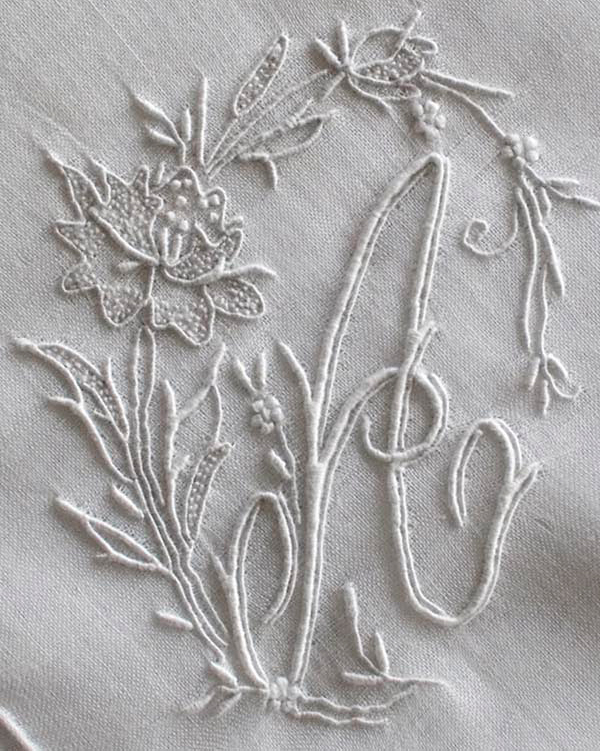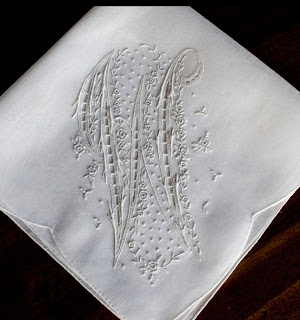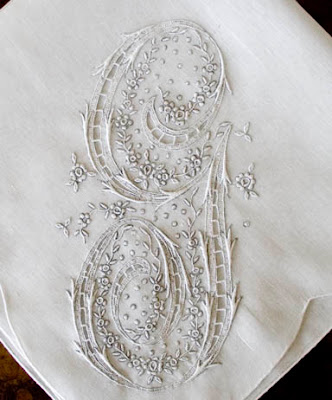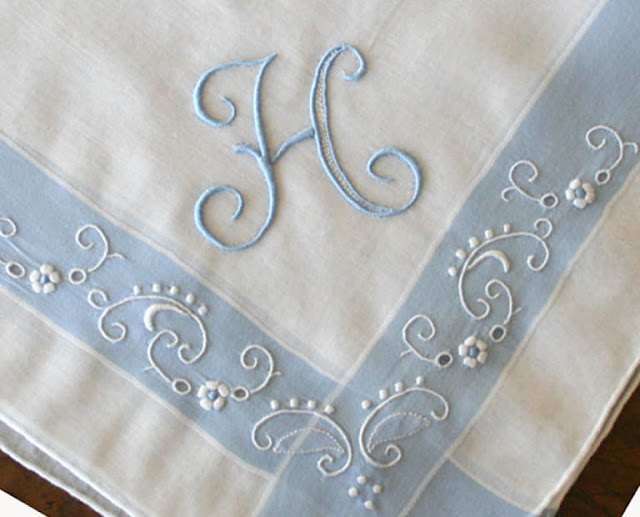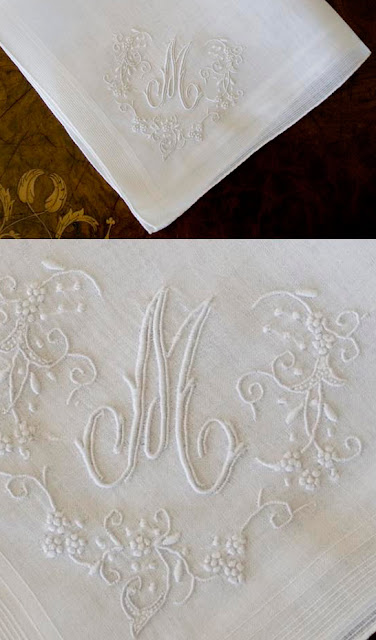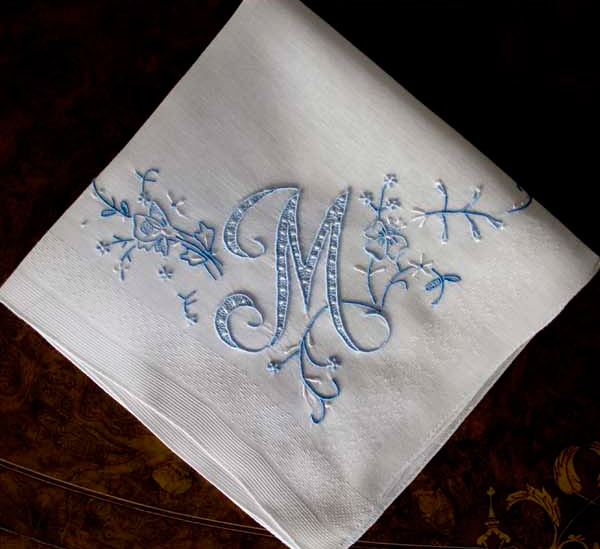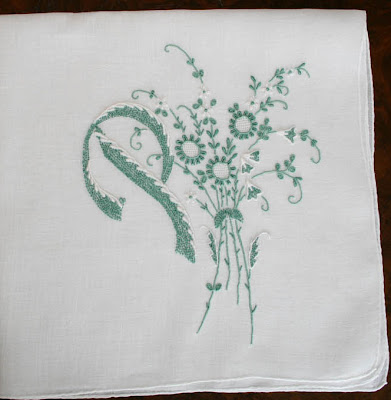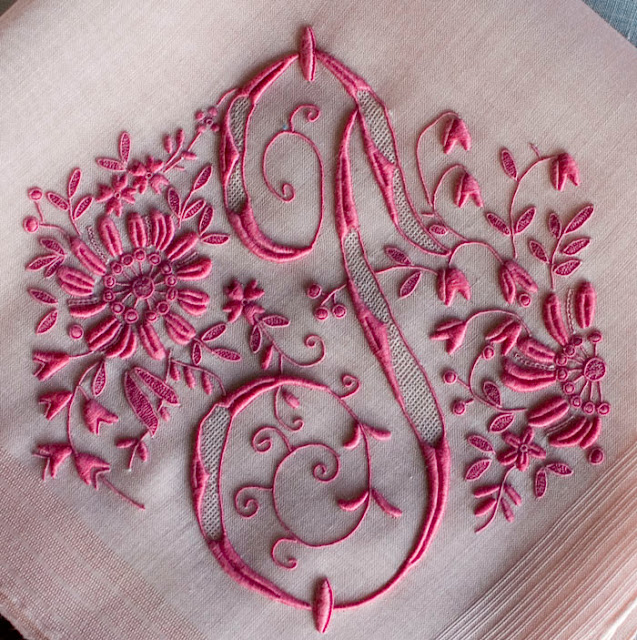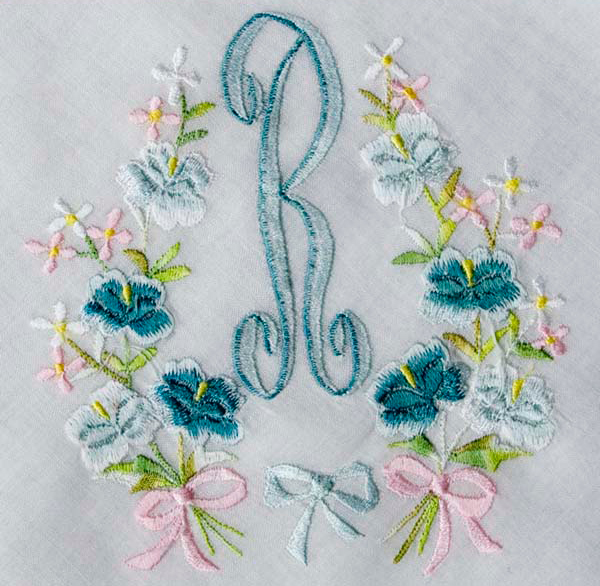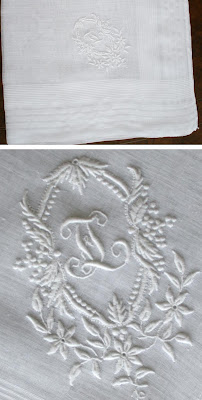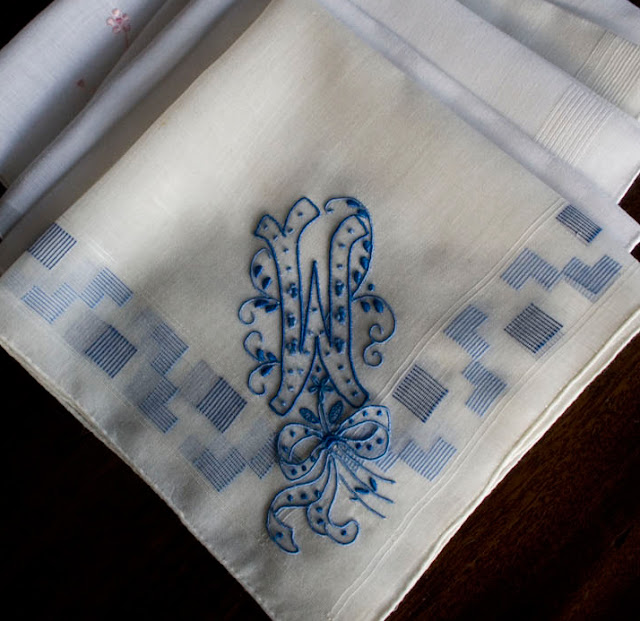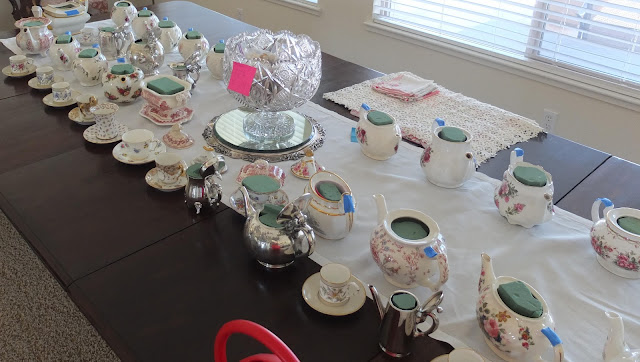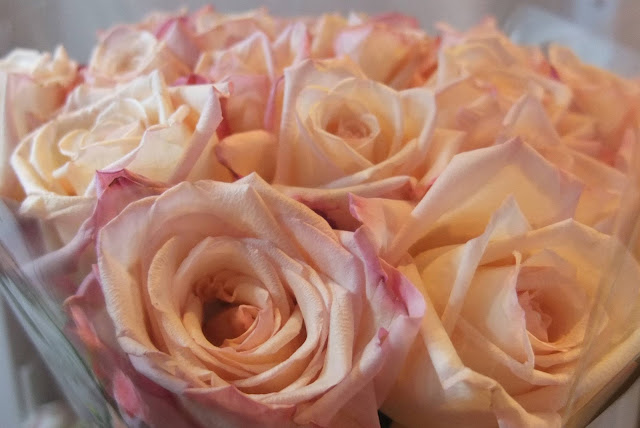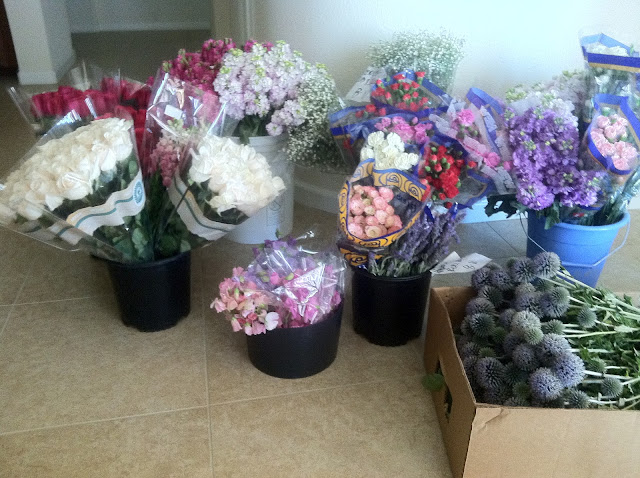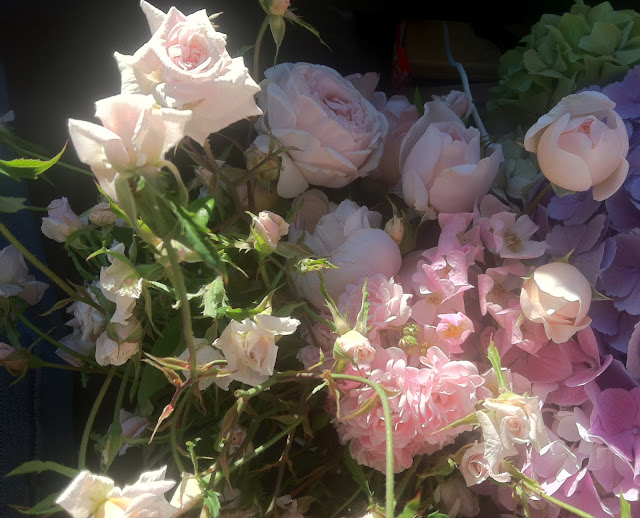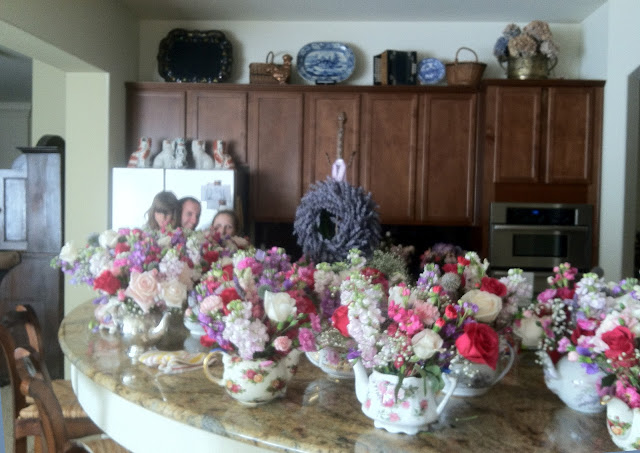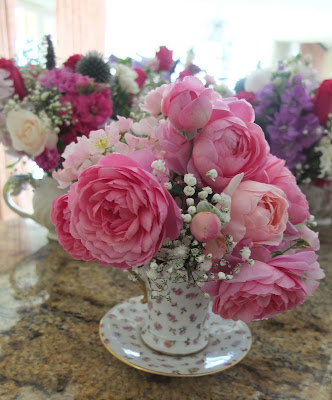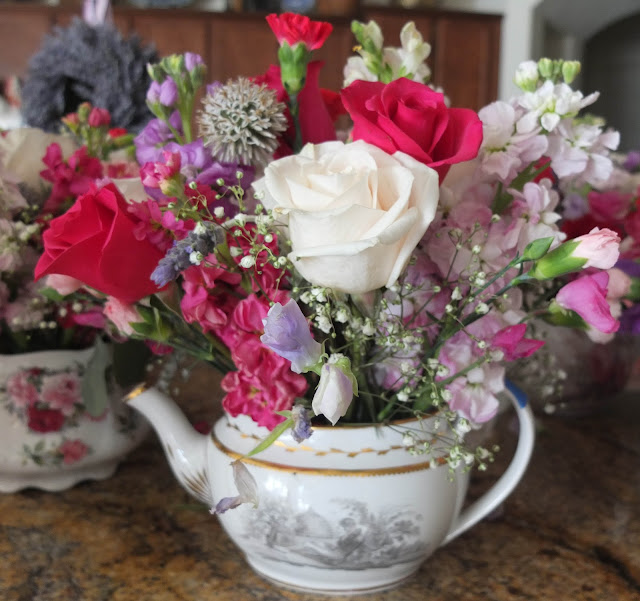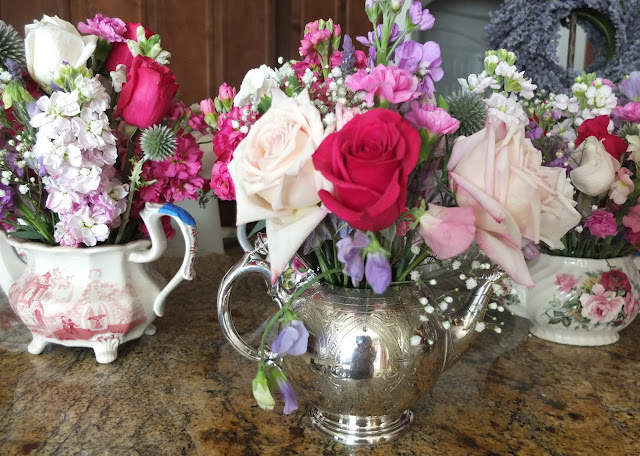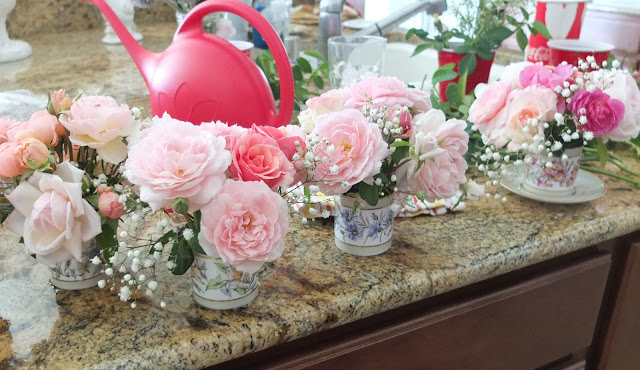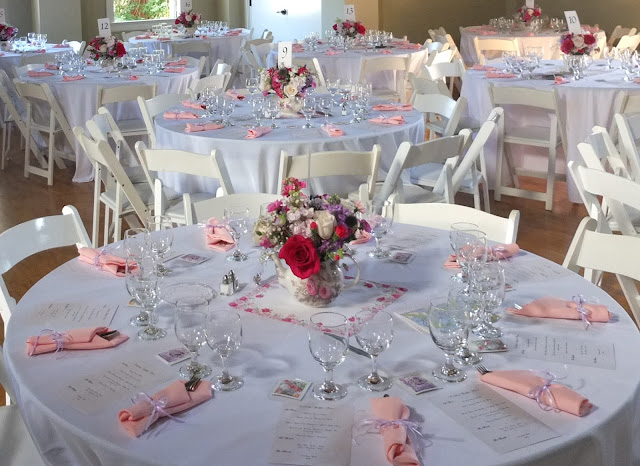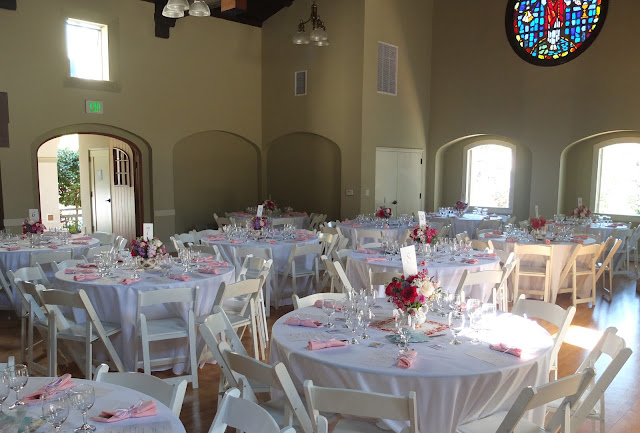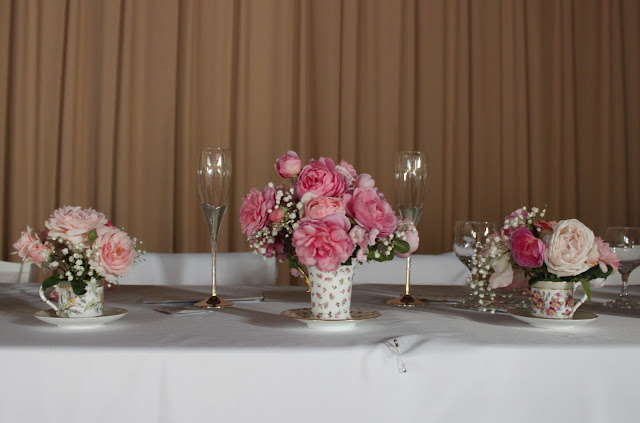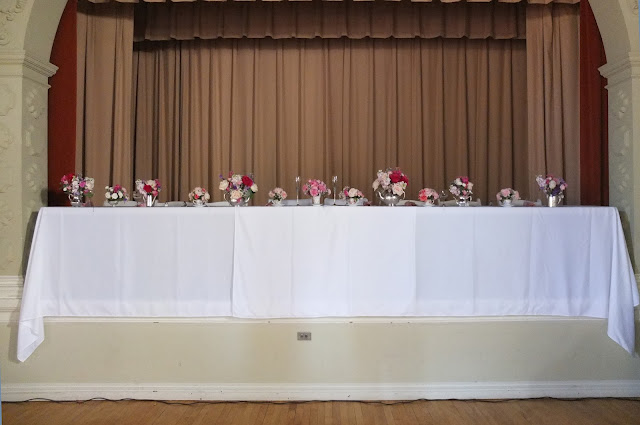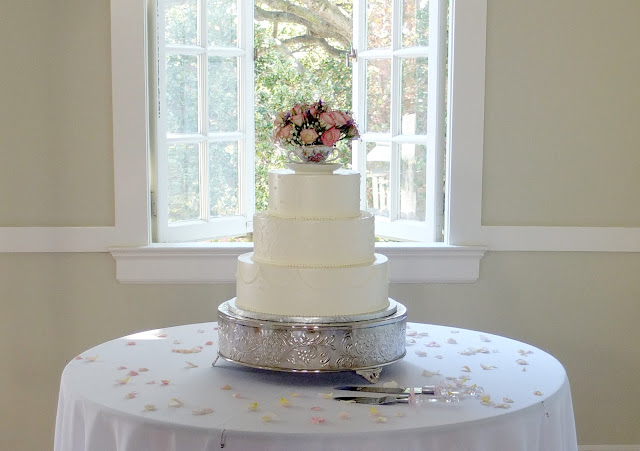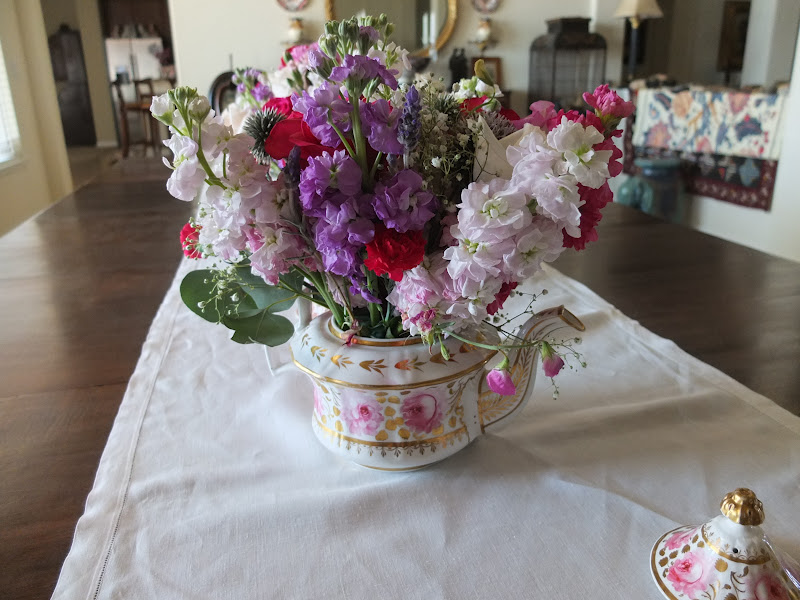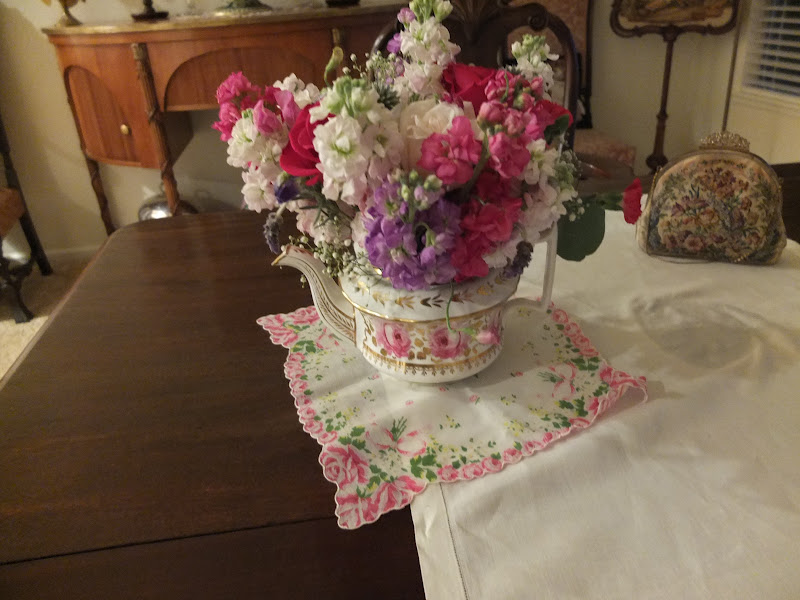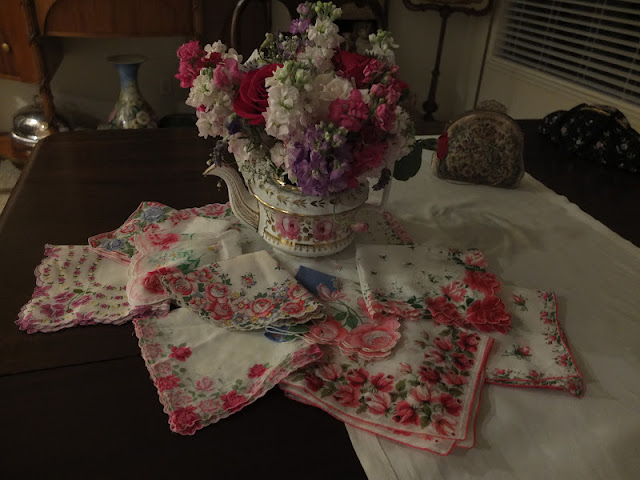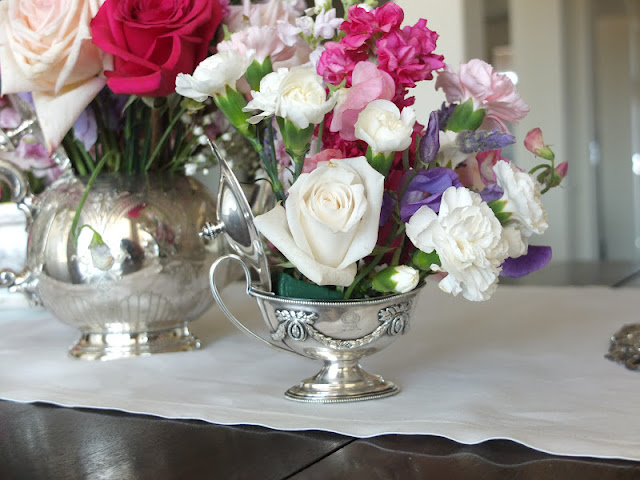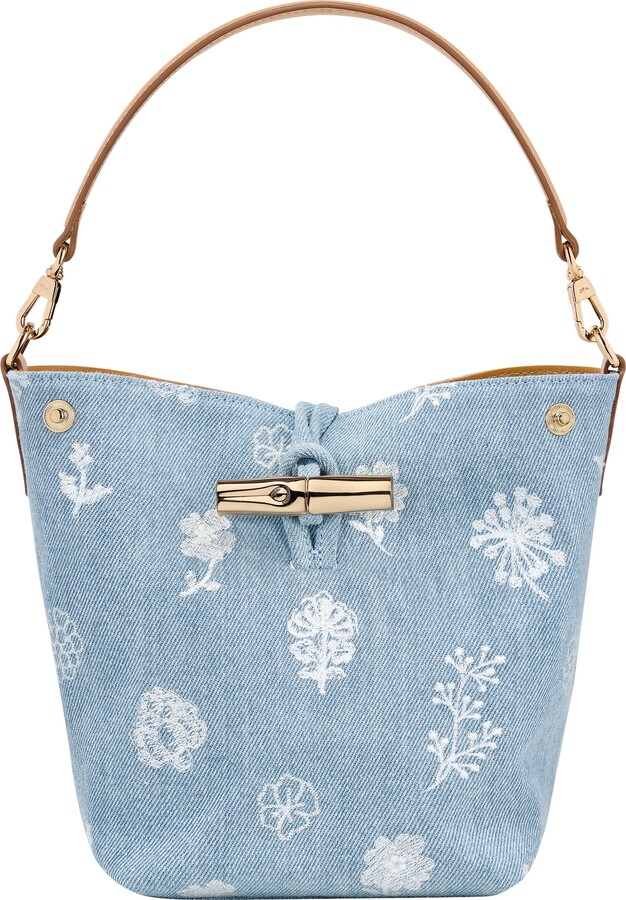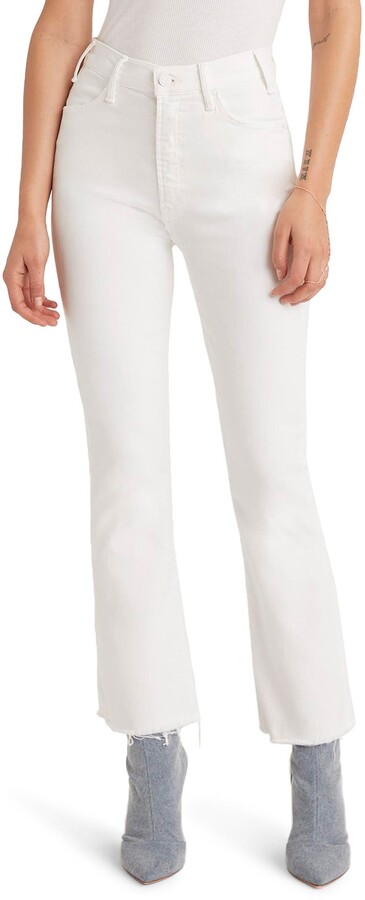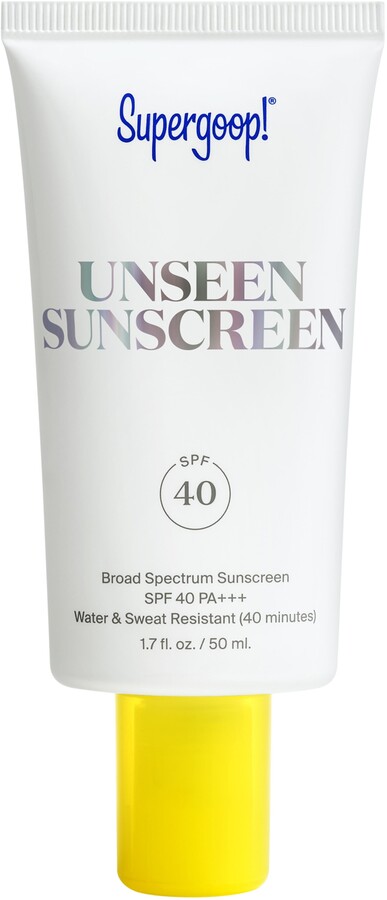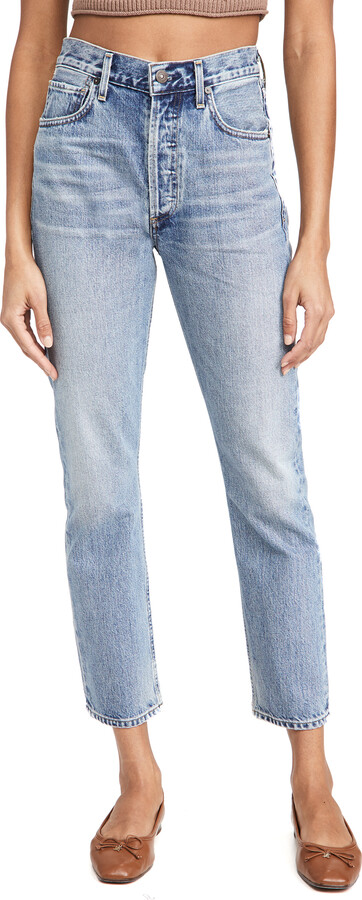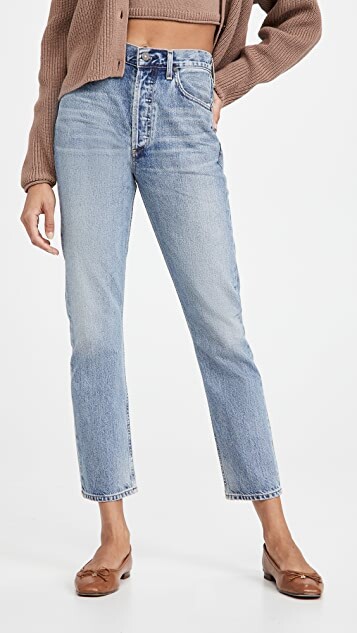Hanky Primer #1 Monogrammed Hankies
Hanky Primer #2 More Monogrammed Hankies
Hanky Primer #3 Embroidered & Petit point Hankies
I am not sure when my fascination with Appenzell began, but all whitework embroidery always catches my eye. I think I was the only person interested in buying hankies at estate sales for years, and I tried to keep it a secret, I mean who buys antique hankies?
Most people call this Appenzell, while some say it is from China. The Tourism Board from Appenzell has a video on Youtube describing how embroidery is done.
The video discusses the history of embroidery in the region. In Appenzell, Switzerland, embroidery has been a cottage industry for hundreds of years. In the early 1800’s, whitework embroidery really gained foothold. Famine in the country made it possible to earn a living embroidering. According to annatextiles.ch, two Frenchwomen gave an embroidery course in Appenzell in 1818.
The work would go to spa cities, where the wealthy would place custom orders. Example of hanky from the St. Gallen Museum, 2nd half of 19th century.
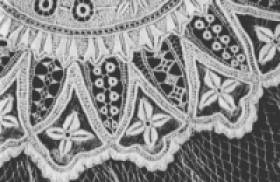 |
| from annatextiles.ch |
Appenzell hand embroidery really gained foothold around 1820, with the women of farm families doing the work. Machine embroidery was developed in 1850 which did the work of 40 people. Hand embroidery was still done with 70-90 stitches in use. Many different individuals would work on the same piece, with each person specializing in a certain technique.
By 1880, fine hand embroidery was on the decline, and was confined to Appenzell Innerrhoden. By 1920 half the women in the region did the embroidery to bring income into the household. Most farms were too small to support a family with income, so more income had to be generated. By WW2 there were 3500 women embroidering, with school girls working 3-7 hours a day on school days, and 12 hours a day on holidays. After the war, embroidery began to fall from favor, and the number of embroiderers dropped to 2000.
The ink you see is caused by a pricking device used to punch holes in the finished drawing. Graphite dust was then placed over the holes, to transferring the design to the cloth. It was then fixed with something to keep it from smearing. The video shows them spraying it.
The video talks about how the designs were limited by the artist, and people profiles were added after 1914 after the influence of an artist.
Some photos of work from the video are displayed below.
I feel the photos above are of items made in the 19th century, based on what I saw in the museum.
In the 20’s, a hanky would sell from 50 to 500 Swiss francs depending on the complexity. I couldn’t find a way to convert that to today’s dollars.
Earlier this year I managed to add a trip to the Appenzell Museum in Switzerland to a trip itinerary.
I did not have a lot of time to plan the trip, so I picked the Appenzell Museum because of the film I saw above. (If you are planning a trip, please add St. Gallen Museum to your list, I didn’t have time, but should have added it due to their much larger textile collection.)
We had a car so it was nice to wander through the Austrian countryside to Switzerland. The weather was typical spring– rain. That is not unusual, and just reminded me of Portland, Oregon.
goats…..
sheep…..
We made it to Appenzell. The museum does close at noon, so this was literally a 20 minute tour. There are many floors, but I asked to be pointed towards embroidery, and off we went.
I had to speed tour the exhibit. I was looking for “true Appenzell” embroidery, so I could be able to recognize it. What I am about to share with you was photographed through glass so the photos are not very good, but they are better than nothing.
Fist I would like to share with you a photograph of a woman from the turn of the century in costume, beautifully embroidered.
The collar below has bunny rabbits embroidered on it–how charming.
The needle lace “wheels” in Appenzell embroidery remind me alot of Italian Reticella lace. In one display they had a number of pieces of Reticella:
I can’t read German very well, and alot of my photos turned out blurry without a tripod, so we have to make do with what I have here. (Sammlung means collection).
It was very popular to insert needle lace, and here is a fine example of inserted “wheels” (my words).
The wheel below has 4 of those circles in the center of the wheel. Notice the “petal” structure in the cloth below– it is same as the collar above. However the leaves below are very artistic, with half padded satin stitch, and half seed stitches. I see this technique used on alot of Madeira embroidery.
In addition to the little needle lace inserts, you see a lot of open type buratto work, drawnwork in the background. The sampler below is a great representation of technique. Don’t forget to right click on the photo and open it in a new tab so you can blow it up and look at the different techniques.
In the museum and in the video, they reference the need to indicate authentic appenzell work with a label
I’ve seen hankies with this label, but labels don’t always survive, so I thought I would share with you hankies I saw in the museum. I notice that the work from the 1800’s is different from the work in the 1900’s. The fabric is different, more of a sheer batiste vs. linen, and the designs are more ornate.
This group of hankies is from the 1870’s:
I am not sure of the age of the hankies below. It is similar to many hankies I own.
Aren’t these hankies lovely and delicate!
The hankies below are from the 1900’s
The item below is not a hanky, but typical Appenzell– a tablecloth.
The hankies below do look like some of the hankies we see today on Ebay.
I kept digging. I am looking for hankies that say Appenzell, and found one on the internet from an old Ebay auction. This did not have an Appenzell label that I recall, but it did have a Swiss box. It may have had a label, but I didn’t save the photo. Stoffels was a textile company in St. Gallen (the marketing HQ for Appenzell, basically). Original box, tissue and ribbon.
The next photo is of a hanky that has an original label on it: It has two labels, one says Hand Work Brode Main, and the other Schmid-Linder 6000 Lucerne Switzerland. It came in an original envelope that says Appenzell Swiss Made Alba. 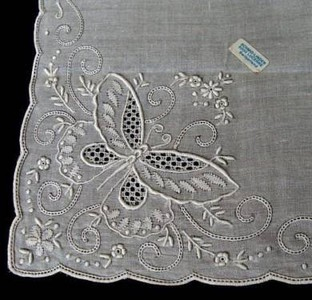
As you can see, these two examples are two degrees of quality– both likely from the 20th century. The top hanky is truly typical of many that you see on Ebay as Appenzell. I remembered I had an Appenzell box called Appenzell effect.
The embroidery is cute, but not the same type that I am trying to research. However it does show you the style of flower that was embroidered.
I tried to see if anyone else has made the comparison on the internet. I found Elizabeth Kurella, on her website, did have a comparison of Appenzell vs. China:
Chinese / Swiss
She notes that Chinese fabric is more open, less stable, the thread less silky, the stitches not consistent, the ladderwork looser, motifs more graceful. The petals are tapered on the hanky on the right. ( I purchased her Whitework hanky book, a great book if you collect 19th century hankies. I’ll settle for owning at least one in her book!!!)
So where were the hankies made that were imported from the 20’s to the 60’s? Well, the answer lies with a company in Hong Kong called the Swatow Lace Company, incorporated in 1924 and dissolved in 1964. There is a pinterest board that has more information on the Swatow Lace Company. They have a photo of a hanky with a label. The hanky is marked $18.50
. Honestly, I’m not too impressed with the level of detail.
The Swatow Lace Company marketed hankies from a town of Swatow, which was 180 miles from Hong Kong. I found an article here about the town of Swatow and how the embroidery trade stopped when it was taken over by the communists in 1949. This was a cottage industry, embroidery made by farmers families, just like in Appenzell, Switzerland. Prior to that, Swatow produced 24,000,000 handkerchiefs a year! The fine hankies would sell for $50/dozen wholesale, and sold in the U.S. for $20 each. That was a lot of money in the ’40’s. So roughly half of the hankies on the world market came from Switzerland, and half came from Swatow.
Everyone says that this embroidery is a lost art and almost no one has the skill to do it anymore. I keep thinking about how that may not be true. I went looking for current imports of hankies and look what I found made in China:
It appears that the new hankies are more over the top– they are completely covered with embroidery, right through the center. Much of the embroidery has a Asian design influence, cranes, etc. The designs seem a bit more angular than the older Swatow/ Appenzell hankies. They certainly are worth looking at for purchase– the amount of labor that it took to make these is incredible.
I think my hankies are vintage and look different from the new stuff coming out today.
I have been studying my hankies to see if there is a difference between them, the embroidery, the linen, etc.
The China hanky is on top. (above). Below, is a closeeup of the China hanky.
How do I know? Well I bought it because it has a label in it. From a San Francisco dealer. Given the age of China town, who knows how old it is. I think the linen is equivalent to hankies I see with Irish Linen stickers on it. The sticker below really looks vintage, doesn’t it.
The take-away that I have from all of this research is that there were two embroidery centers a world apart, and not only were their labors over hankies the same, they had the same family life, of growing up in a farm setting, unable to make ends meet with farming, and women and children sacrificed everything making beautiful works of art.
Here are some of my hankies that I think are Appenzell 20th century. They are totally encrusted with embroidery. You can click on the hankies and look at enlarged photos. (Right click the second time)
I really like the circular design of roses on the one below
I think the one below may be early 1900’s.
I used the one below to make a ring bearer pillow. We added a silk peony on top for fun. (A great wedding idea!)
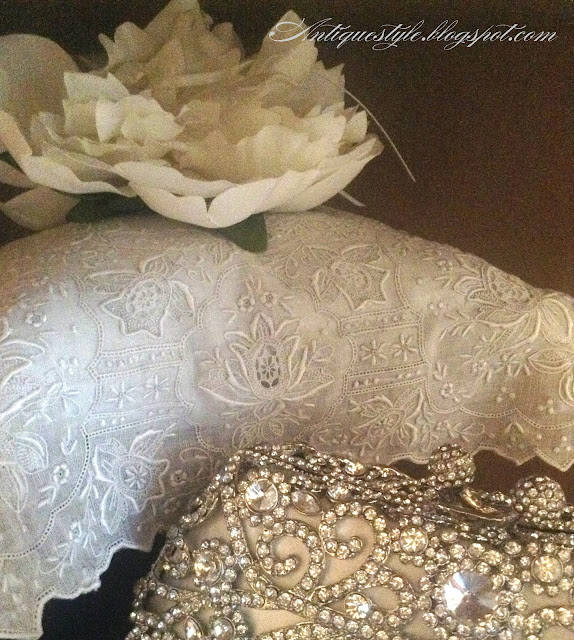 |
| Ring Bearer Appenzell Hanky Pillow |
My conclusion is that each hanky must stand on its own merit, Unless you actually have a label, you may not be able to determine the origin. If you love the design of the hanky, the workmanship stitching is well done, you should consider it for that reason.
If you are interested in purchasing an encrusted hanky on eBay, they are often listed as “pulled thread” hankies or Appenzell hankies. Using those words in a search should help you find one that you love. They are a fabulous present for a bride to carry. I made the ring bearer pillow out of an Appenzell hanky. You can purchase them for as low as $35, although many websites sell them for as much as $400. The average price on eBay is in the $80- $100, at least this year. I am talking about the 20th century hankies, not the 19th century hankies, which range from $150-$600.
Thoughts? Please keep in mind I am not a professional researcher, I am merely a linen lover who is trying to figure out what I have. I am amazed that I was able to get as far as I did without help. Anyone have an Appenzell catalog or a Swatow catalog to share?
I have focused on 20th century Appenzell hankies. I would like to follow up with an article on 19th century hankies. If you’d like to continue reading about hankies, here are links to my other articles.
Hanky Primer #1 Monogrammed Hankies
Hanky Primer #2 More Monogrammed Hankies
Hanky Primer #3 Embroidered & Petit point Hankies
Hanky Primer #4 Appenzell & Appenzell Style Hankies
If you have any information on these Appenzell or Swatow hankies, please let me know.
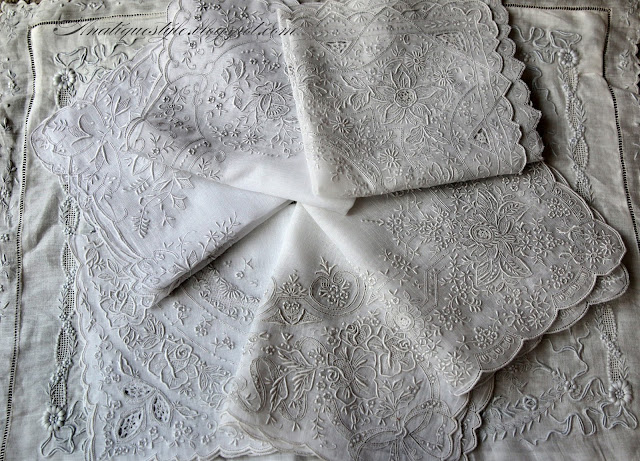
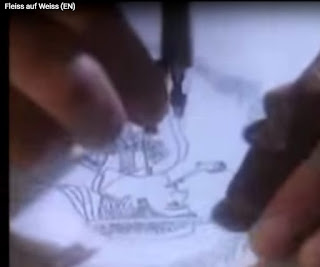
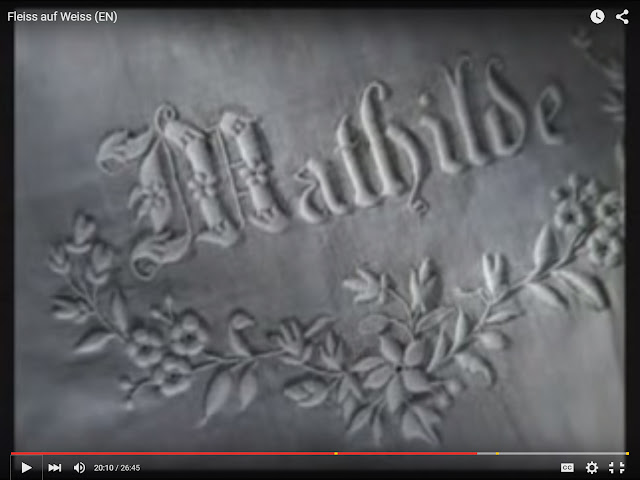
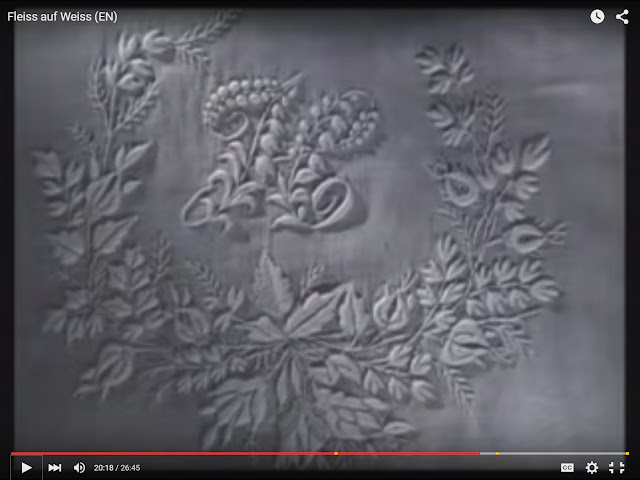
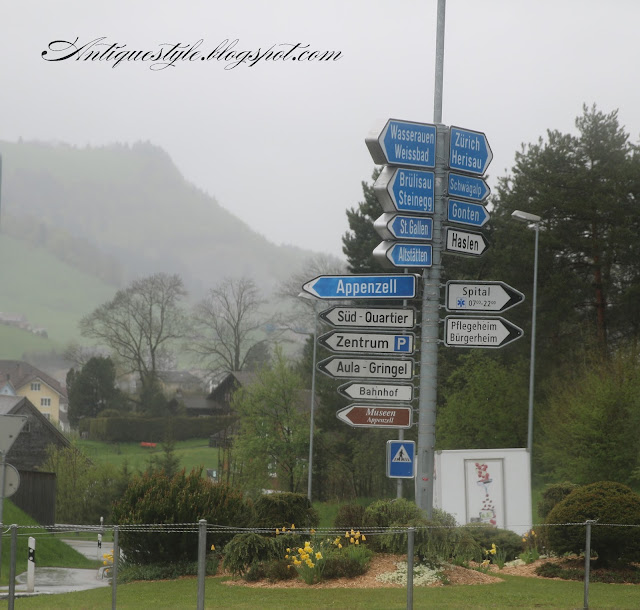
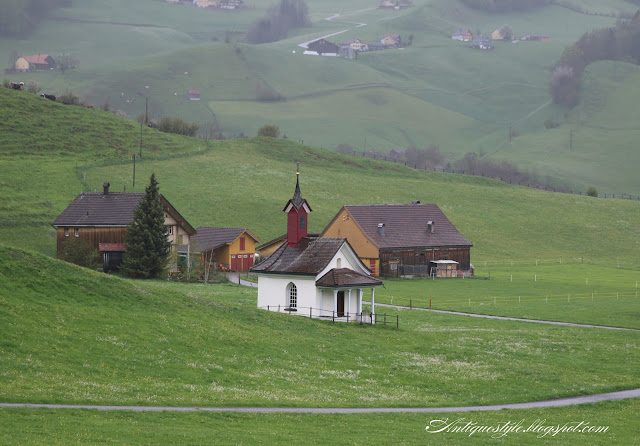
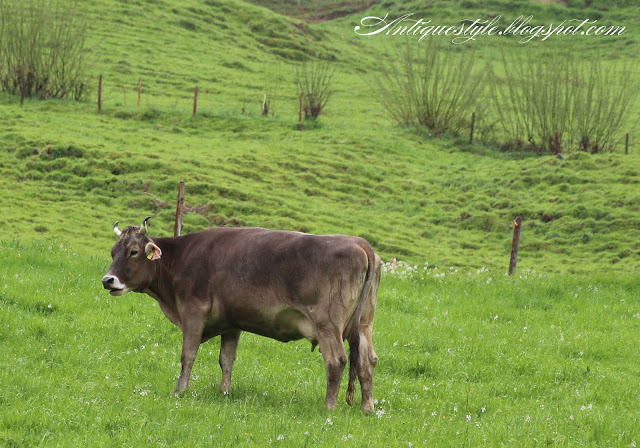
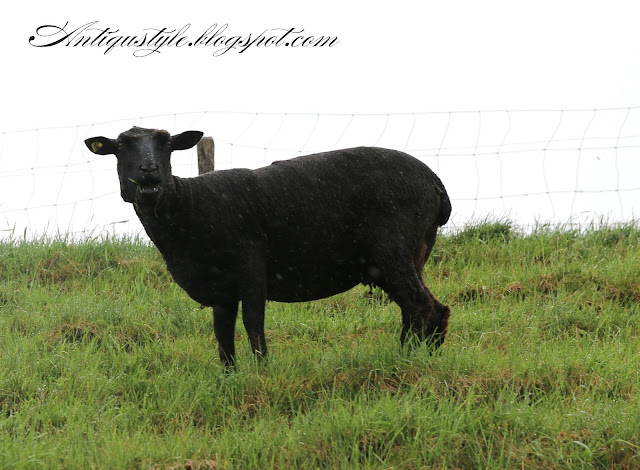
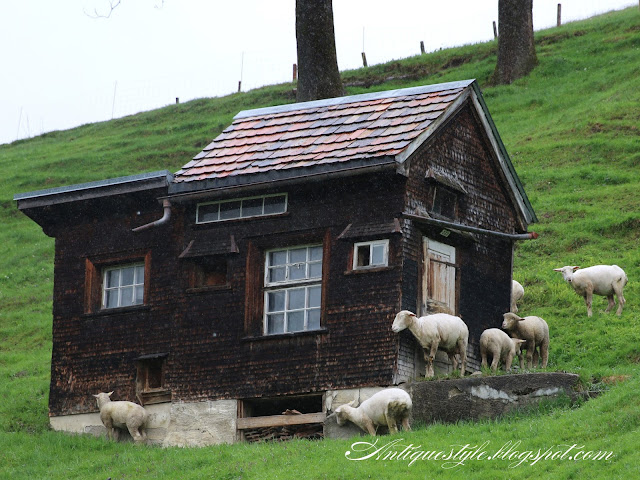
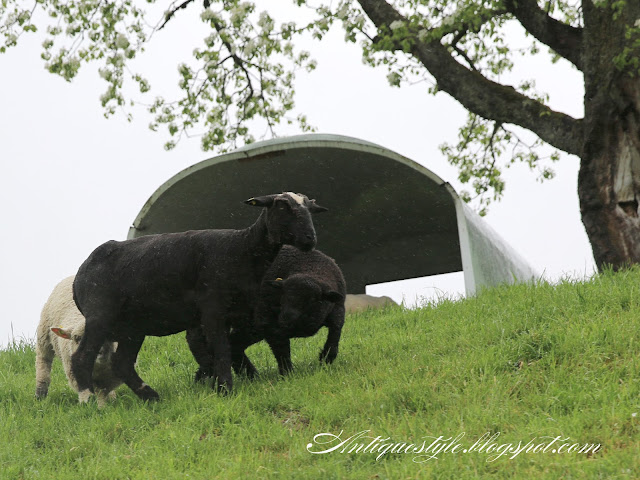
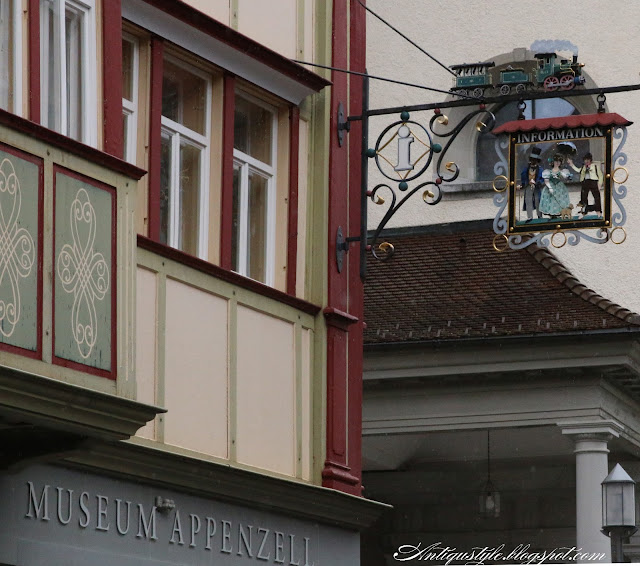
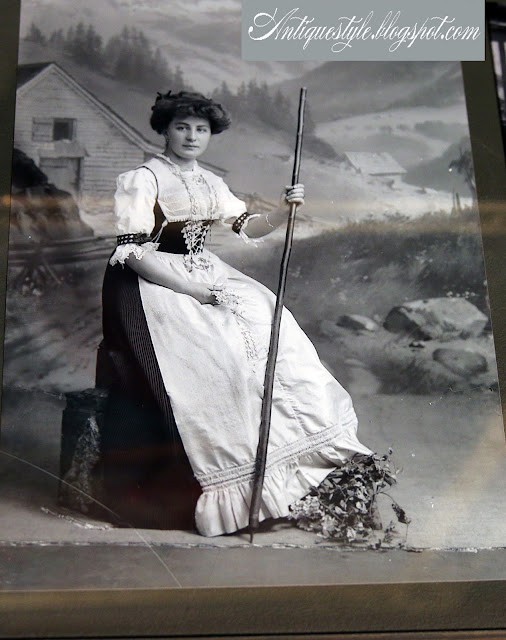
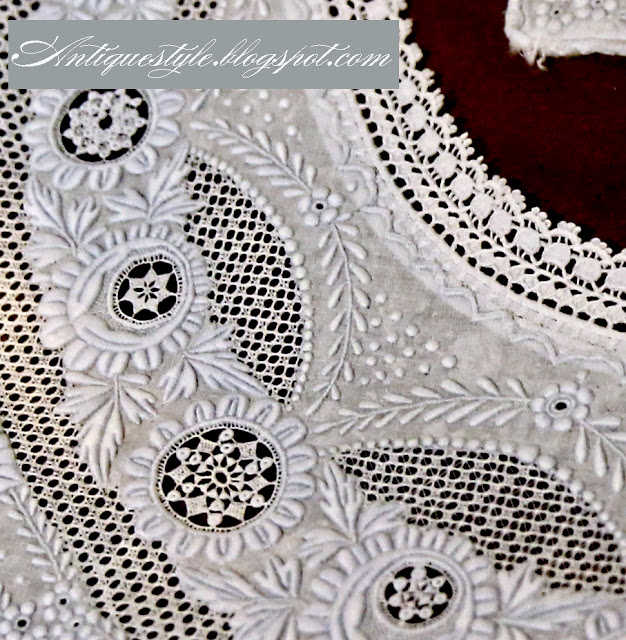
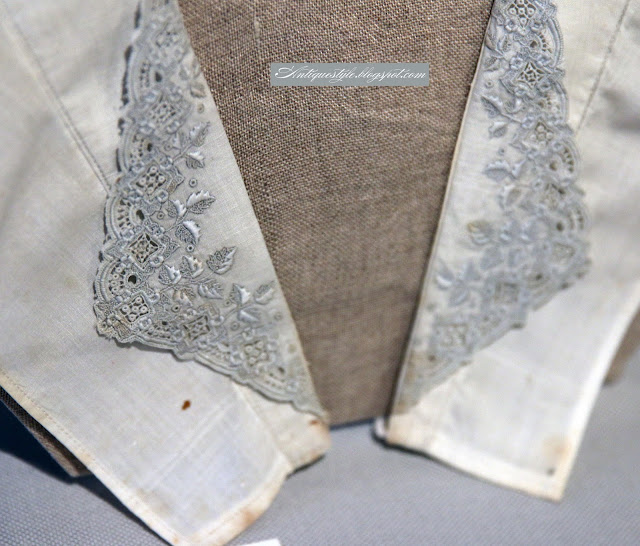
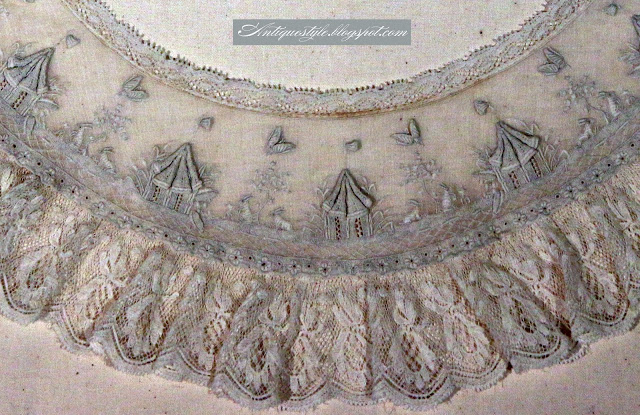
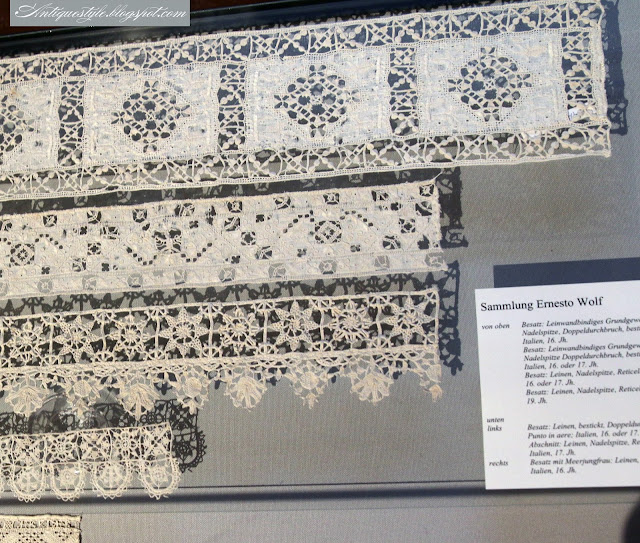
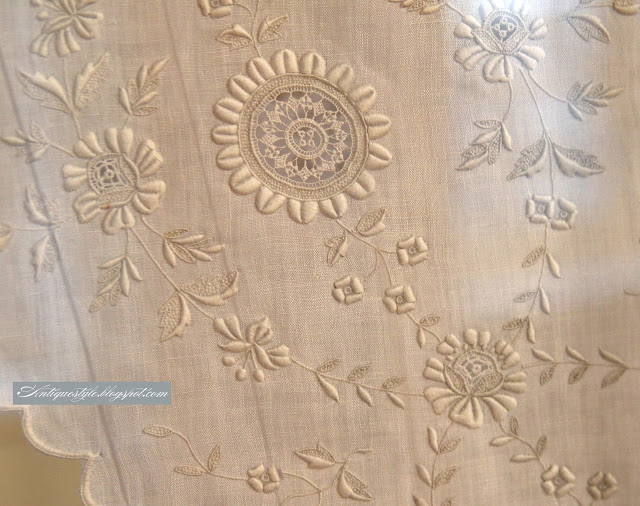
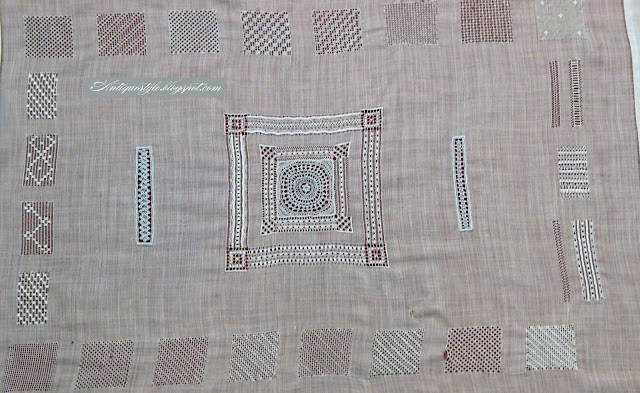
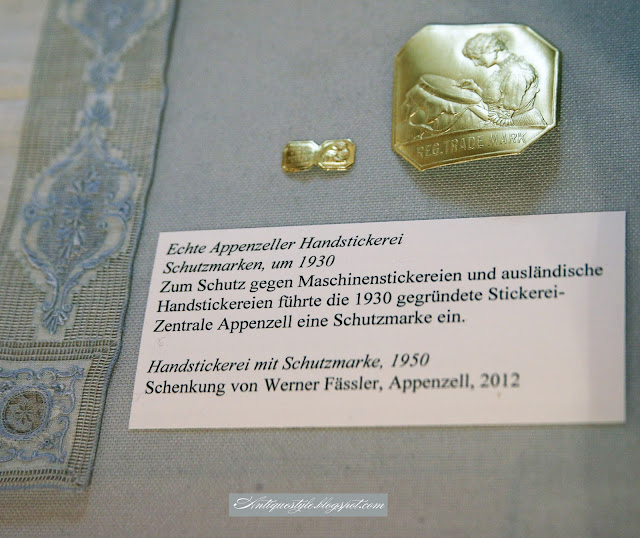
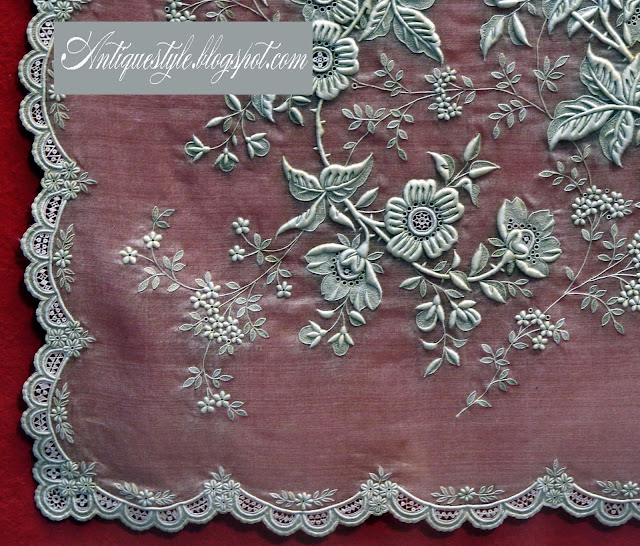
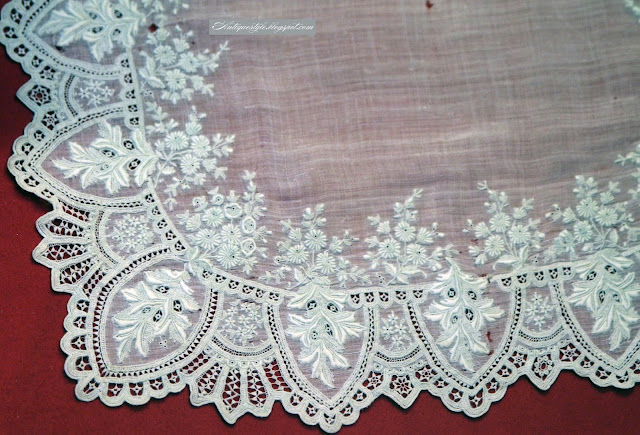
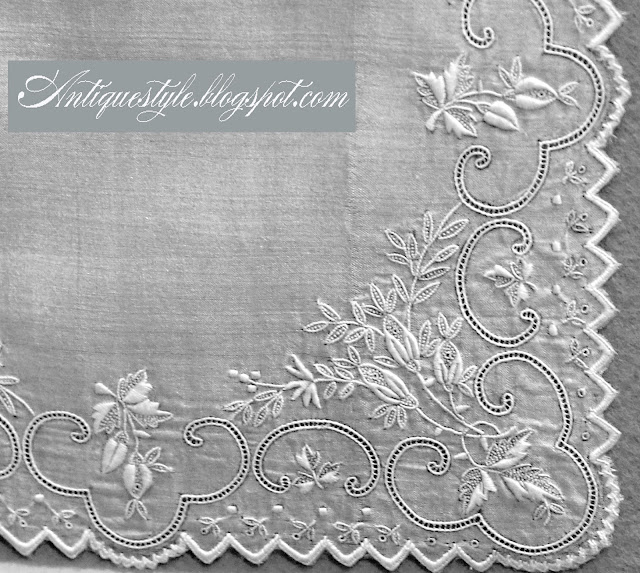
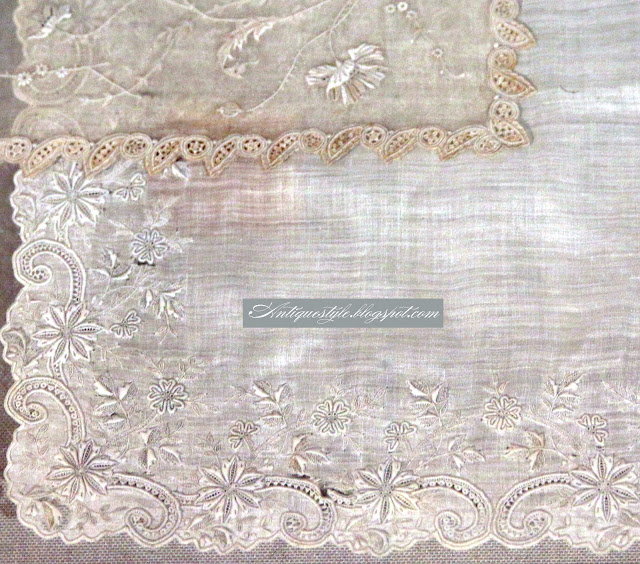
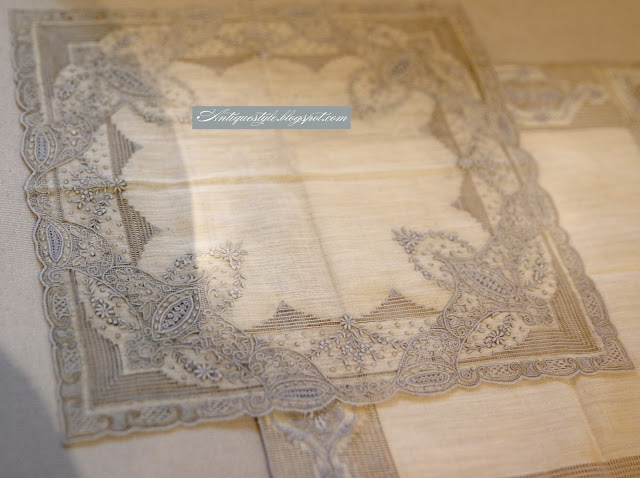
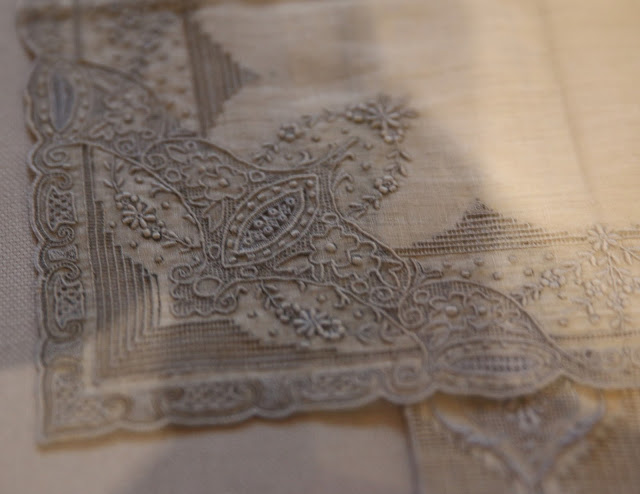
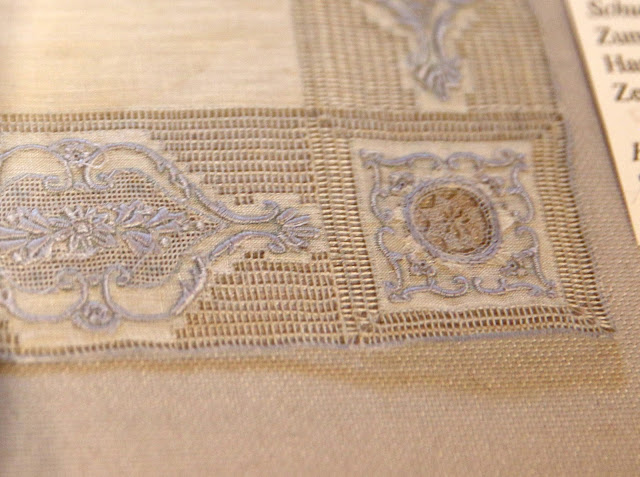
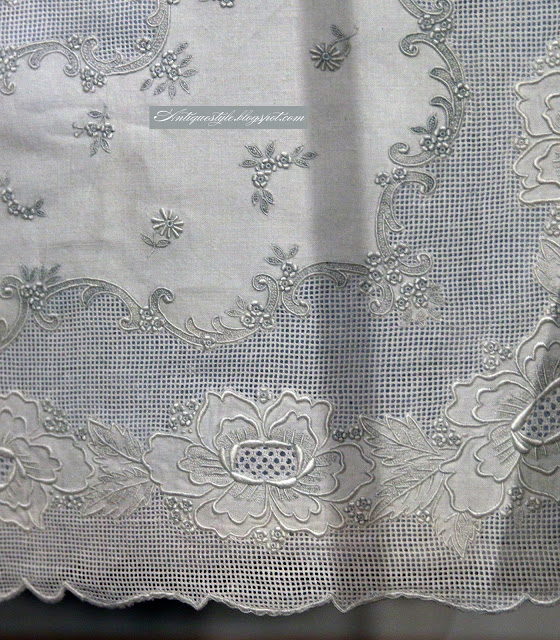
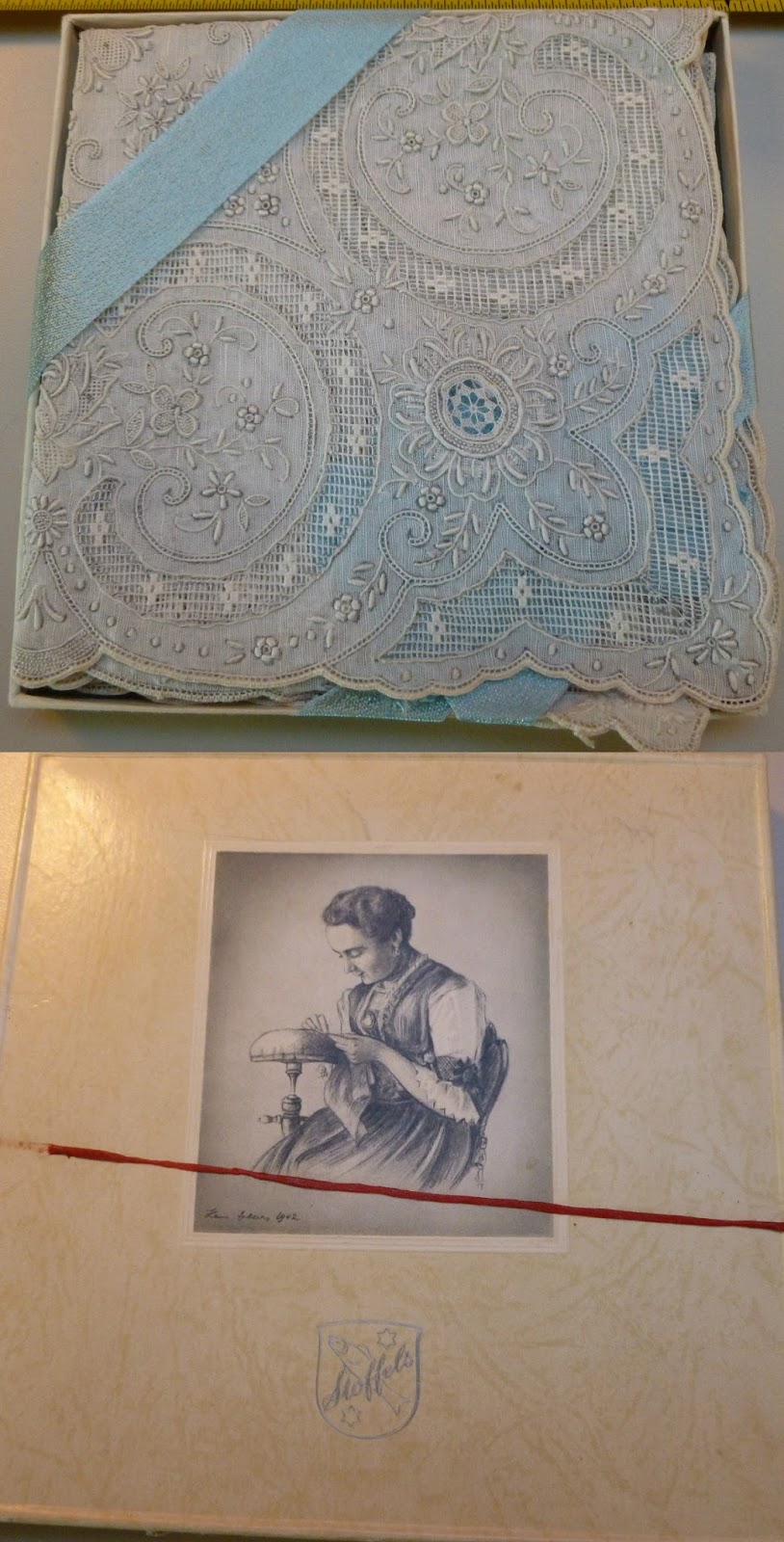
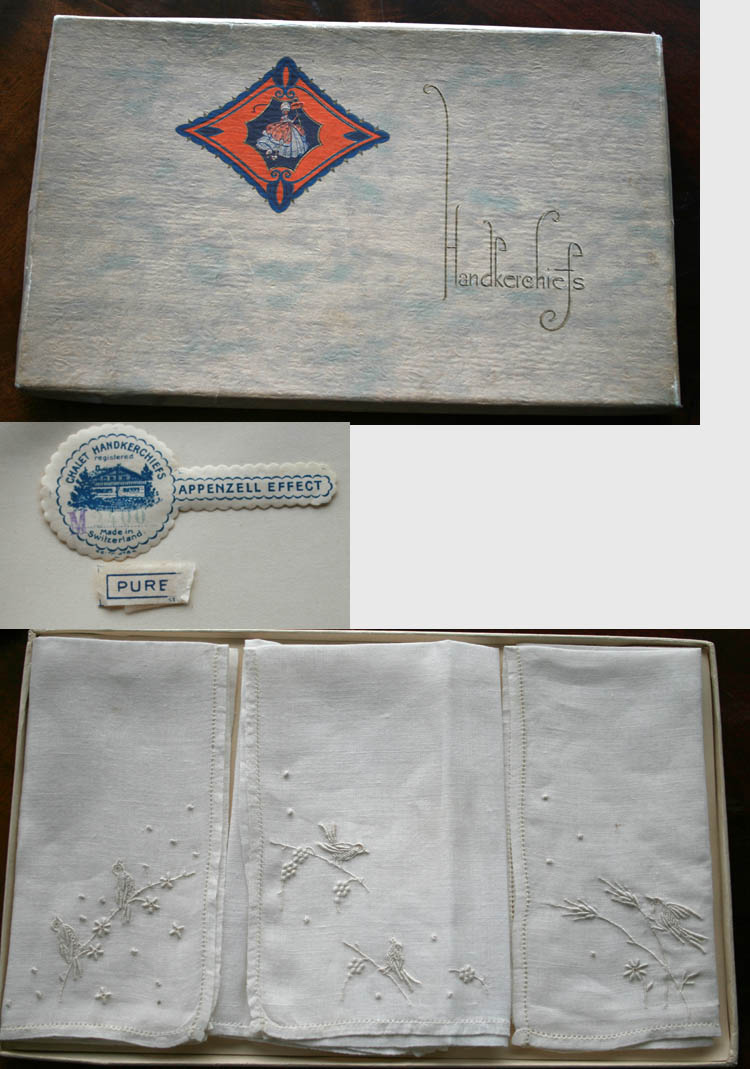
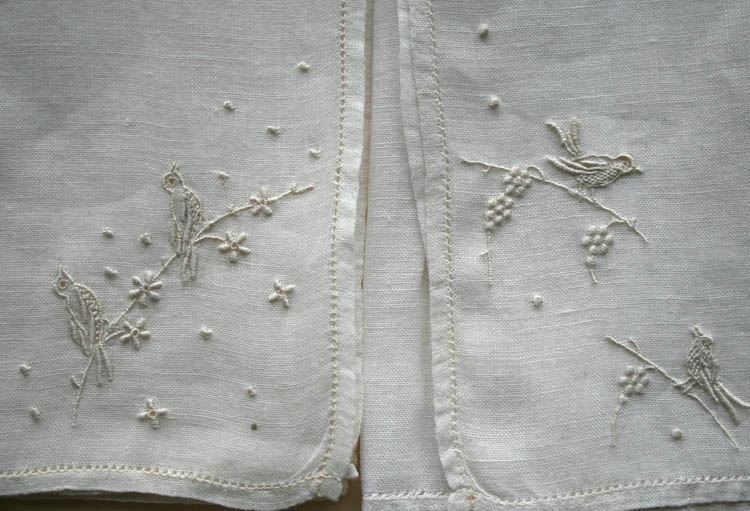
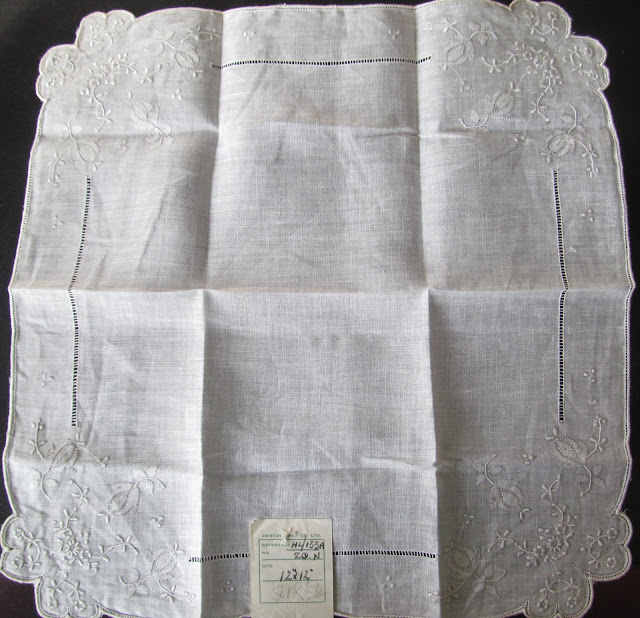
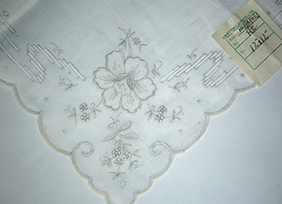
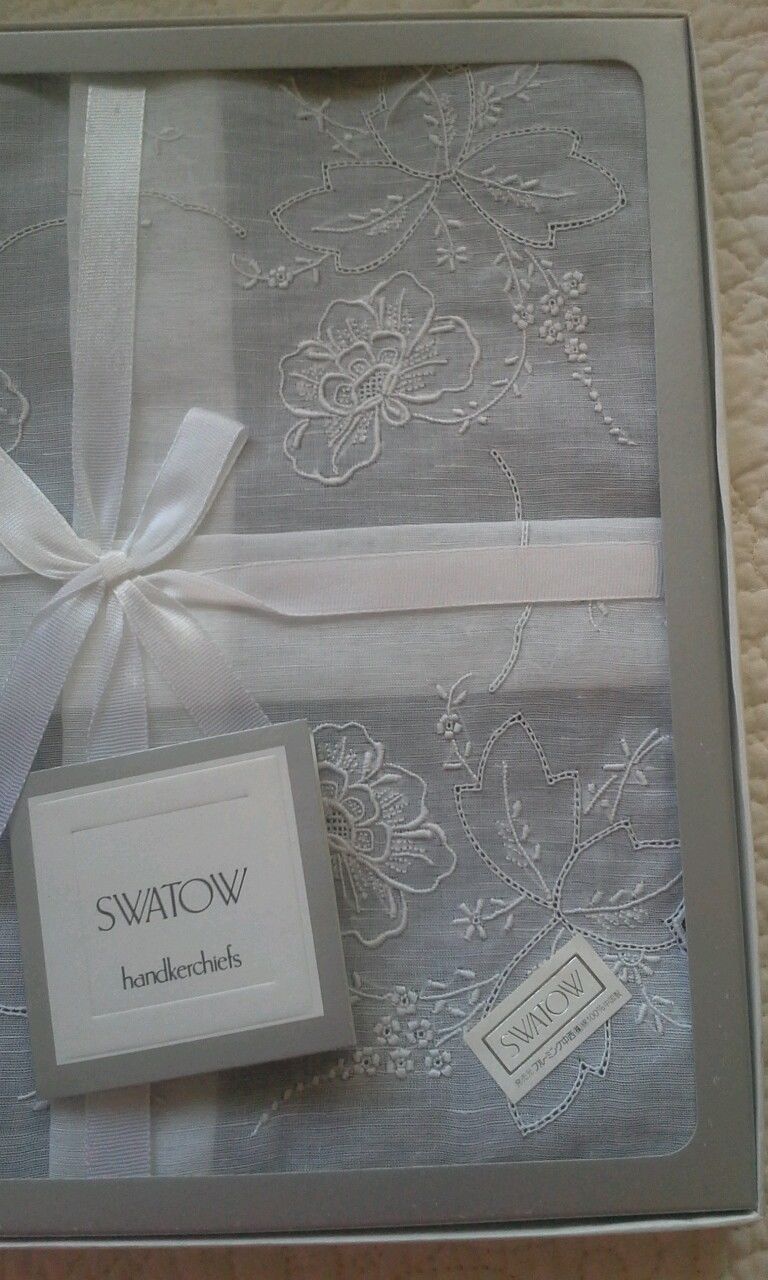
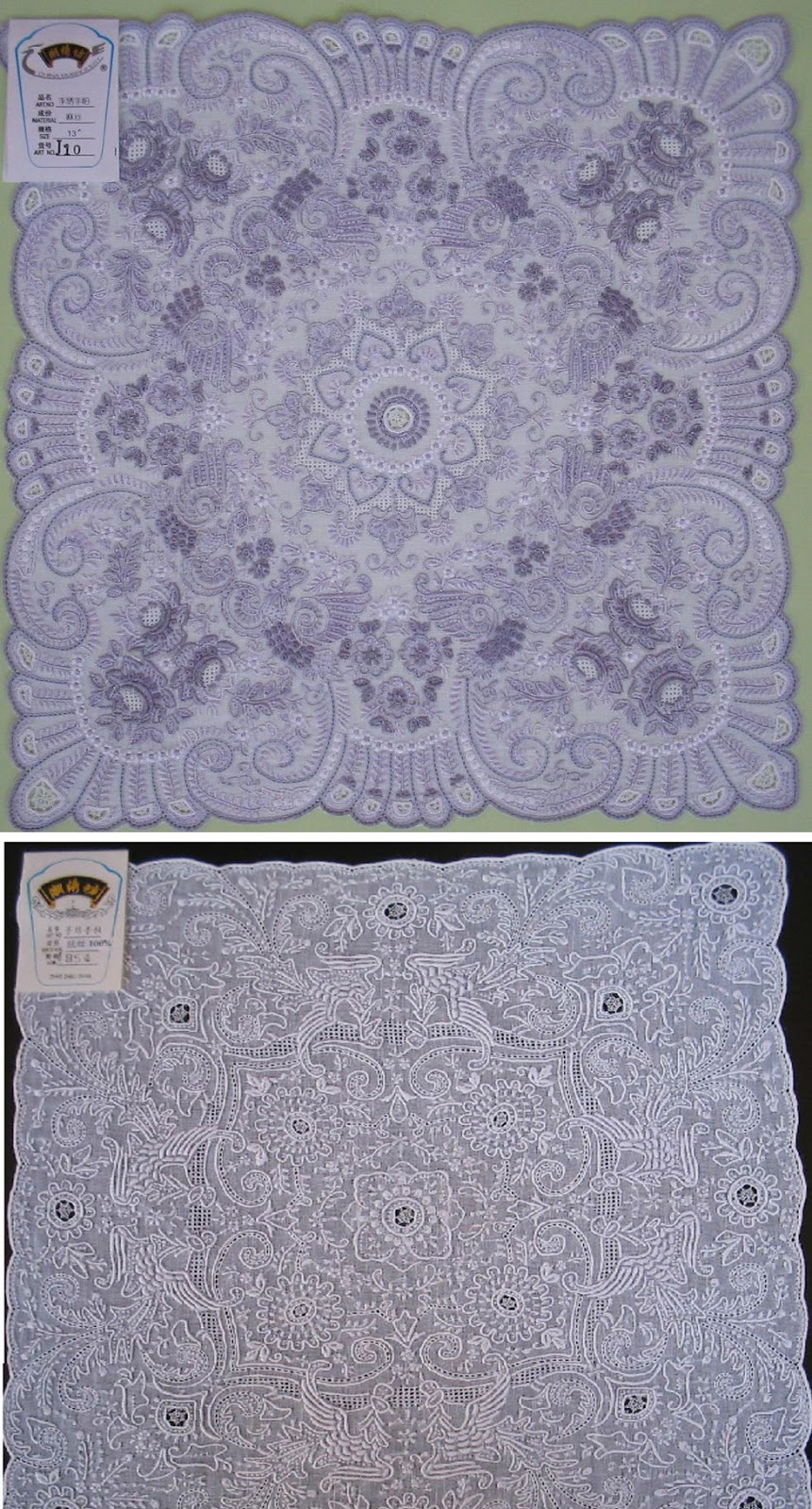
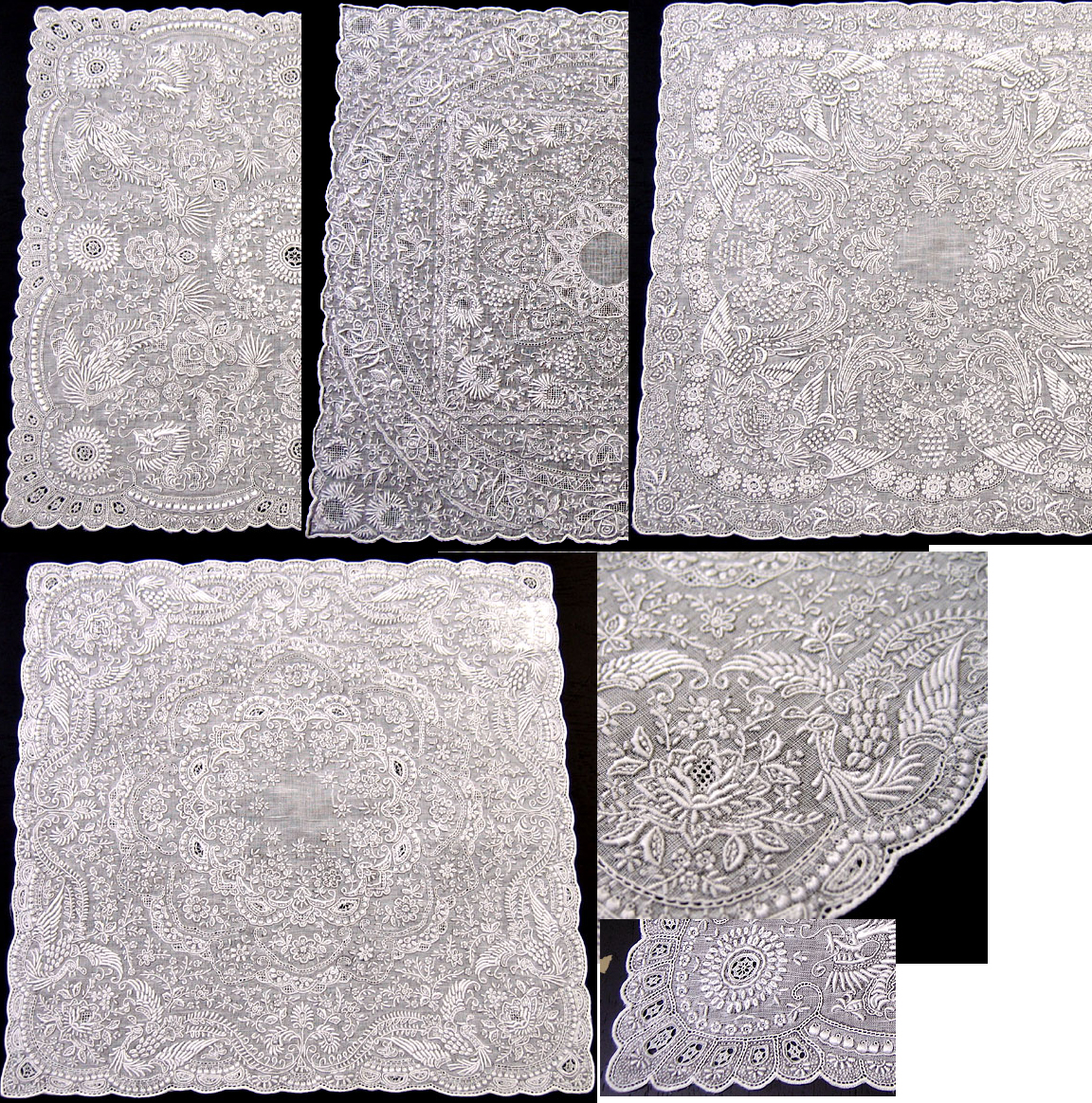
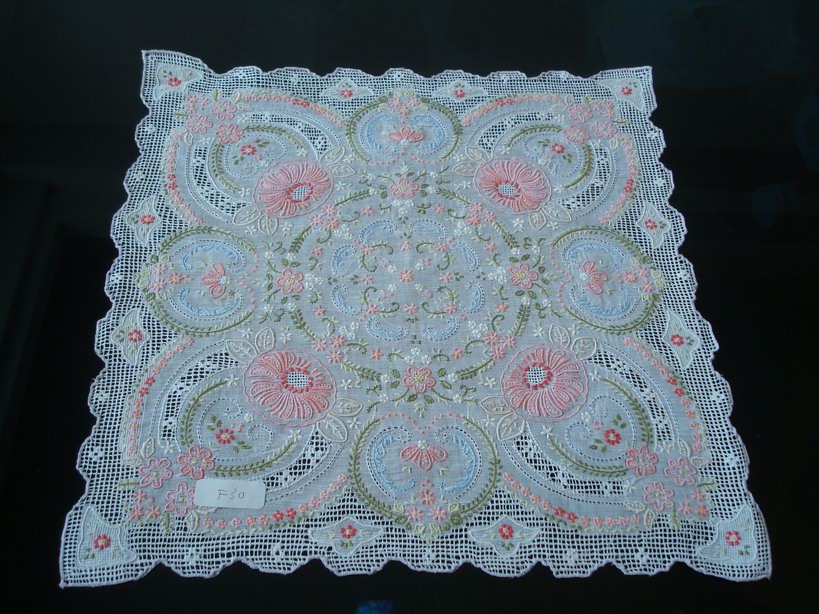
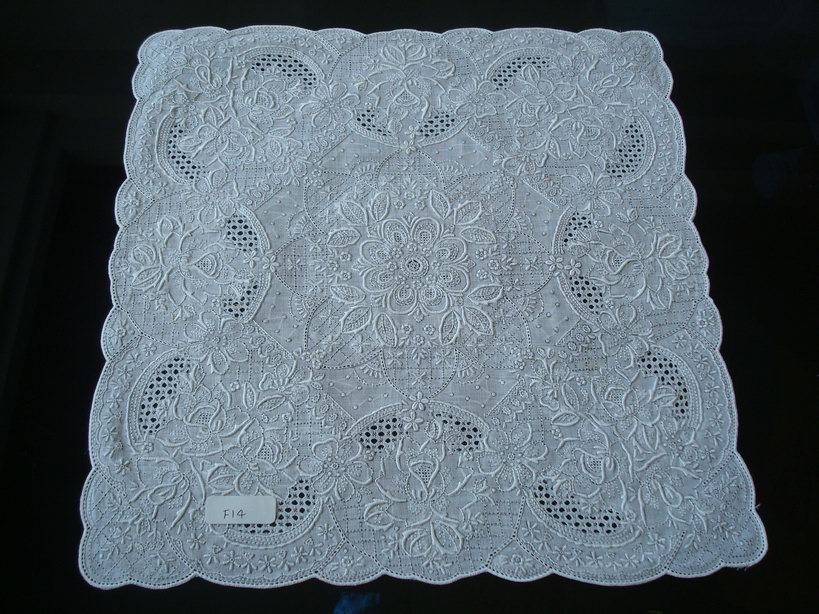
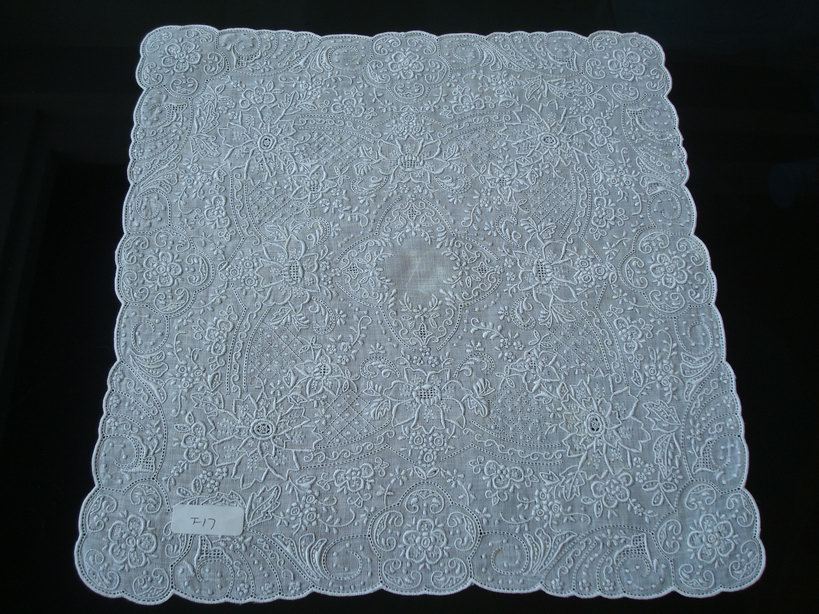
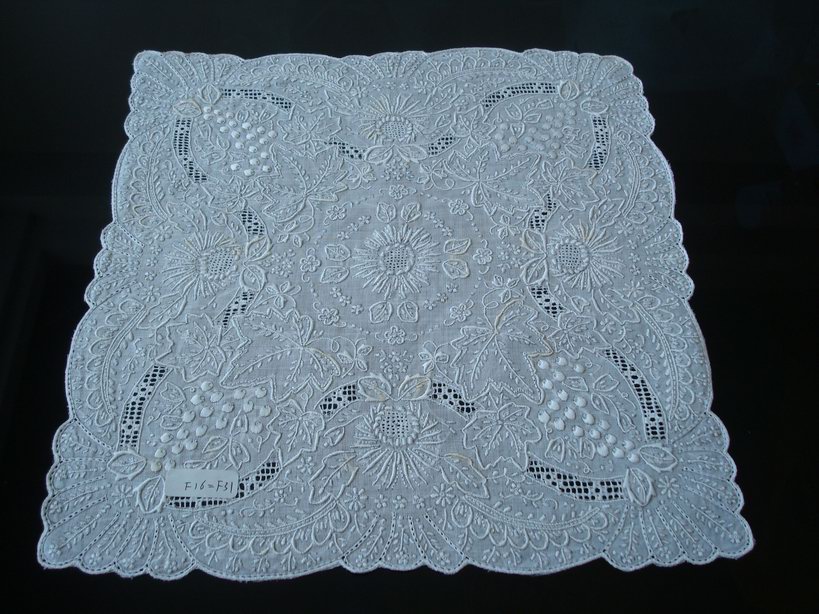
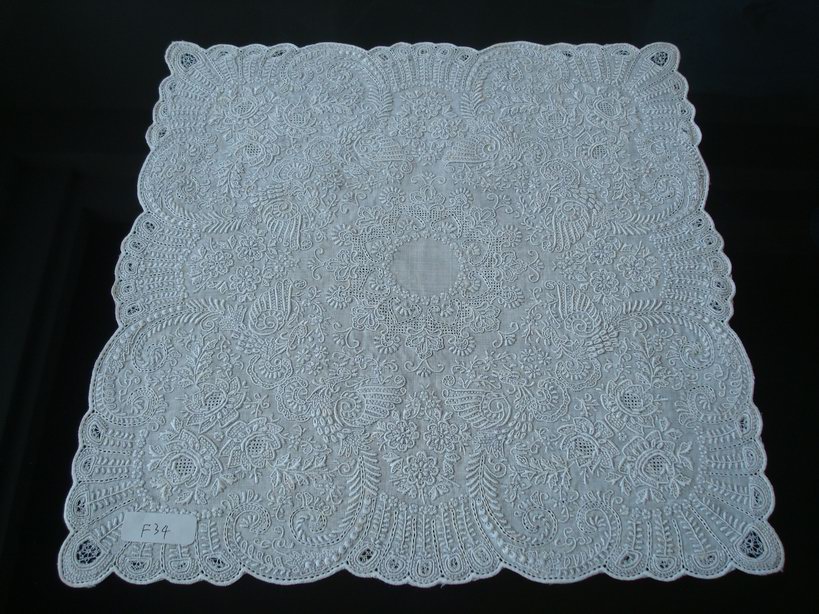
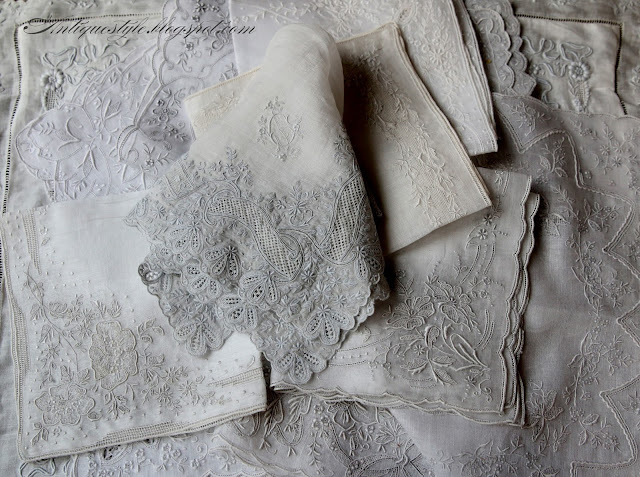
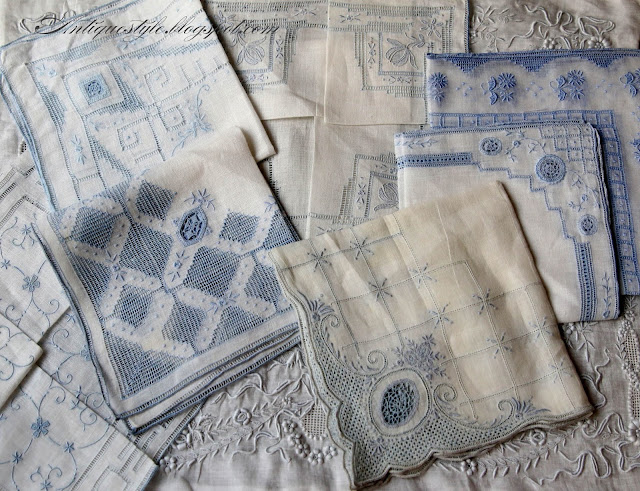
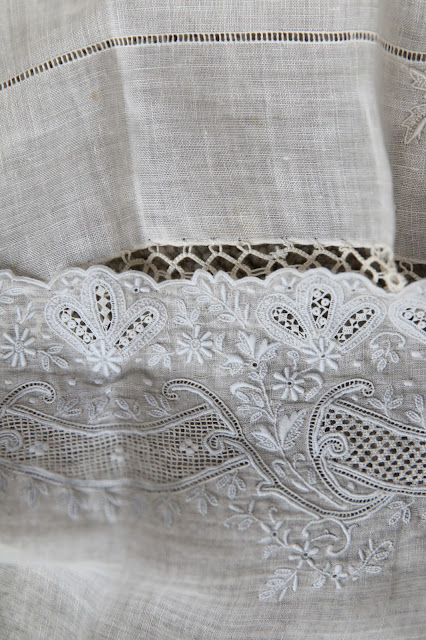
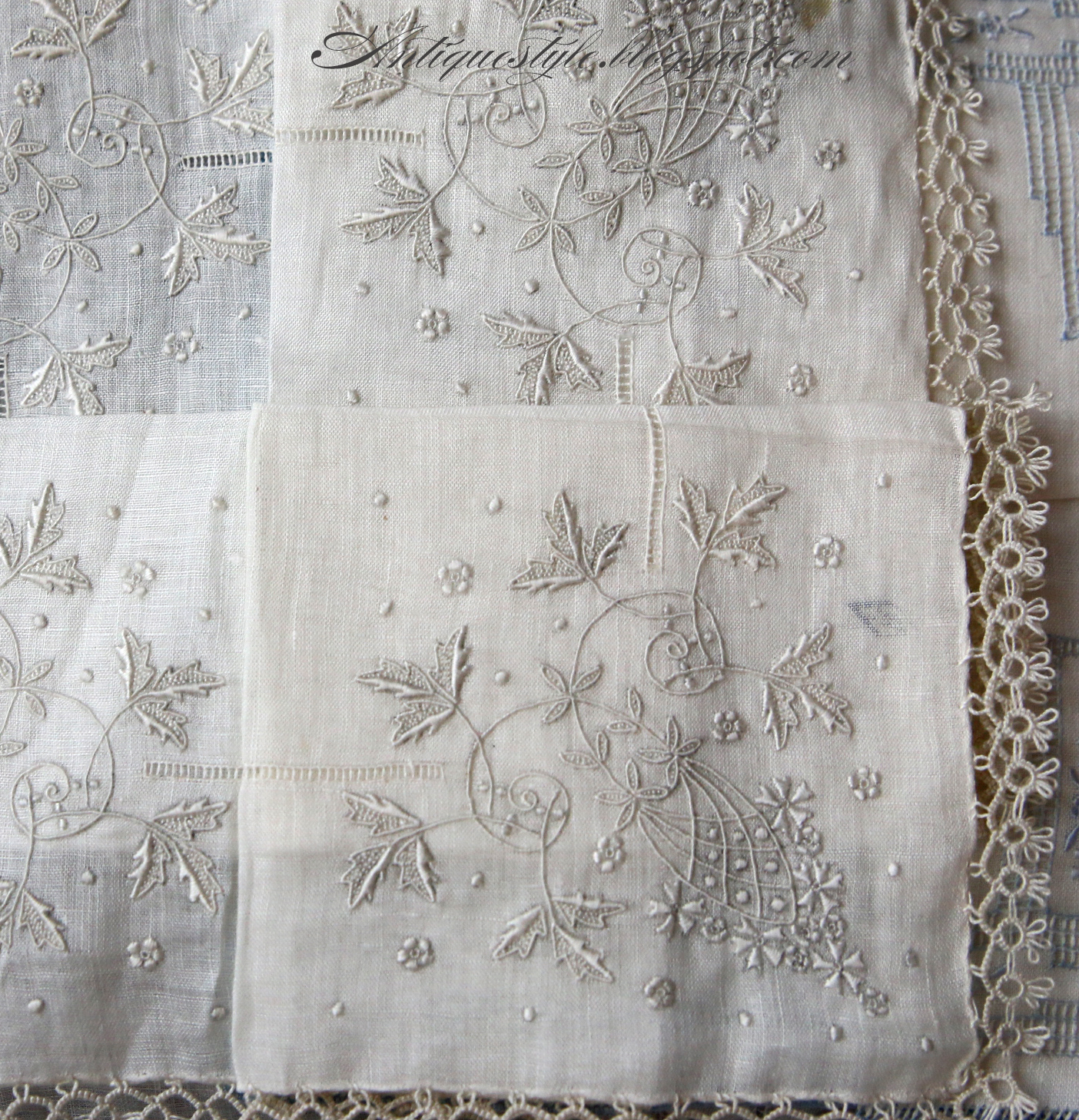
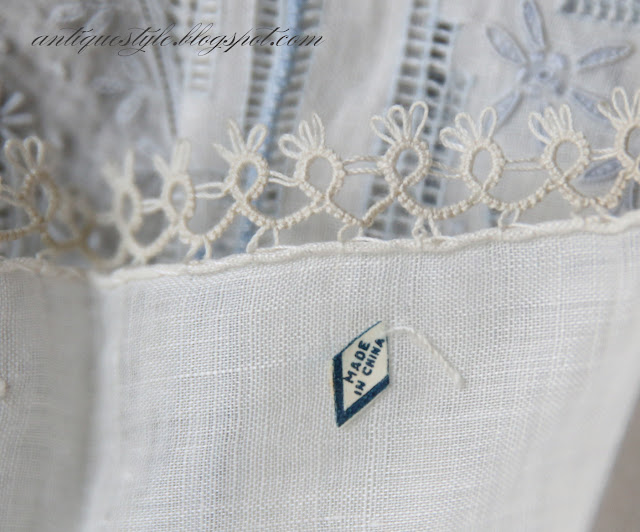
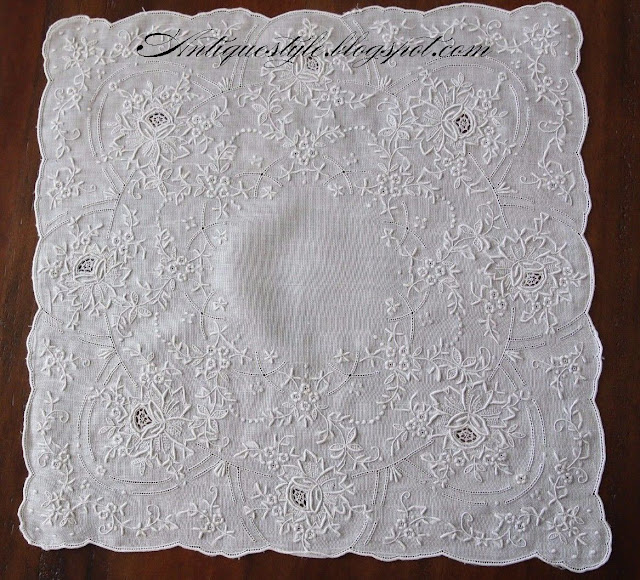
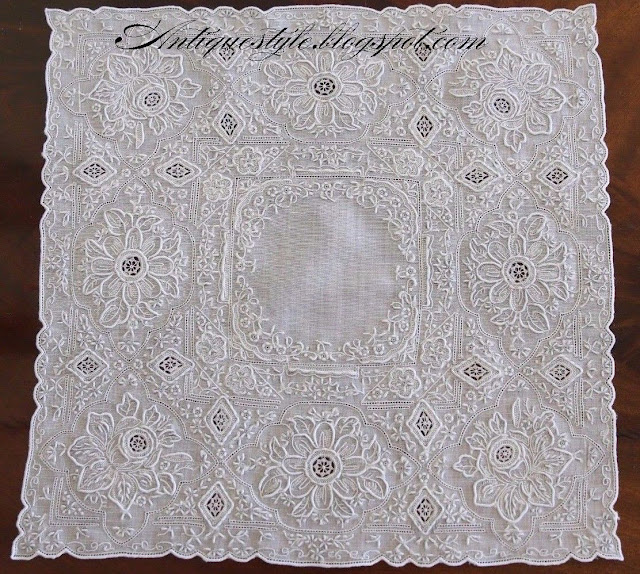
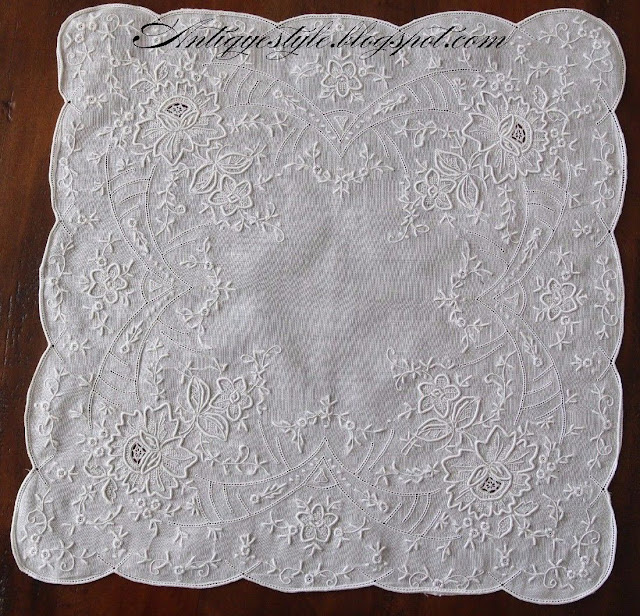
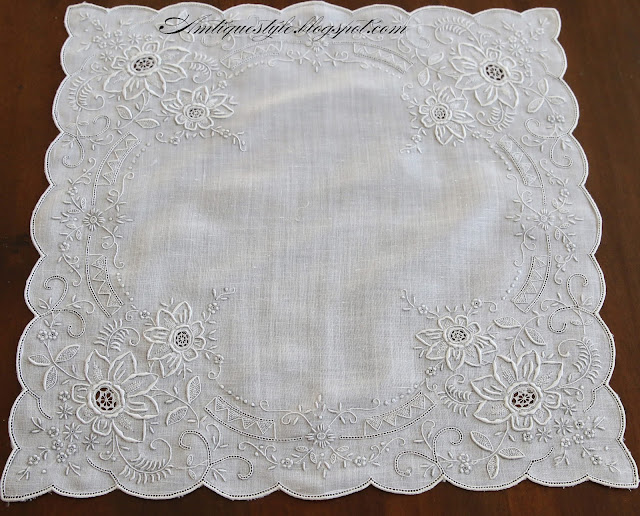
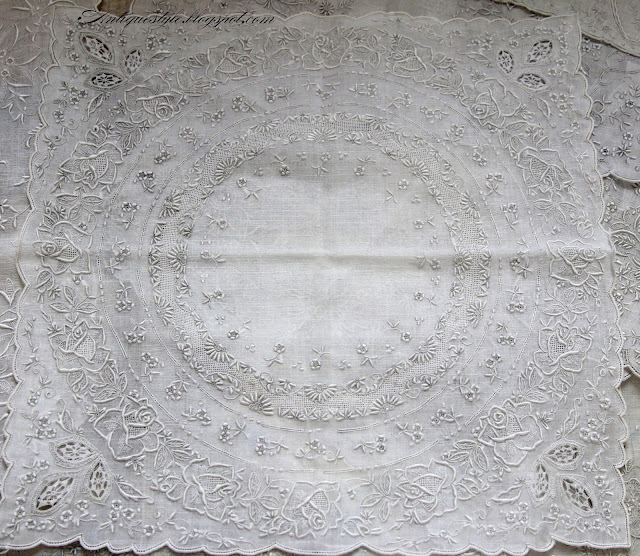
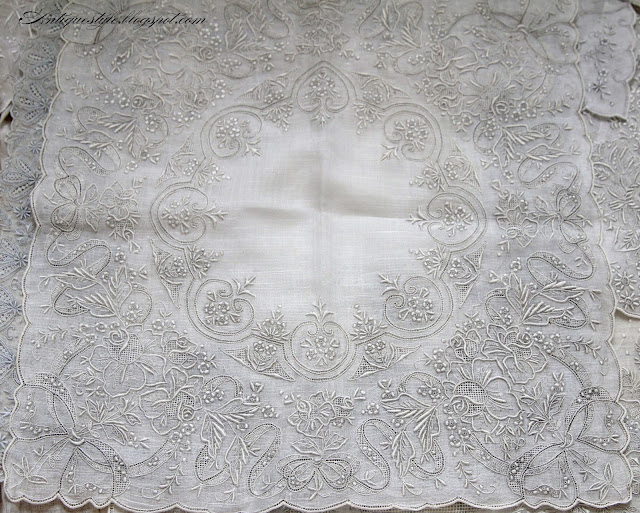
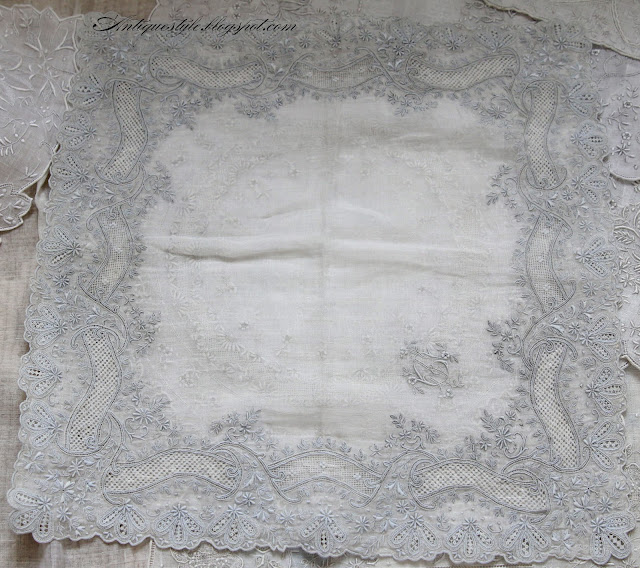
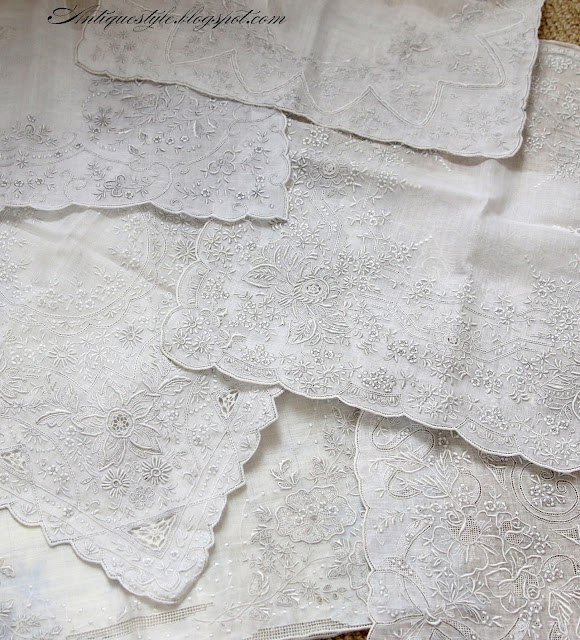
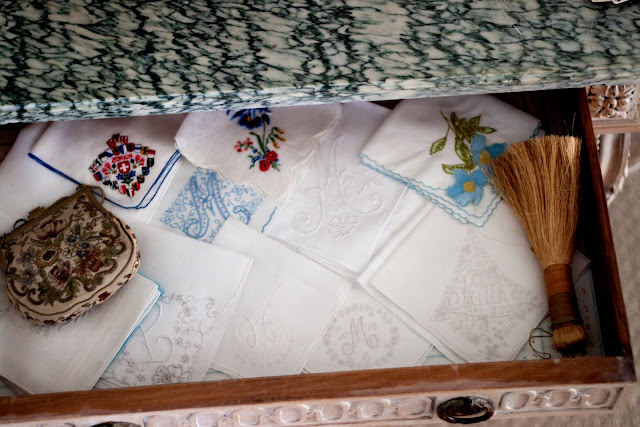
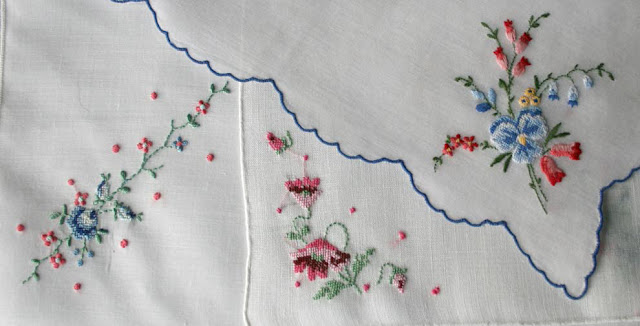
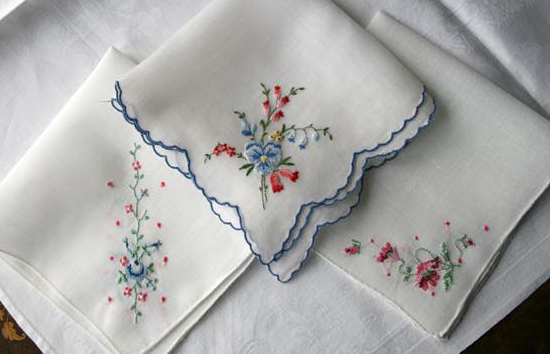
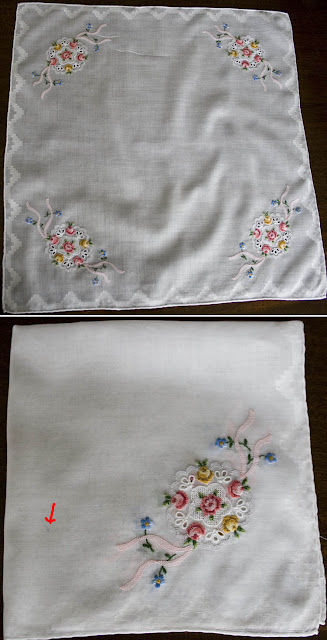
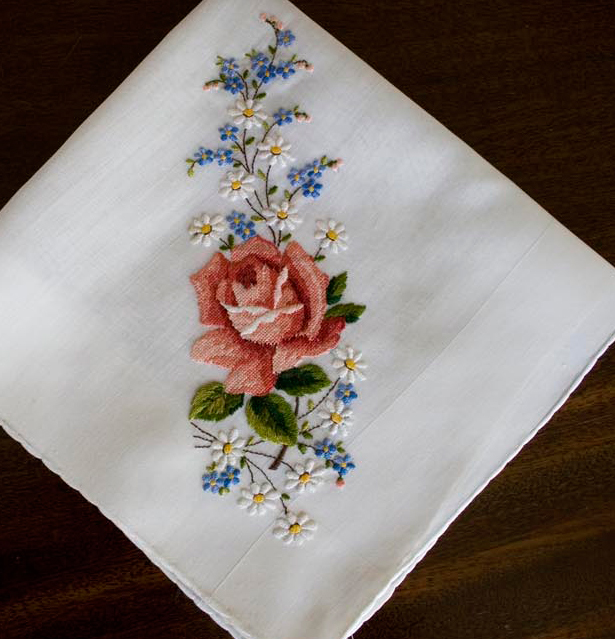
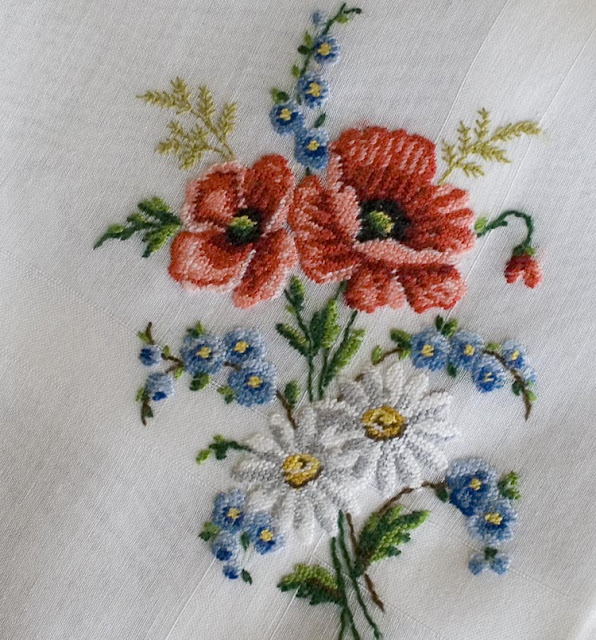
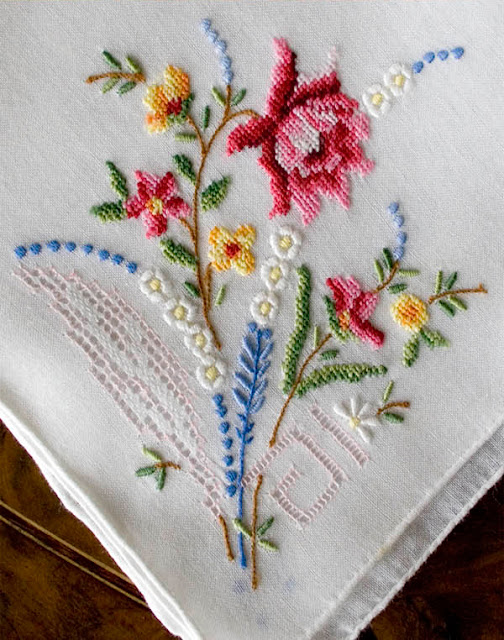
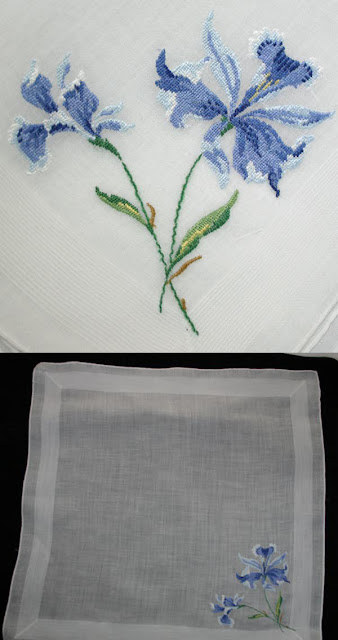
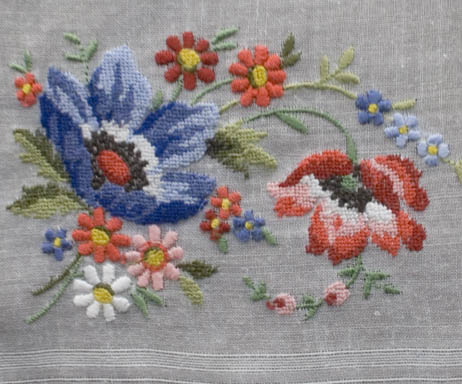
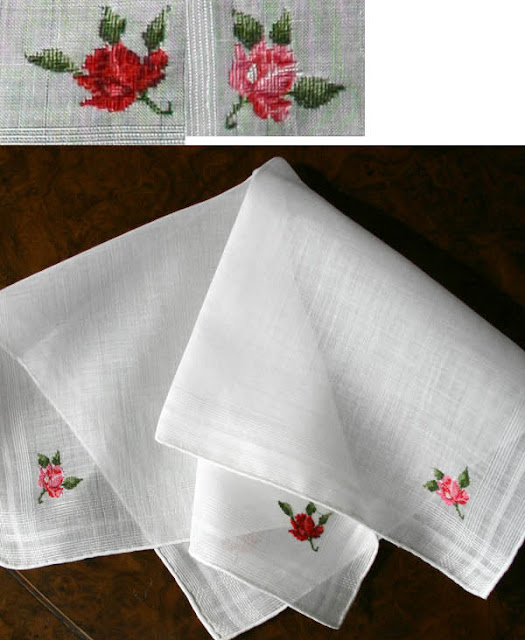
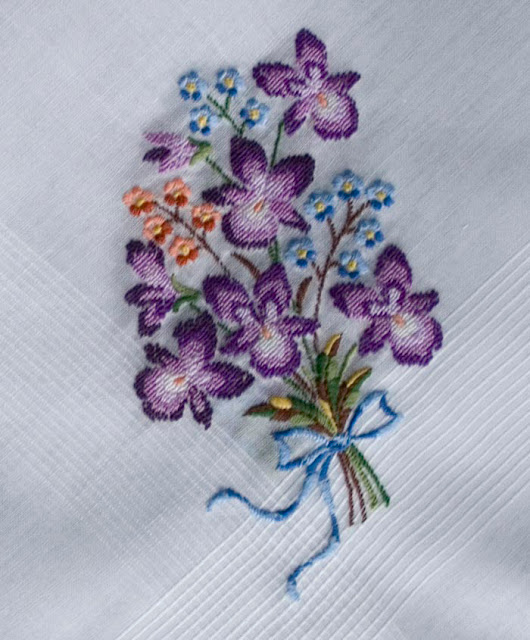
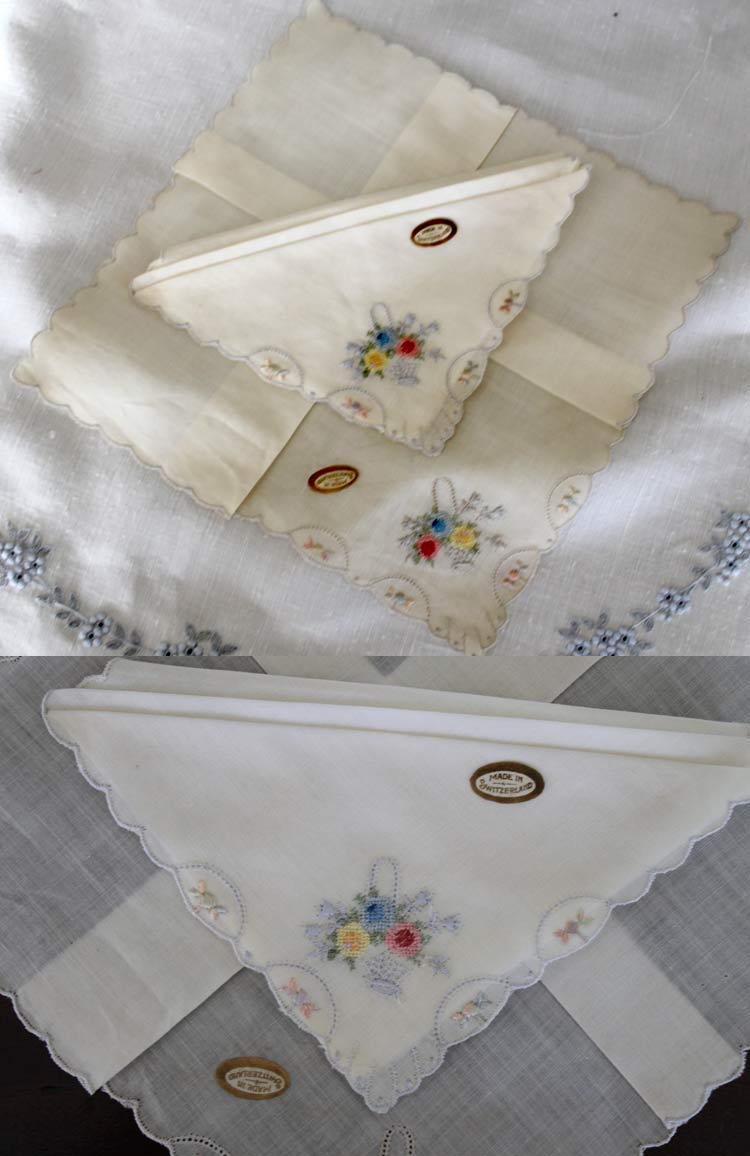
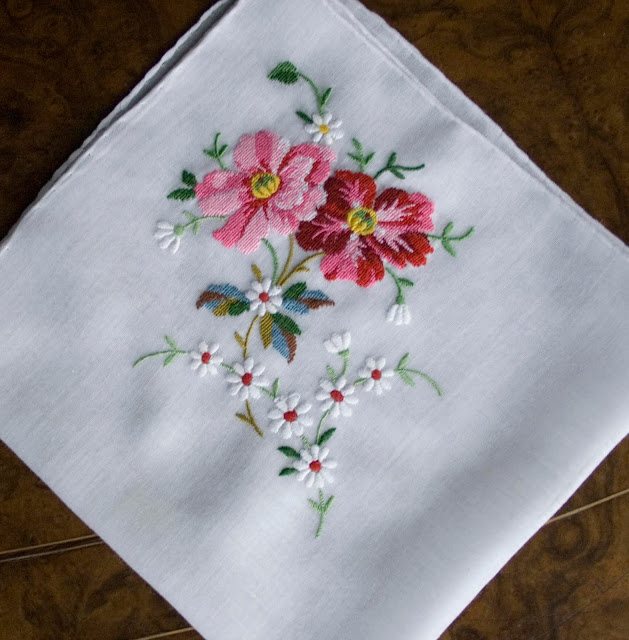
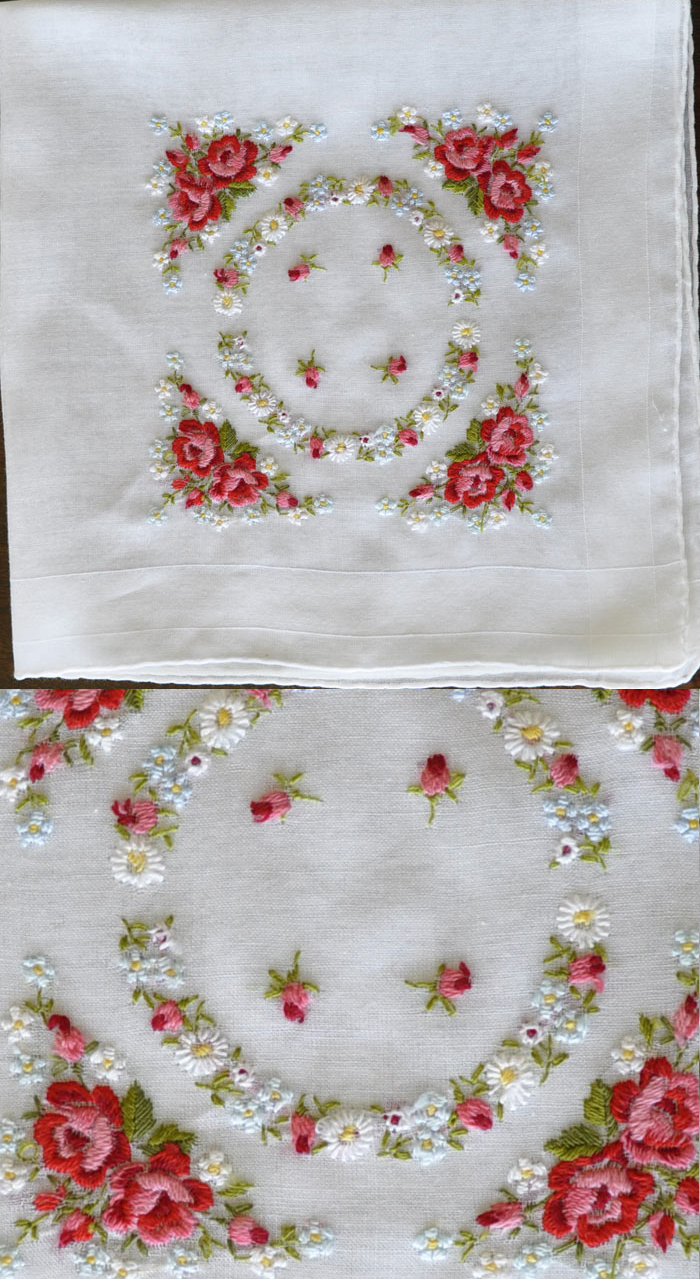
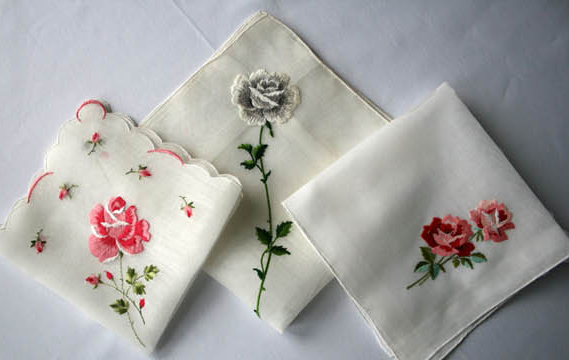
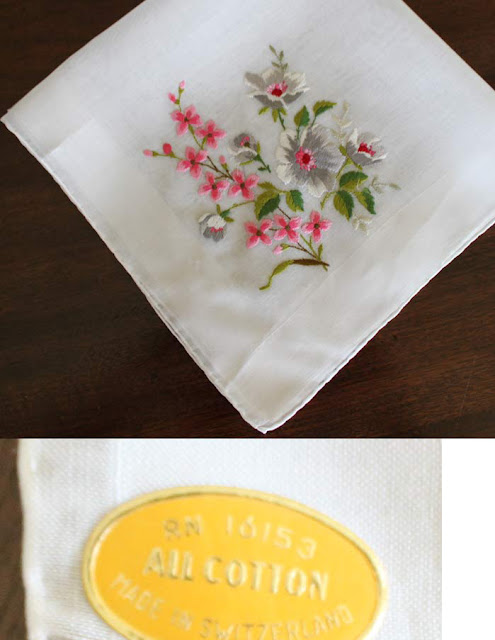
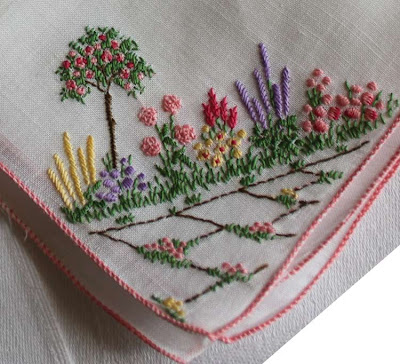
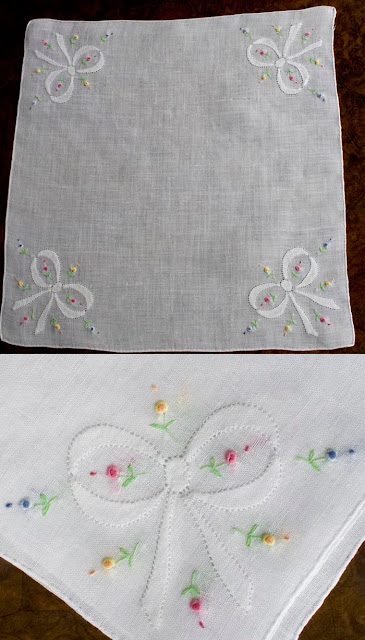
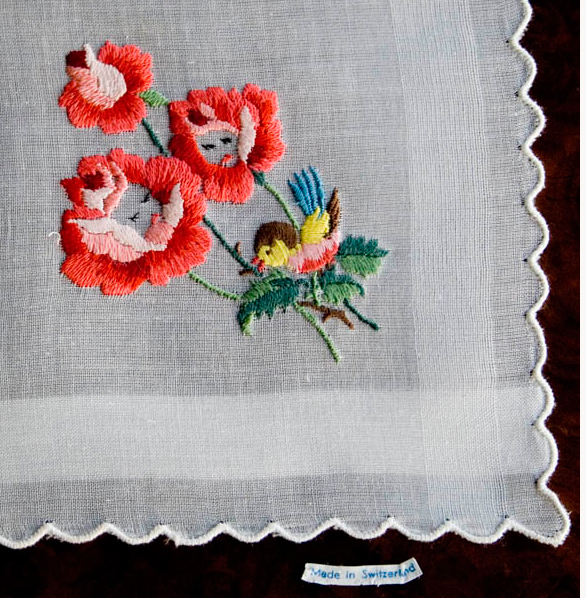
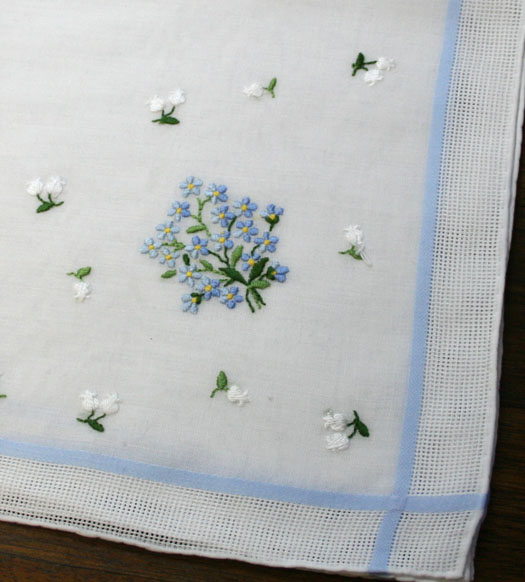
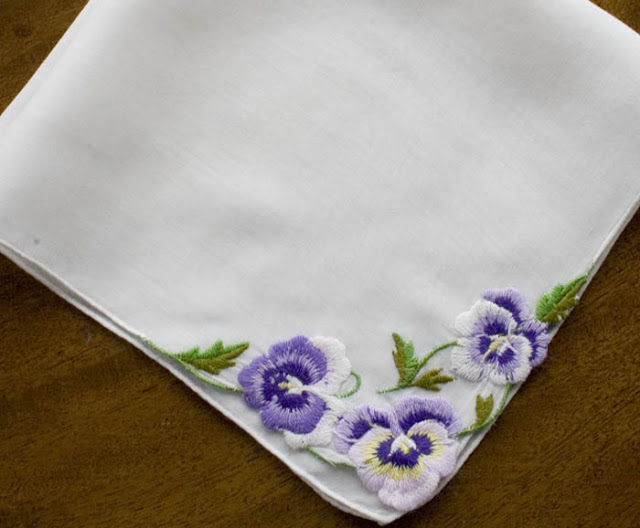
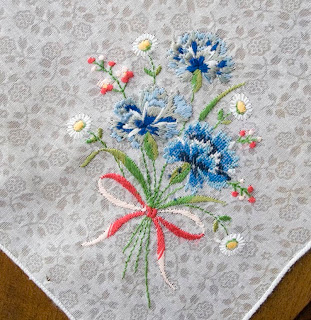
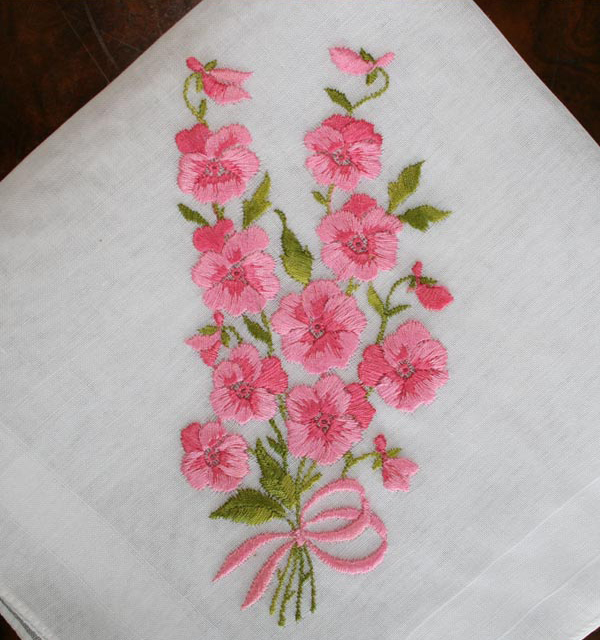
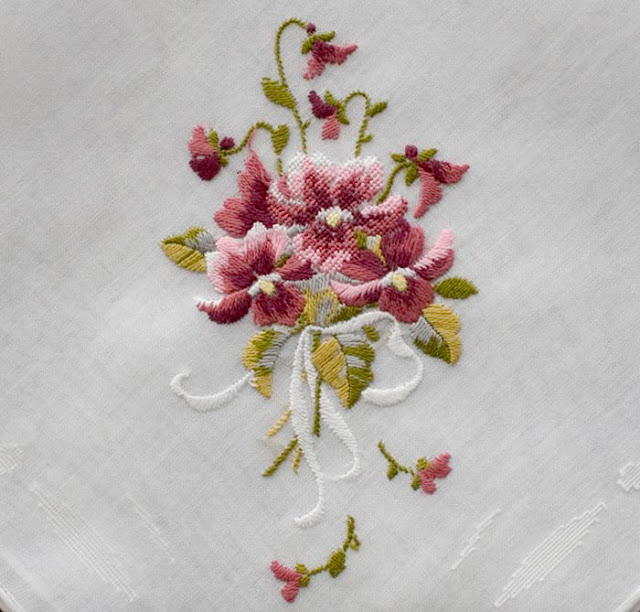
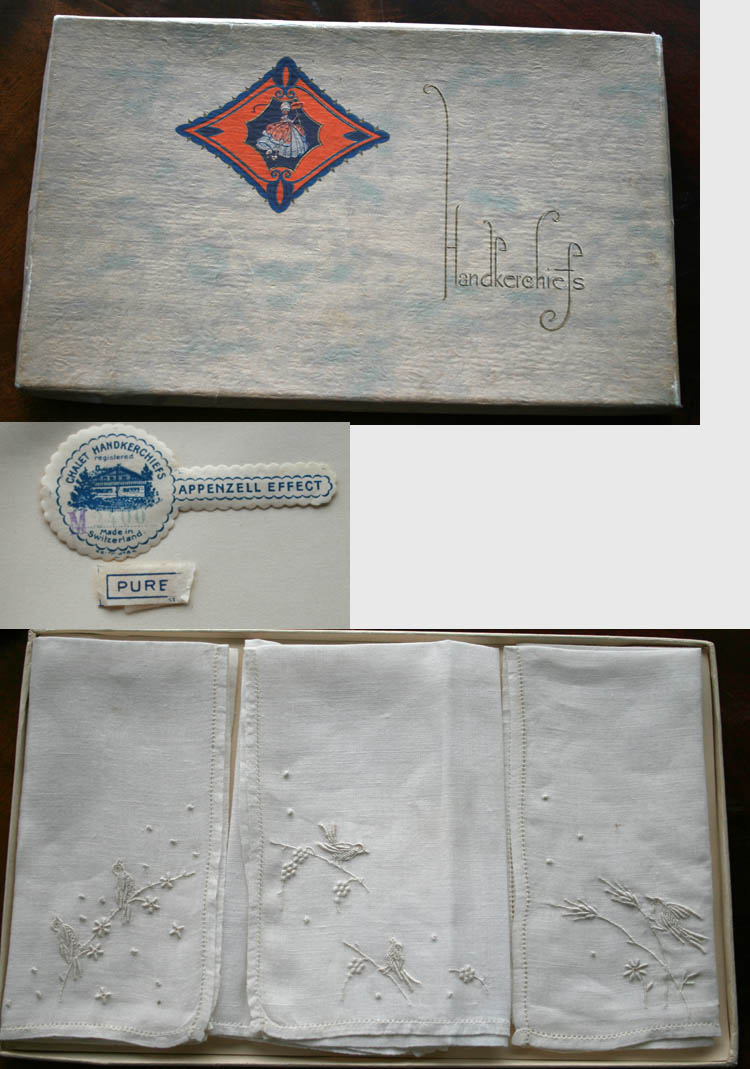
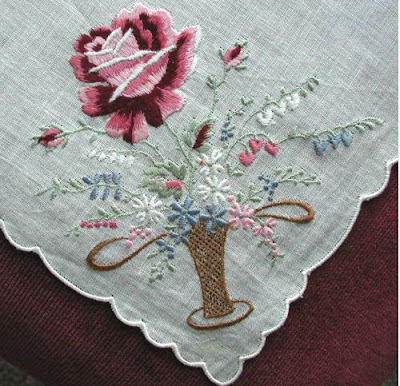
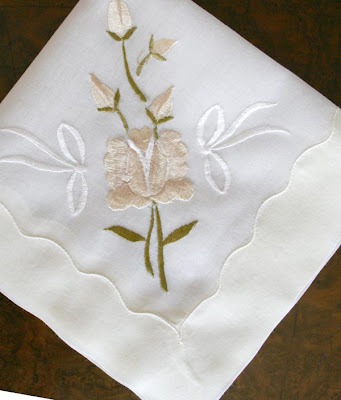
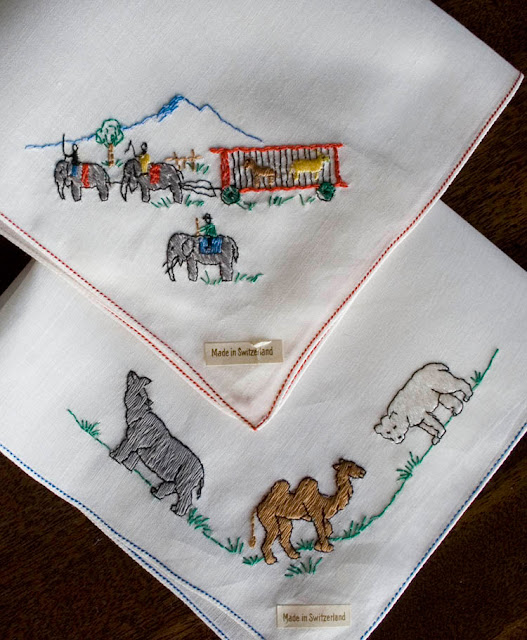
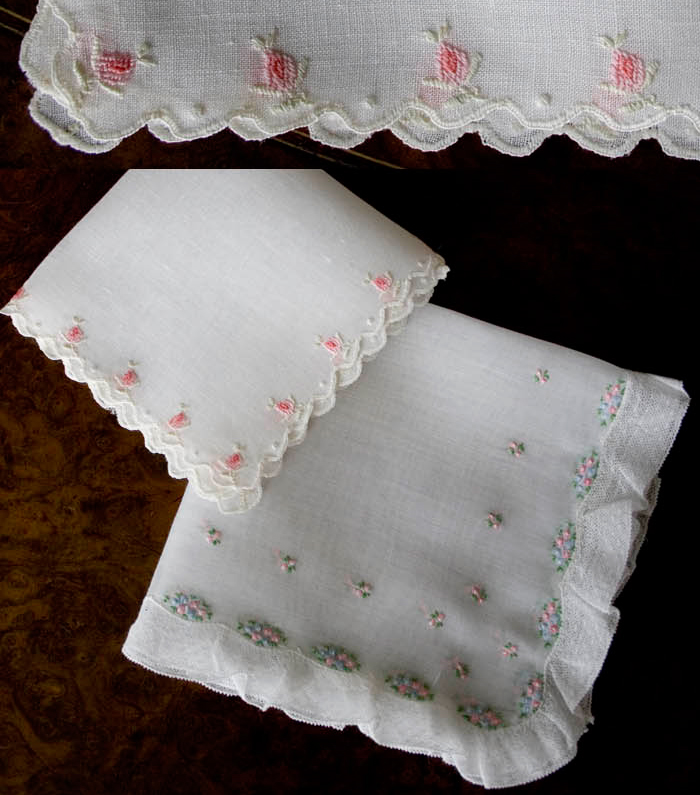
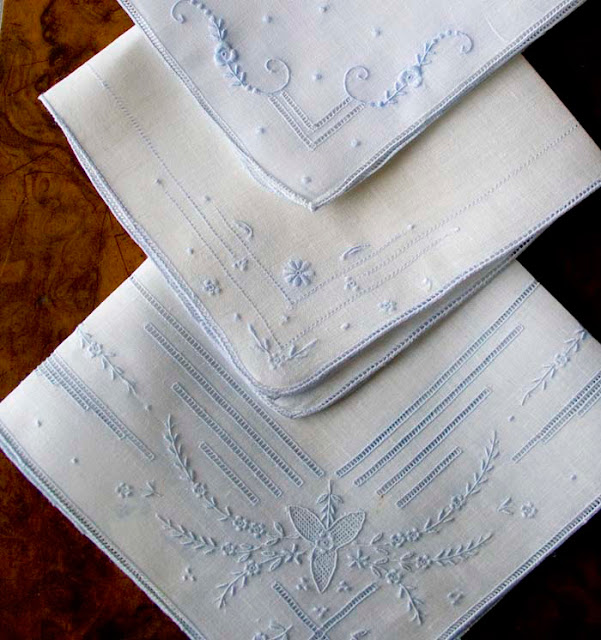
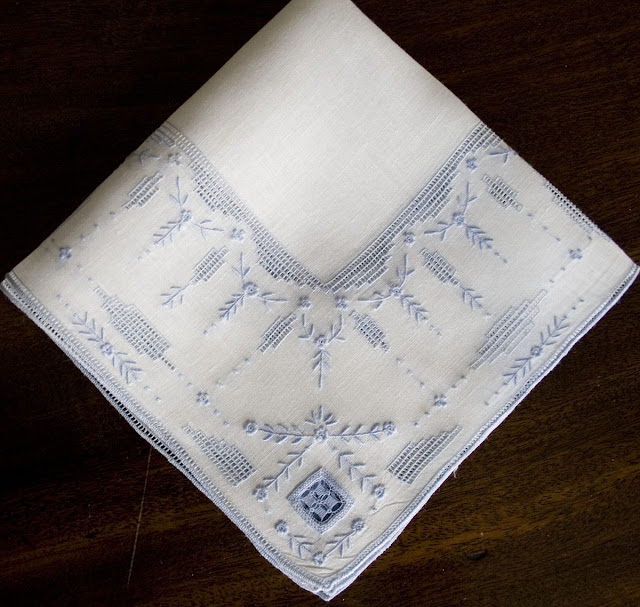
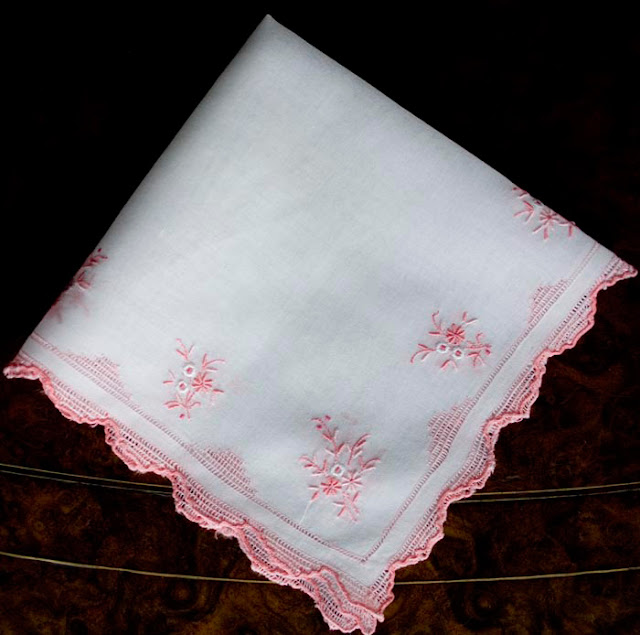
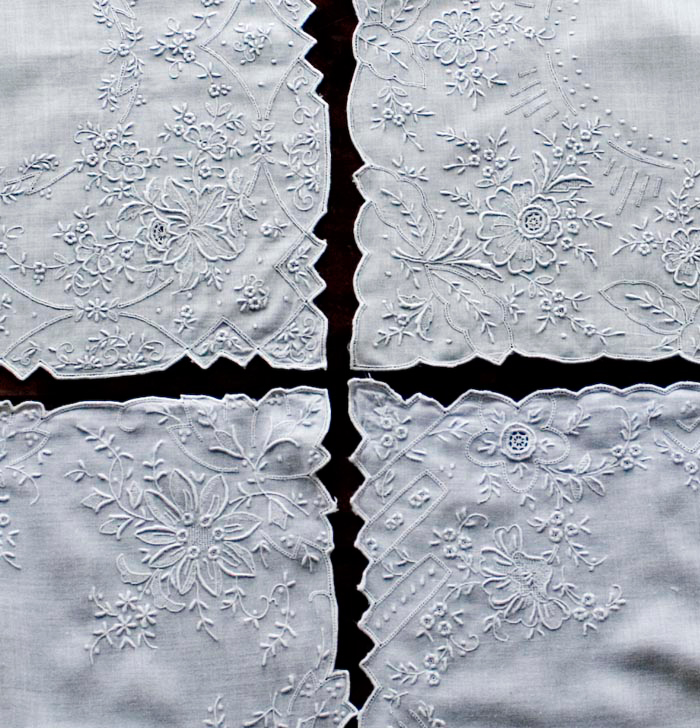
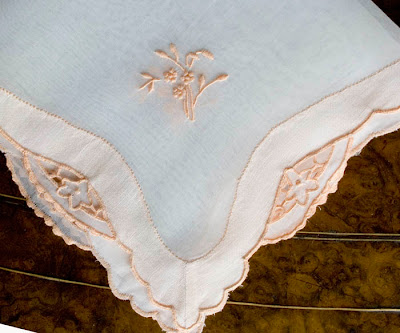
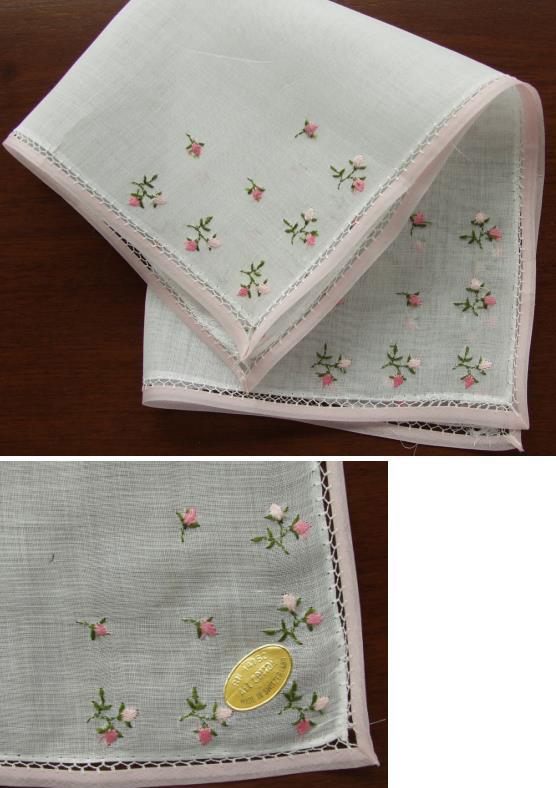
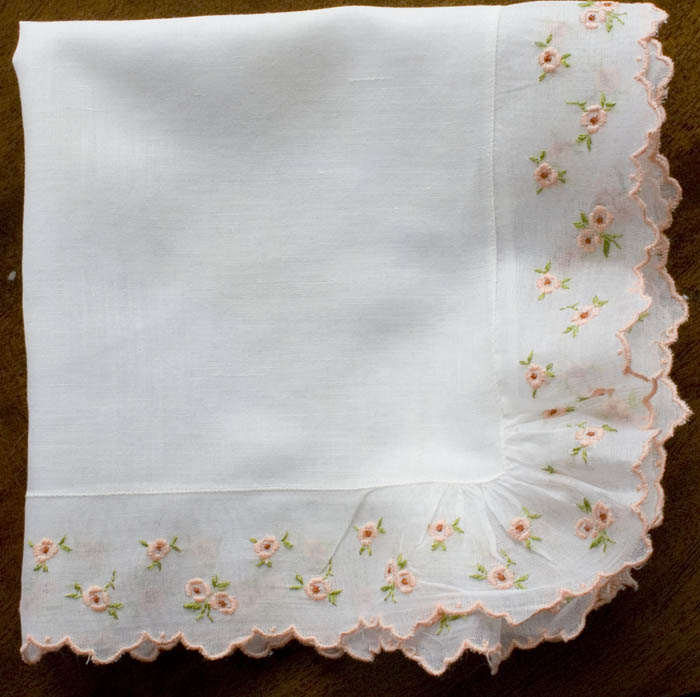
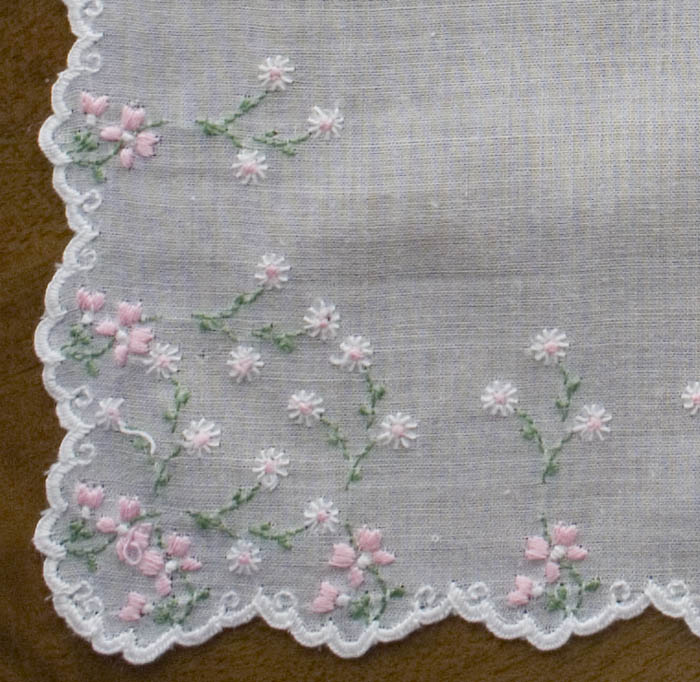
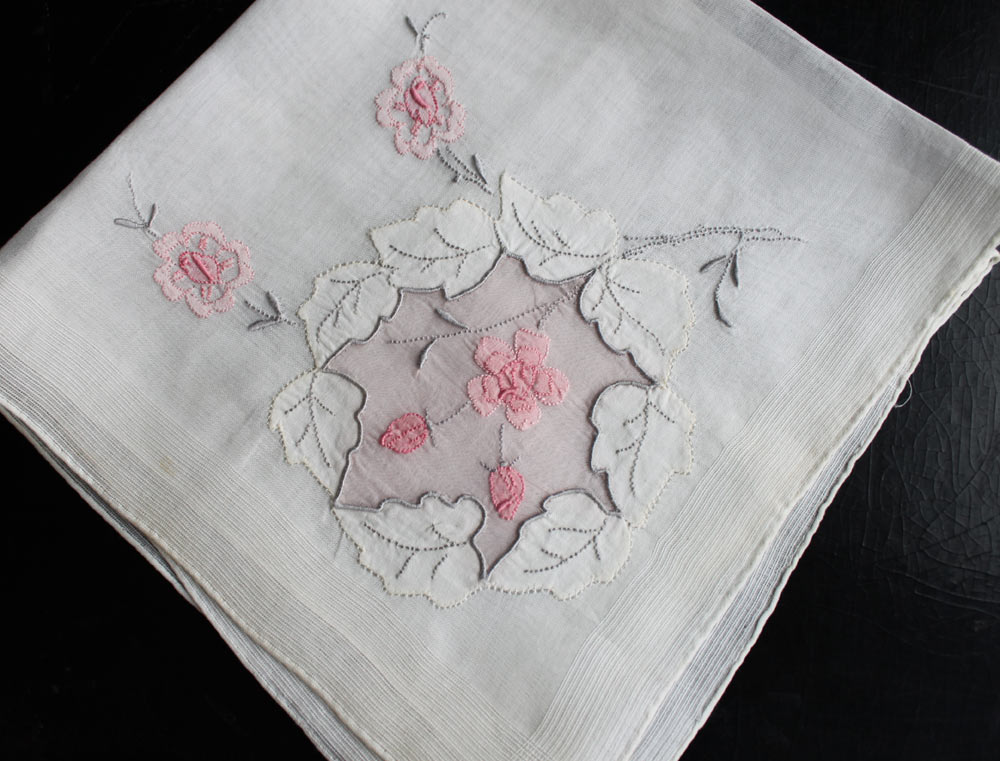
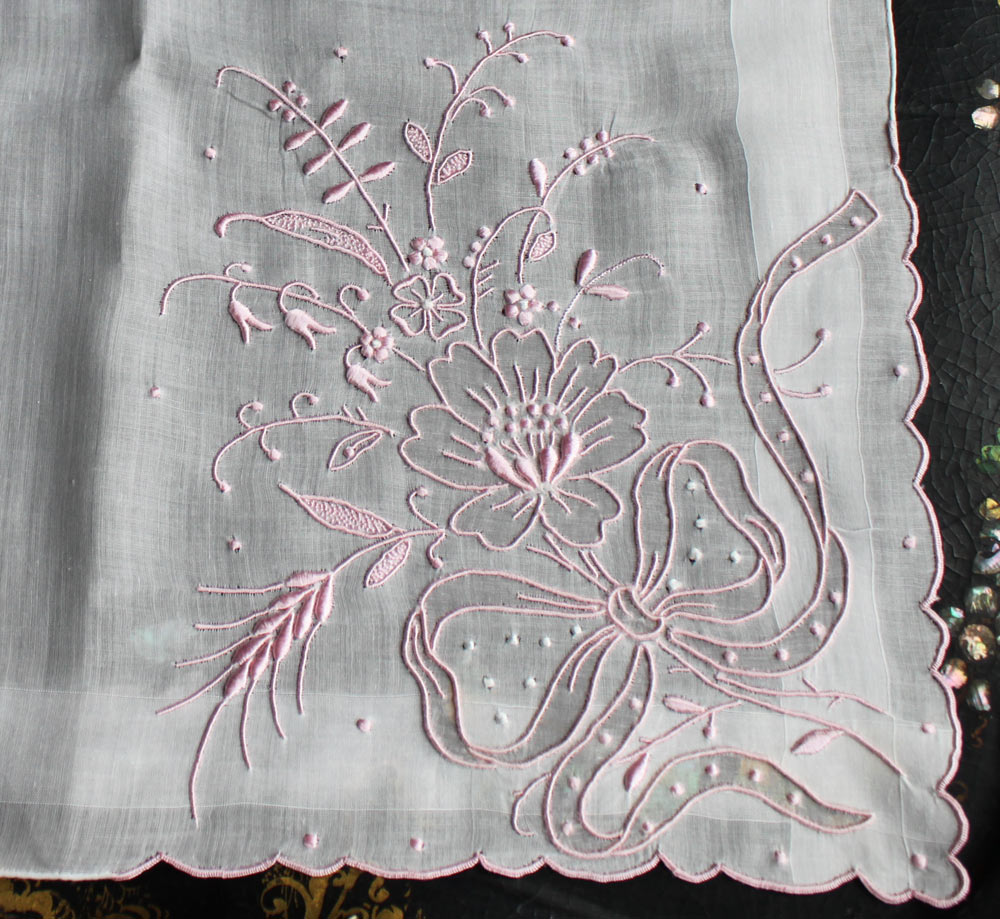
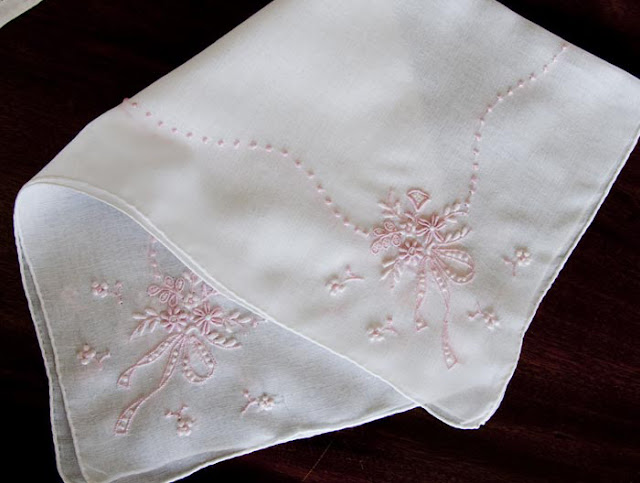
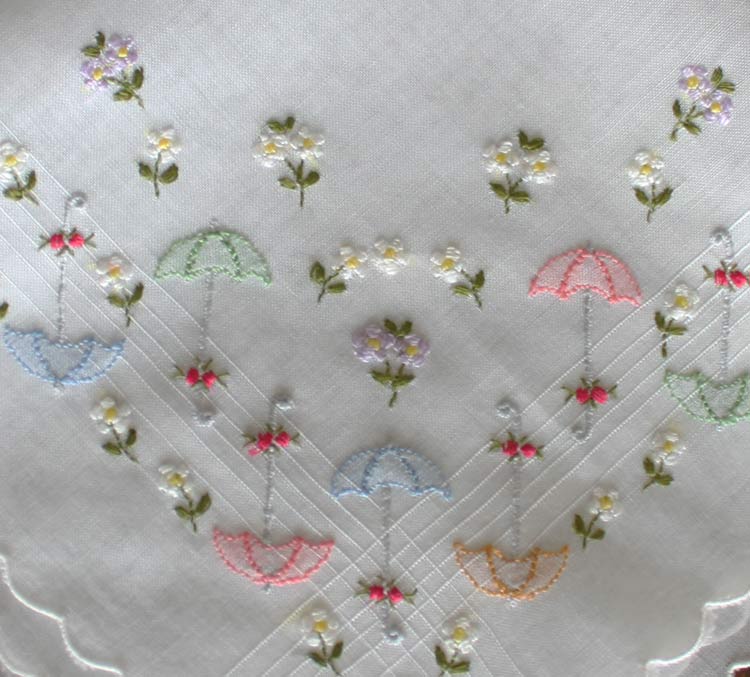
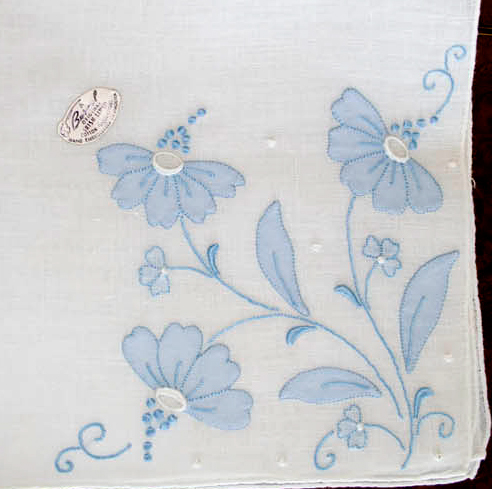
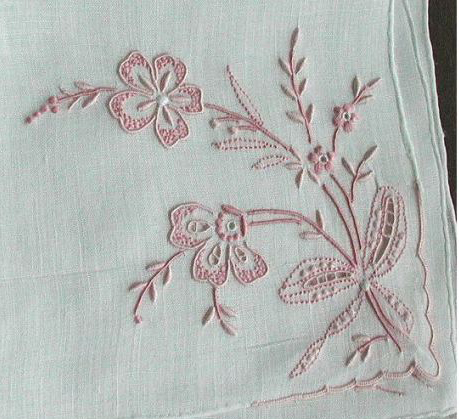
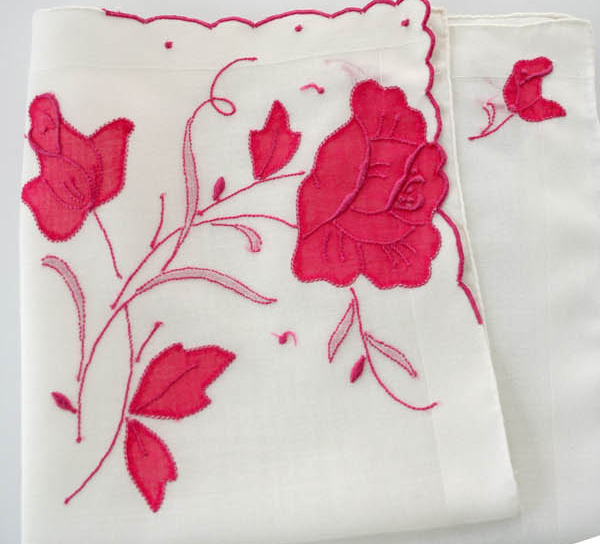
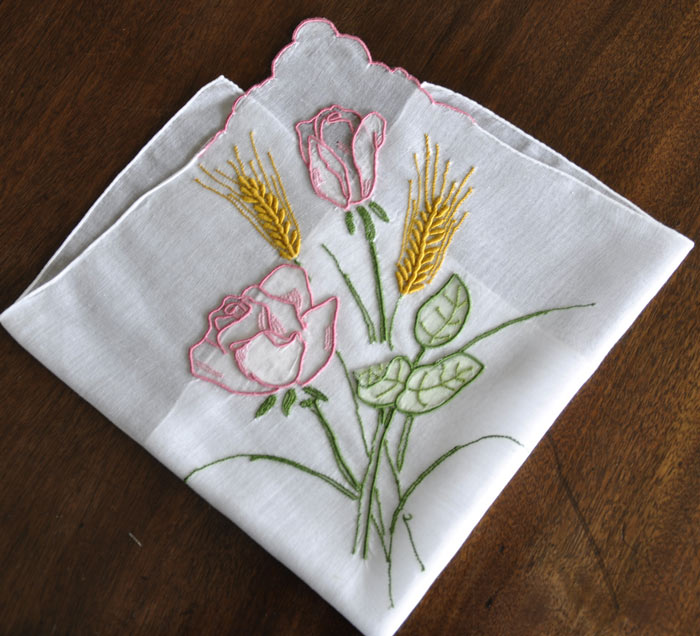
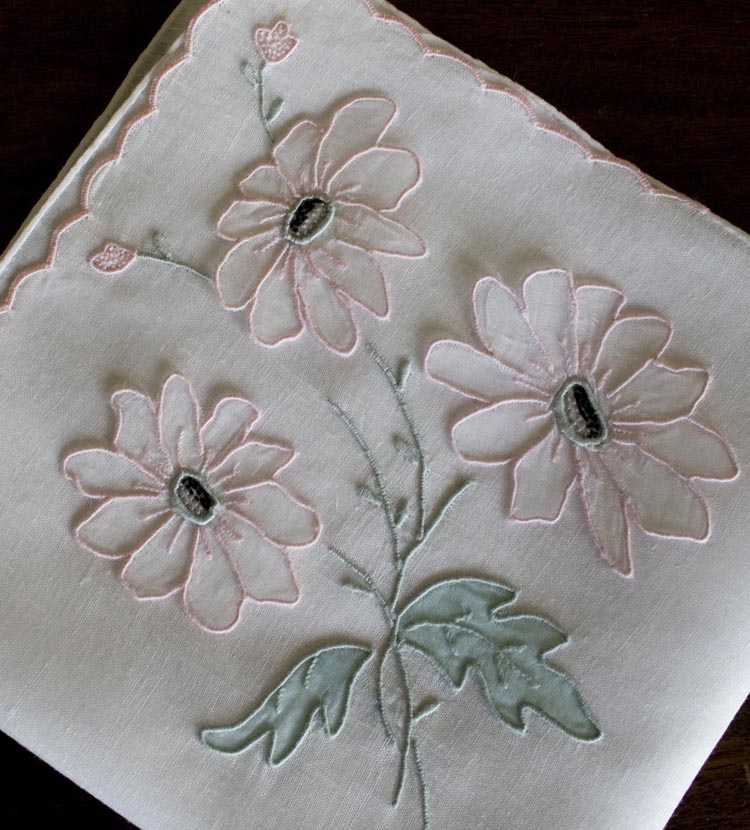
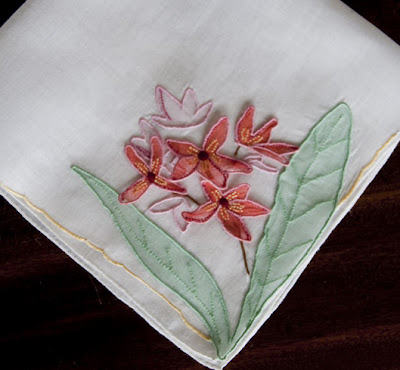
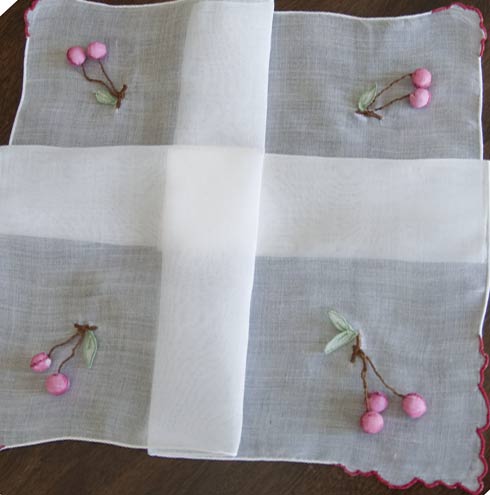
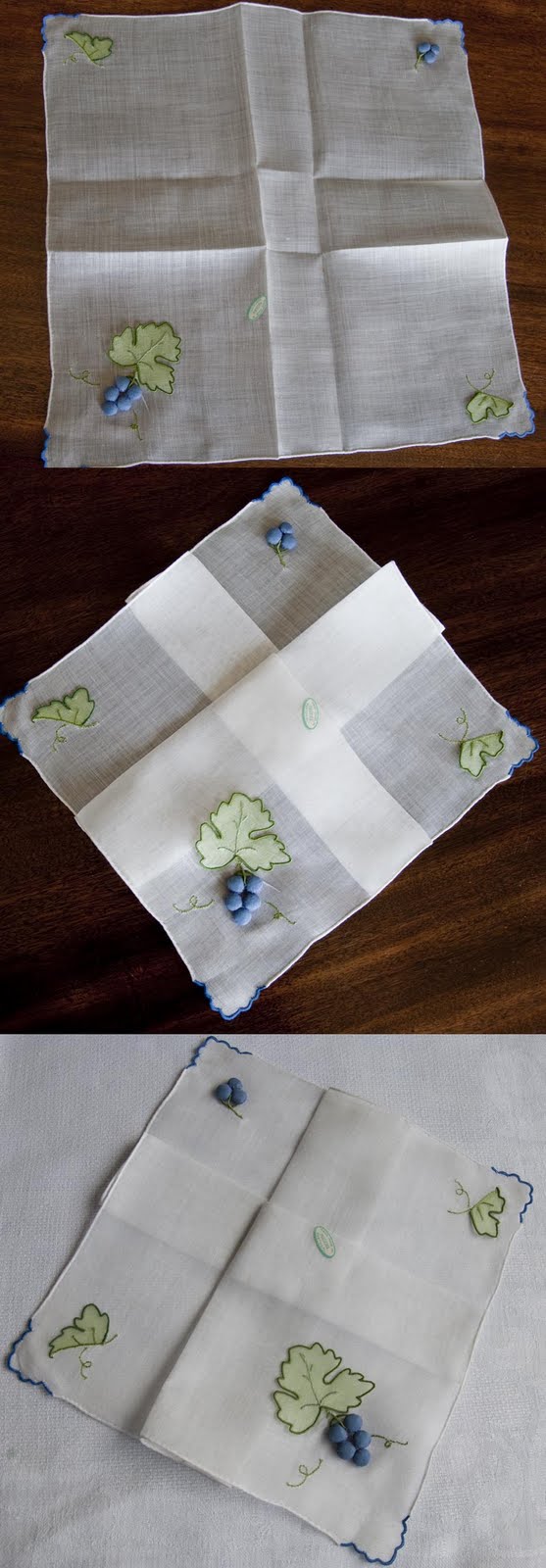
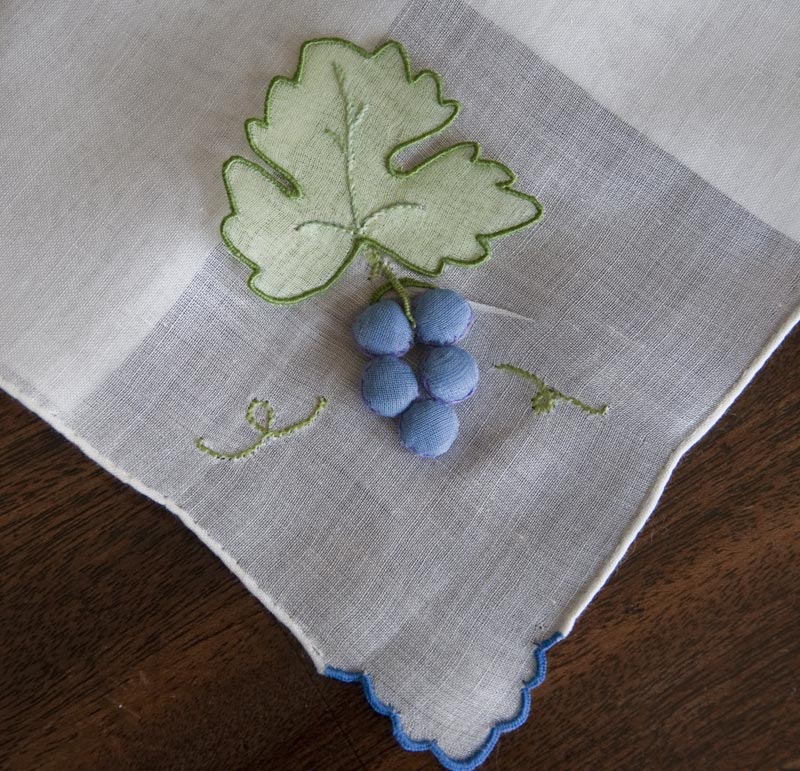
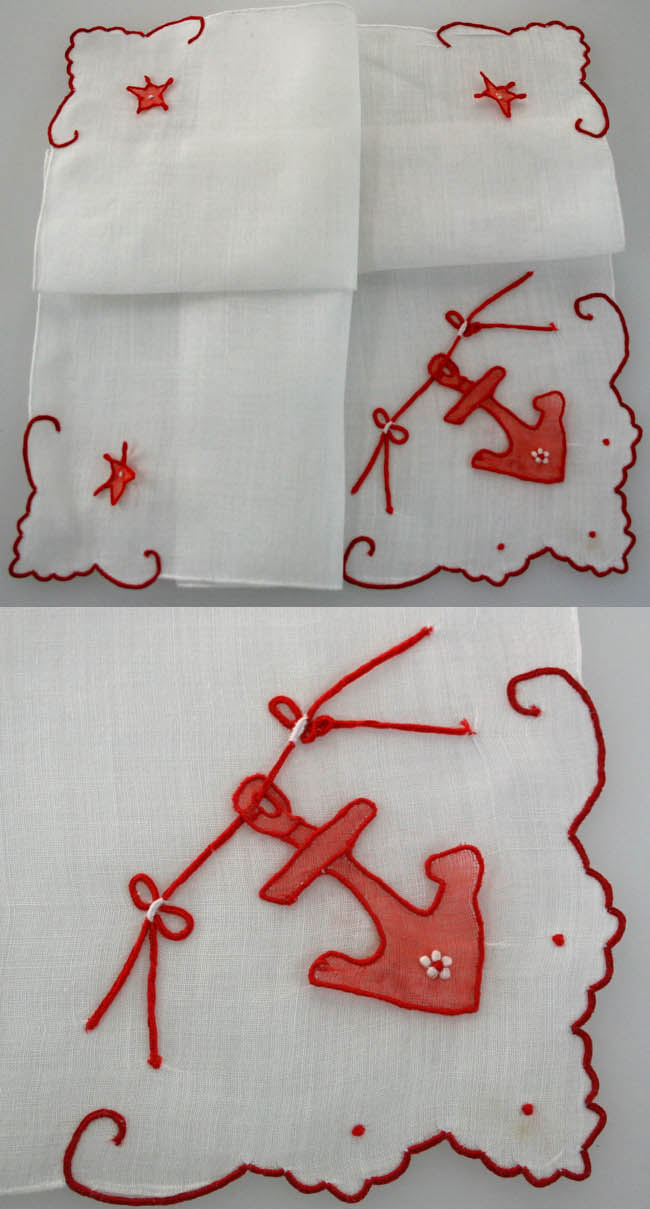
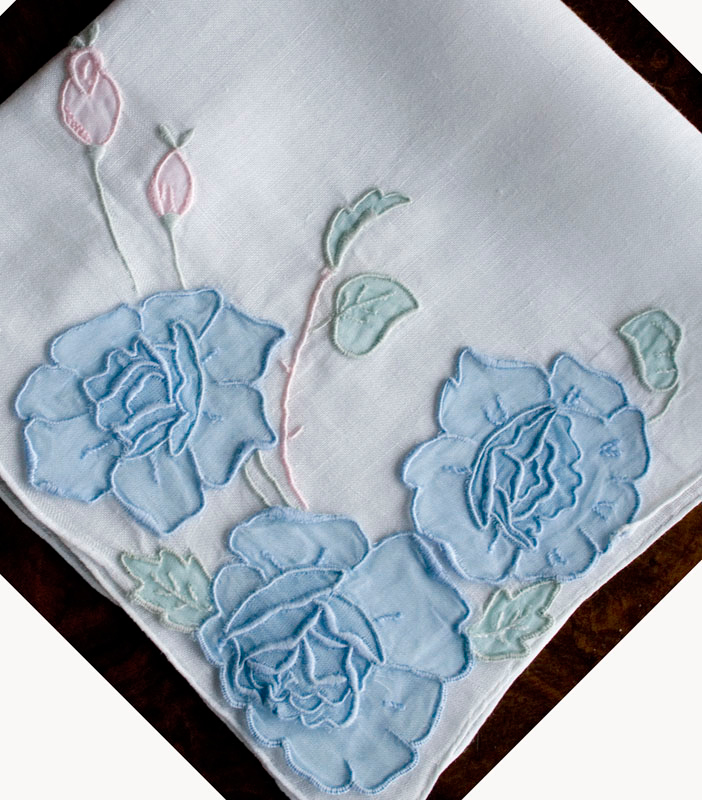
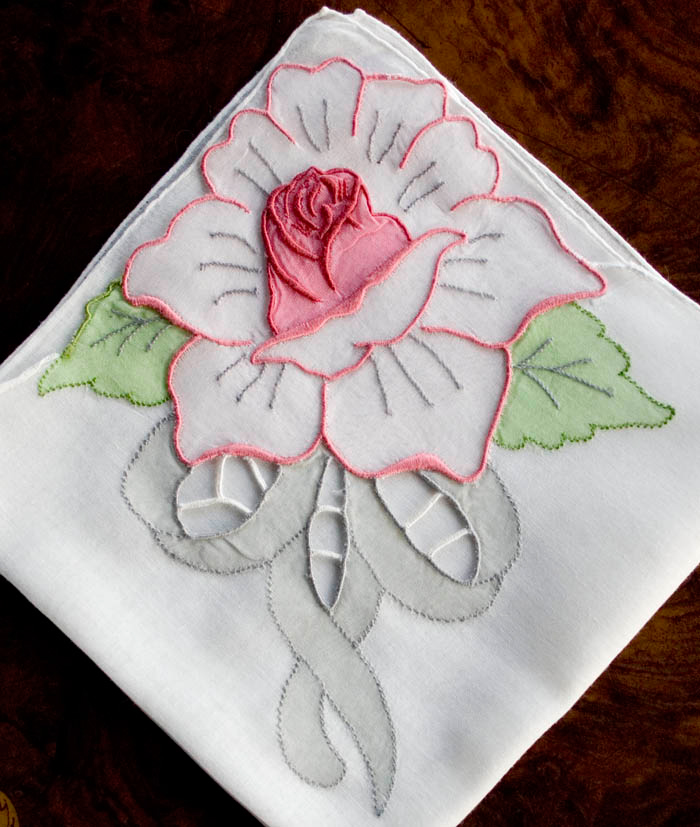
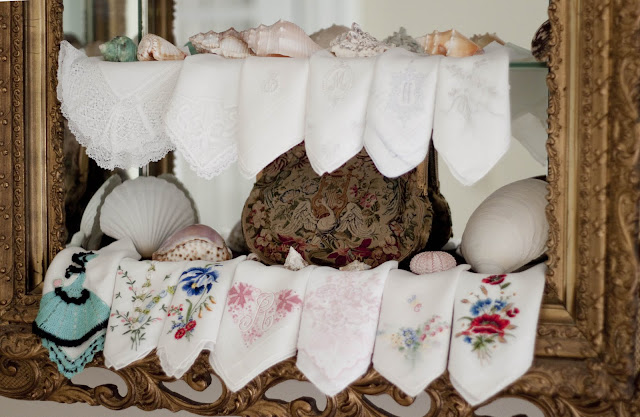
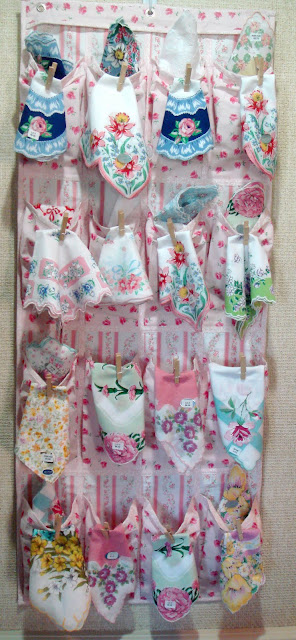
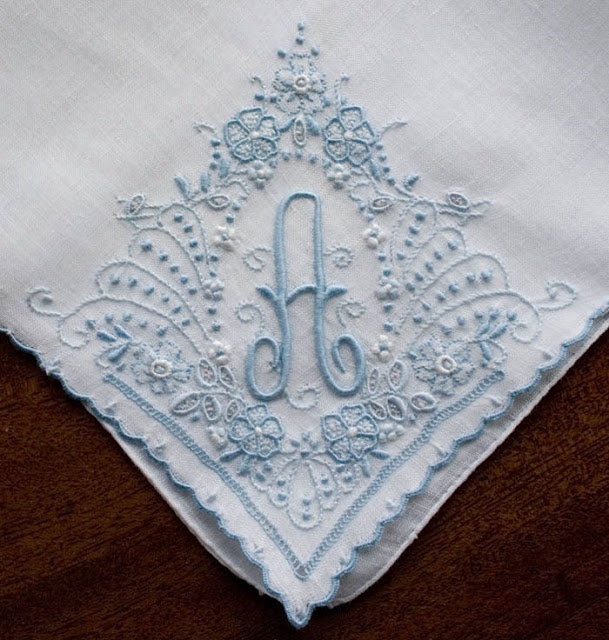 We use affiliate links in our posts and our site. This means if you make a purchase using these links, we may earn a small commission. You don’t pay a cent more than you would otherwise! Our full disclosure is available under About.
We use affiliate links in our posts and our site. This means if you make a purchase using these links, we may earn a small commission. You don’t pay a cent more than you would otherwise! Our full disclosure is available under About.
